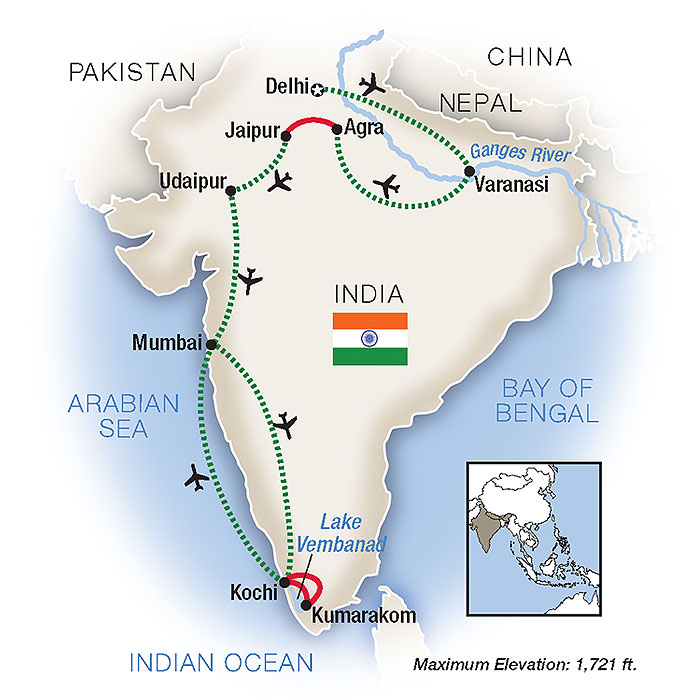
A Portrait of India
October 20 - November 6, 2024
Mike and Judy Henderson
I will leave this map on the top of this page just for reference.

++++++++++++++++++++++++++++++++++++++++++++++
10/22/2024 (Tuesday, Delhi to Varanasi) We fly to Varanasi this morning. Having gone to bed early last night, we woke up about 4am this morning. The restaurant opened for us at 5:30am and we met to take the bus at 6:15am.
Going through security was an experience - the Indian security people seem to key on any wires, and we had a lot of USB cables. It took a while for us to get through security.
We went to the gate and boarded a bus to the aircraft. Incidently, the name of the airline is IndiGo, a play on the dye (and color) indigo. The indigo plant was cultivated in east Asia.
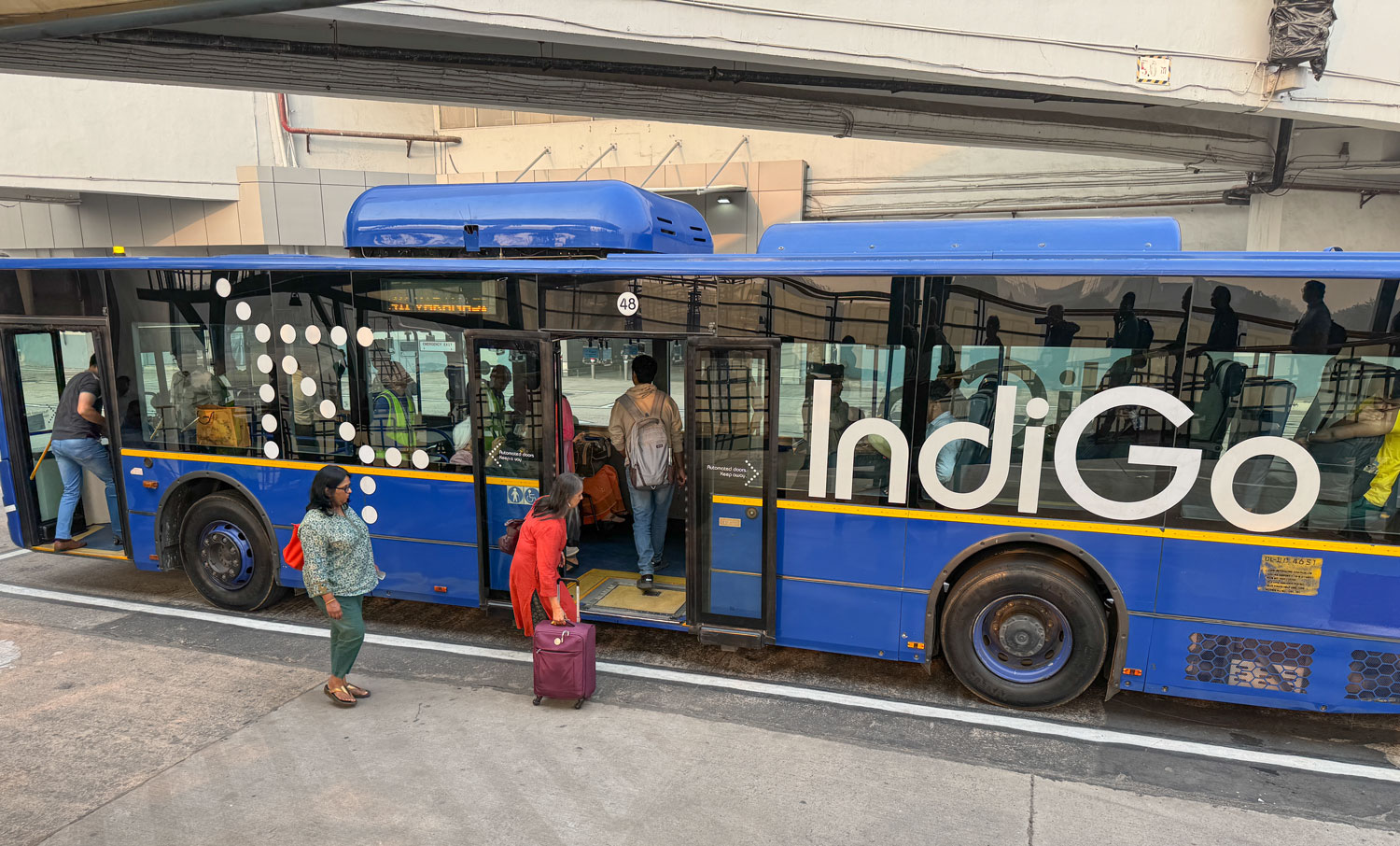
The back-and-forth ramp, instead of stairs, made it easier to get carry-ons into the cabin. And, if necessary, they could roll a wheelchair up or down the ramp. I took this picture on a later flight.

Tauck got us aisles-across which was very nice compared to being stuck in a middle seat. Judy had a large middle-aged Indian guy next to her who took his shoes off and then put his foot on top of his leg, nearly in her lap, and played with his toes. And when we arrived, he wanted to crawl over Judy before the aircraft stopped so he could get out faster. I had to stop him.
Many of the Indian men seem to have an entitled attitude that they should be first and everyone else should wait. That's based on more than this one incident.
We drove to the Sarnath Archaeological Museum. First we visited the grounds. Here are a few pictures.
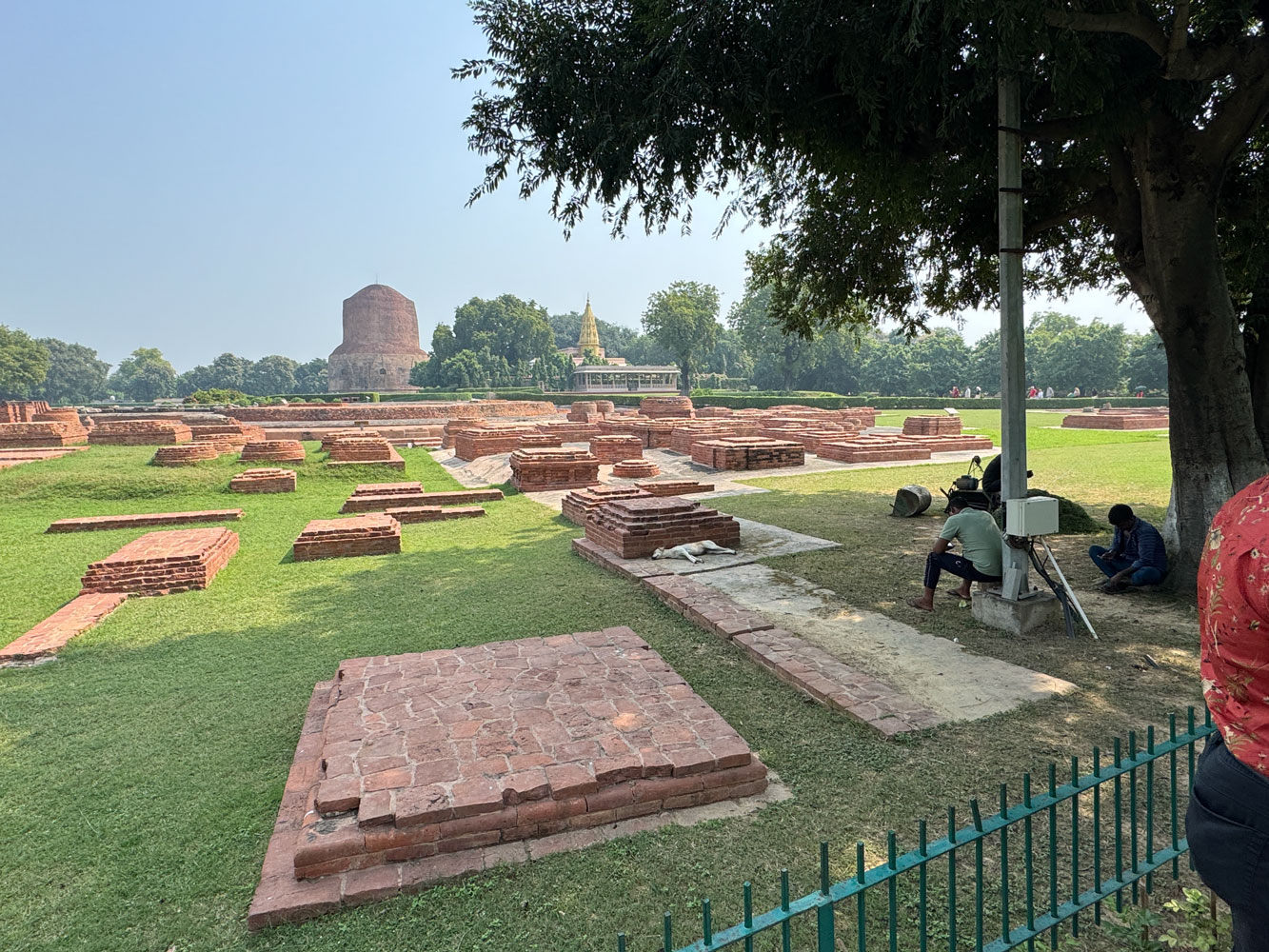
This is the Dhamekh Stupa, built in the 5th or 6th century.
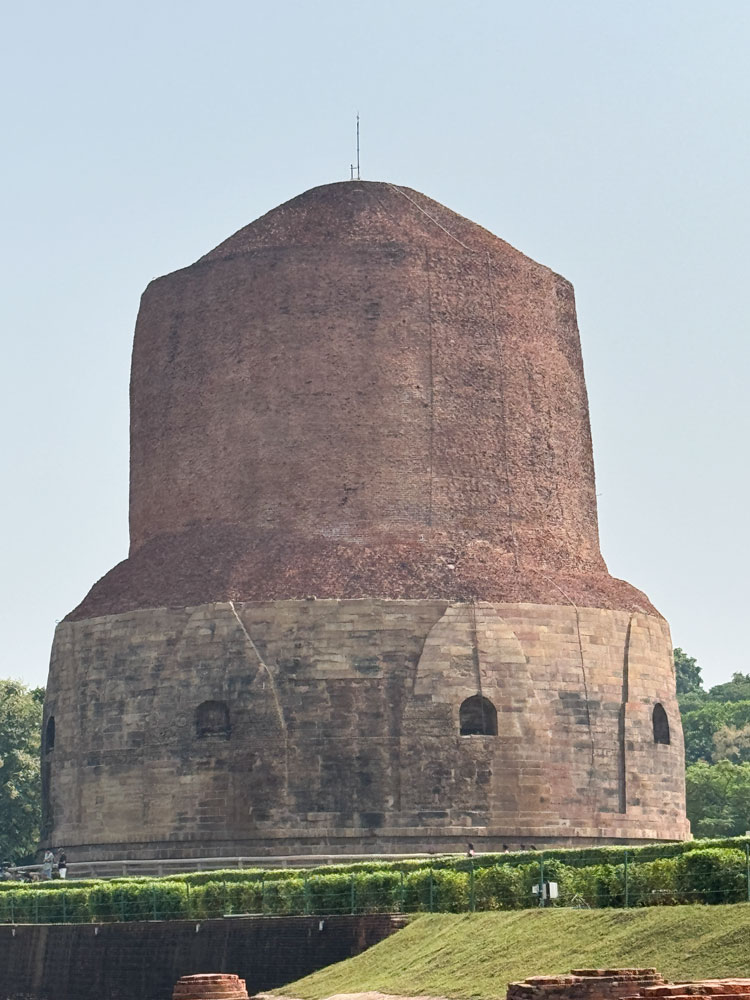
Then we went to the museum, but were not allowed to take pictures.
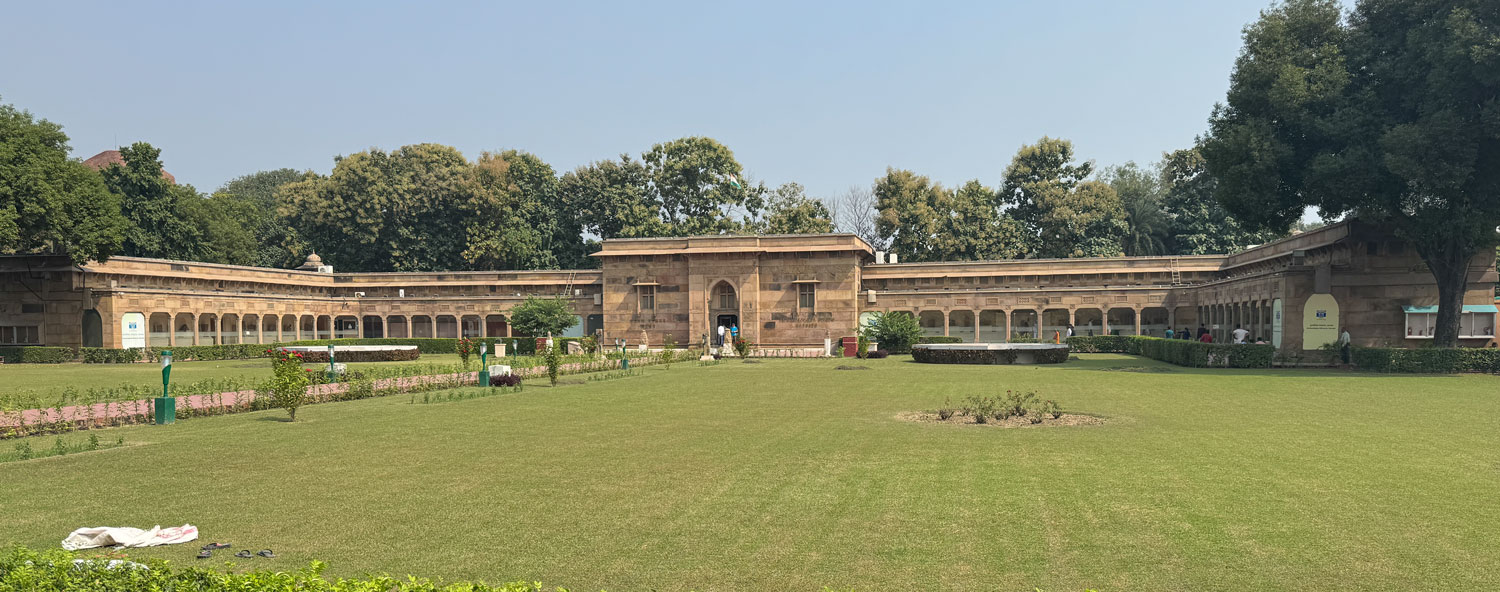
Perhaps the most interesting exhibit in the museum was the Lion Capital of Ashoak. I found this picture on the web. It's made of polished sandstone.
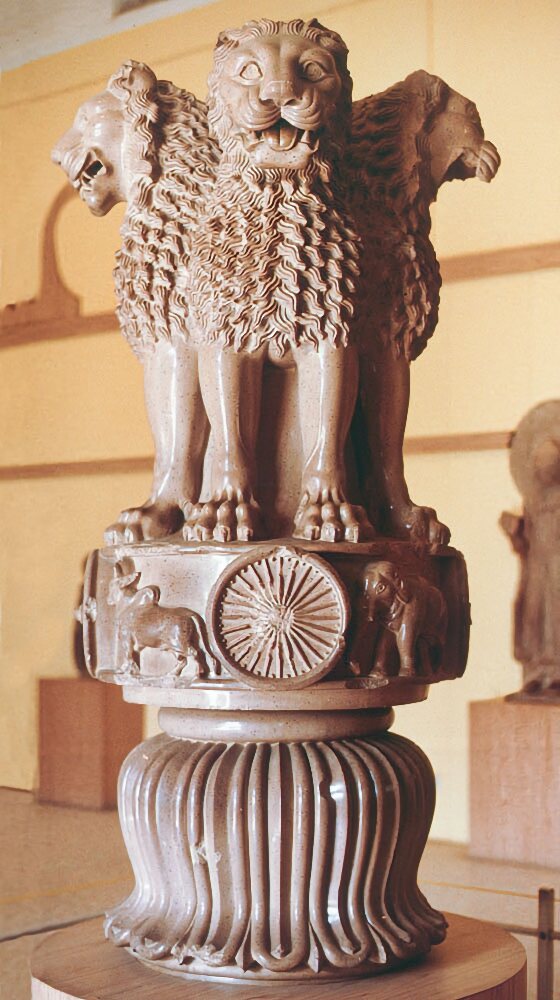
After that, it was late enough to check into the hotel, the Taj Ganges. It's a nice hotel, a lot smaller than the Leela Palace.
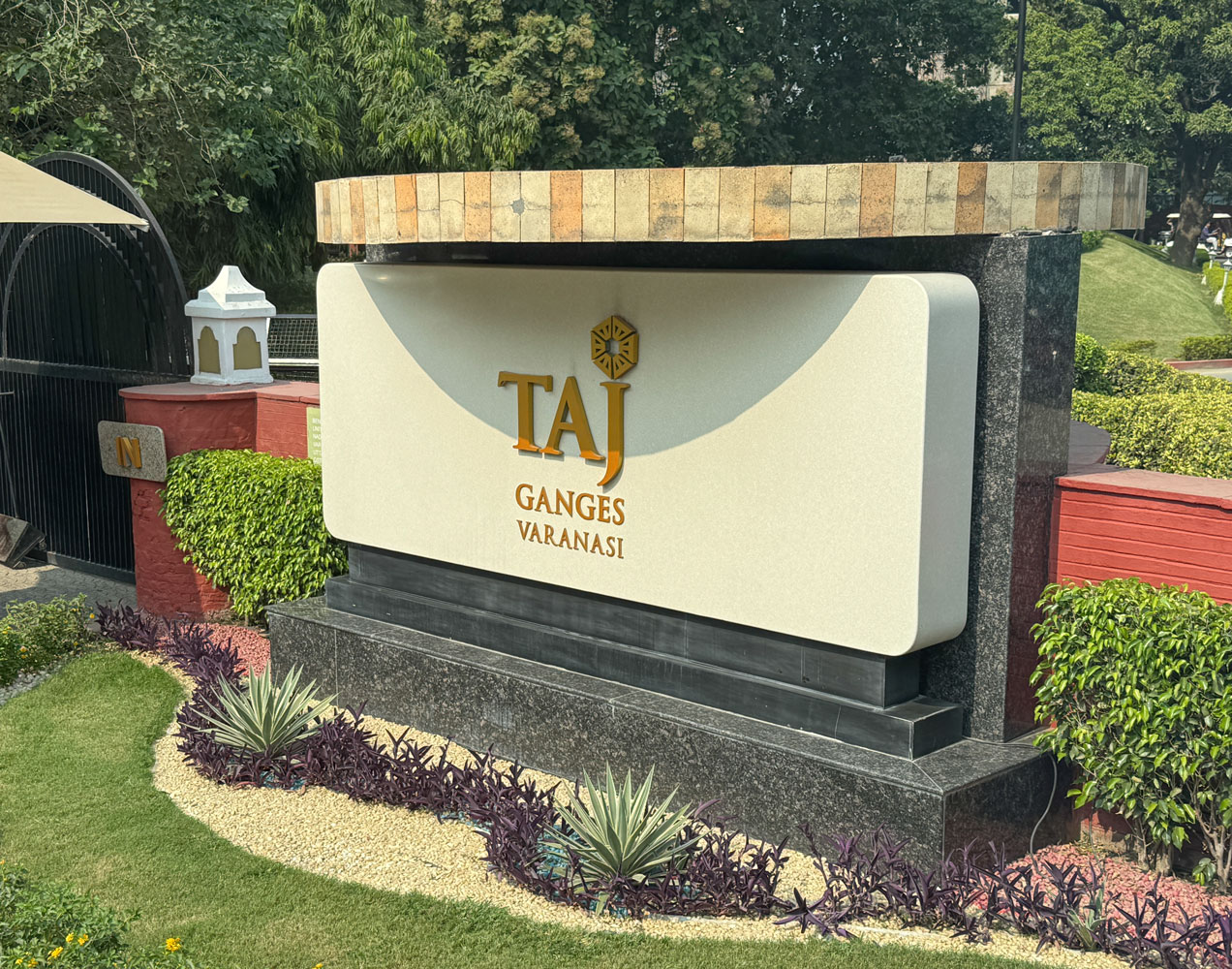
Here's our room, smaller than our room at the Leela Palace, with a walk-in shower and Internet access that is acceptably fast.
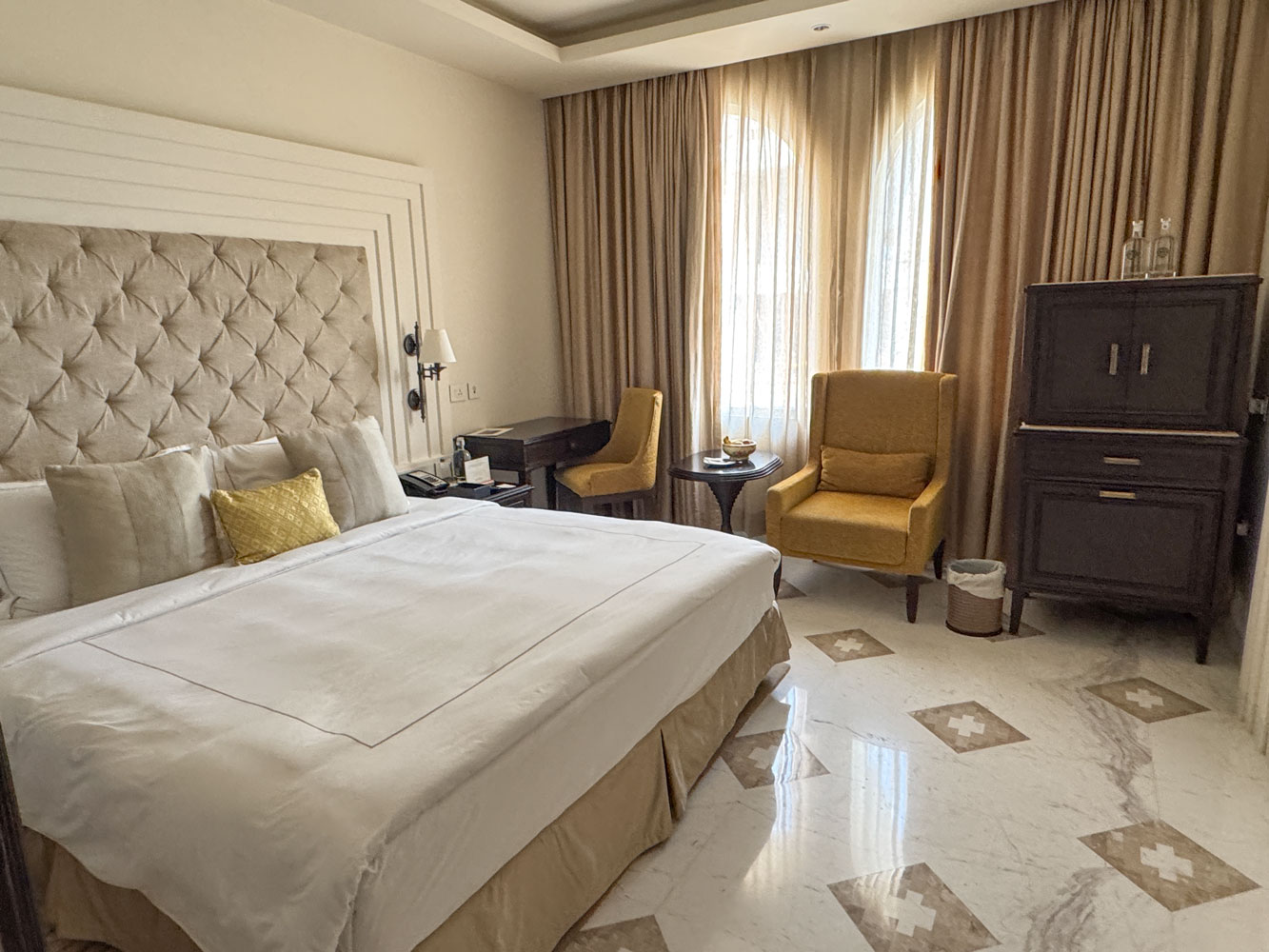
We had some time to rest, and at 5pm we left to go to the Ganges. We're going to take a boat ride to see some of the cremations being done on the bank of the river. Then we'll go to a location where Hindu priests perform the Ganga Aarti ceremony to put the river to sleep. This a ritual that is repeated every evening.
We boarded three smaller buses to drive to the river.
When we got there, we walked down to the river. This was our first view of the Ganges River. That bridge is the Malviya Bridge, built by the British in 1887, and still in use. It's a double decker bridge, with autos on the upper deck and trains on the lower deck.
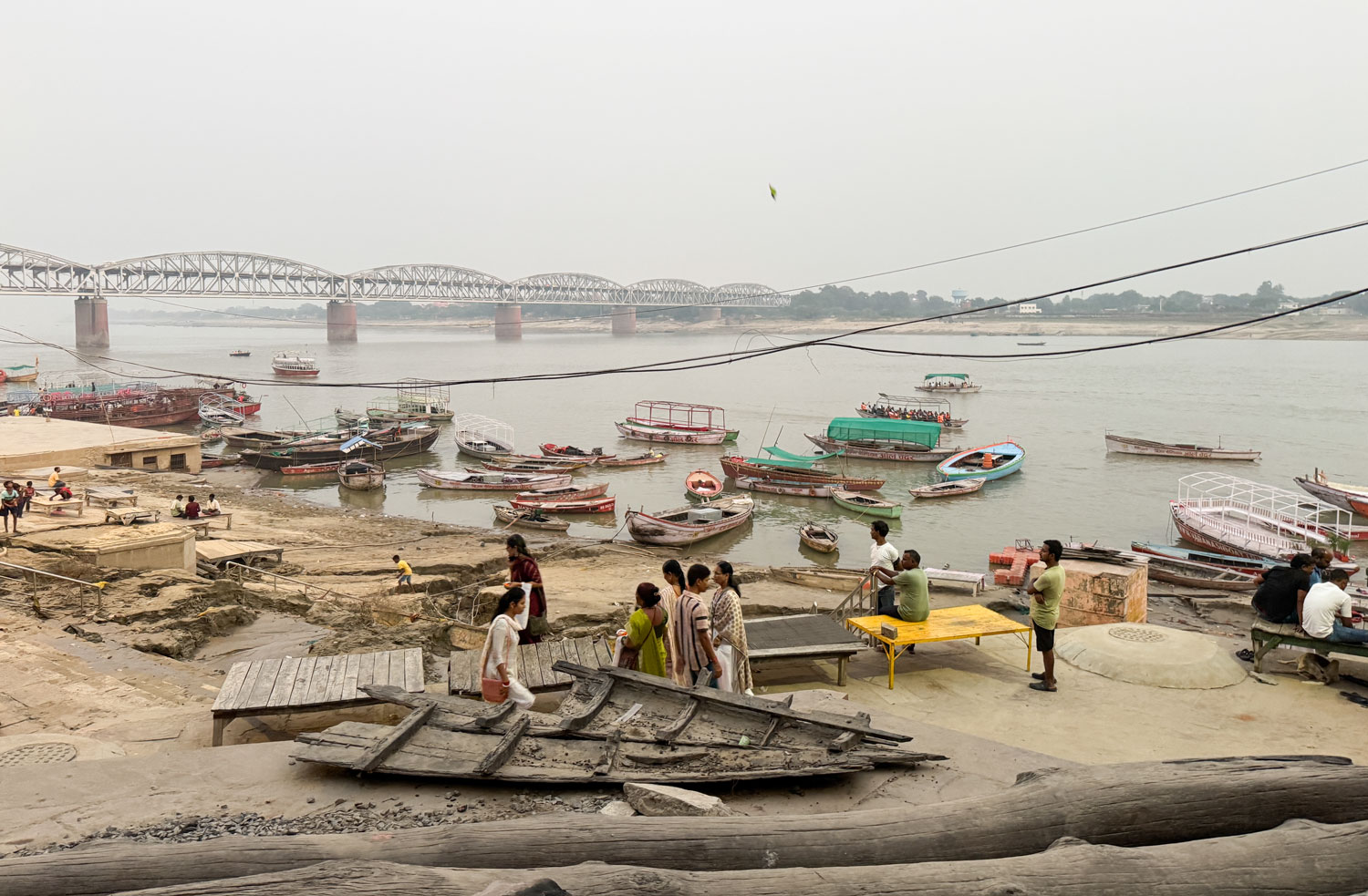
These couple of pictures look like it's daylight, but that's because the iPhone can handle low light conditions. It was fairly dark.
This is the boat we will board.
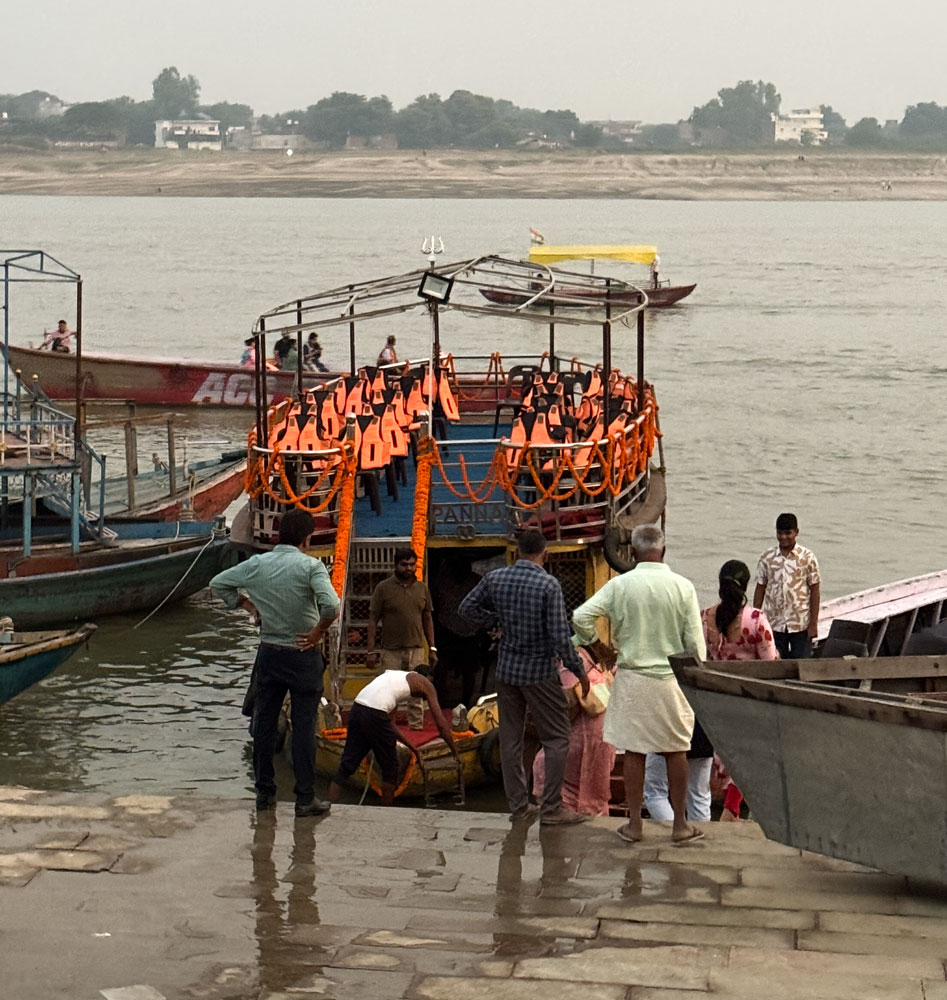
We went up-river and eventually came to Manikarnika Ghat where they were doing cremations (a Ghat is a place where there are steps leading down to the river). Cremations are done 24/7 here. Being cremated on the bank of the Ganges has special significance in the Hindu religion. After cremation, the ashes are put into the river. At this location the river is actually flowing north, because of a large bend in its path. This means that ashes are traveling north, towards the Himalayas, where the gods reside, and where all Hindu souls want to rest.
While a bit hard to see, there are several cremations going on. Some are just starting and others are almost finished. A cremation will take perhaps three hours.
But even after three hours, there will still be bones. The soft tissue will be burned away, and doesn't leave much residue, but the bones will remain. In the US, a machine called a cremulator is used to crush the bones to powder. When you receive ashes from a cremation, it's mostly the remains of bones.
I don't know how they handle the bones remaining after cremation in India. I wonder if they crush the bones by hand here, but some of the remains given to the family include wood ash.

For people of lesser means, a cremation is expensive. It requires 400 to 500kg of wood, at a cost of perhaps ₹2,000. There are other costs which can double that figure. Some people save a long time for their cremation.
A closer look at two pyres. The body is first dipped into the Ganges, then wood is laid down and the body placed on that wood. More wood is added to cover the body. Then the pyre is lit with fire that has been purchased from the people running the cremation facility (special fire), from an eternal flame. The people who tend the crematoriums are in the Untouchable caste, and are often quite wealthy, but it is a caste from which one can never be released as generations go on.
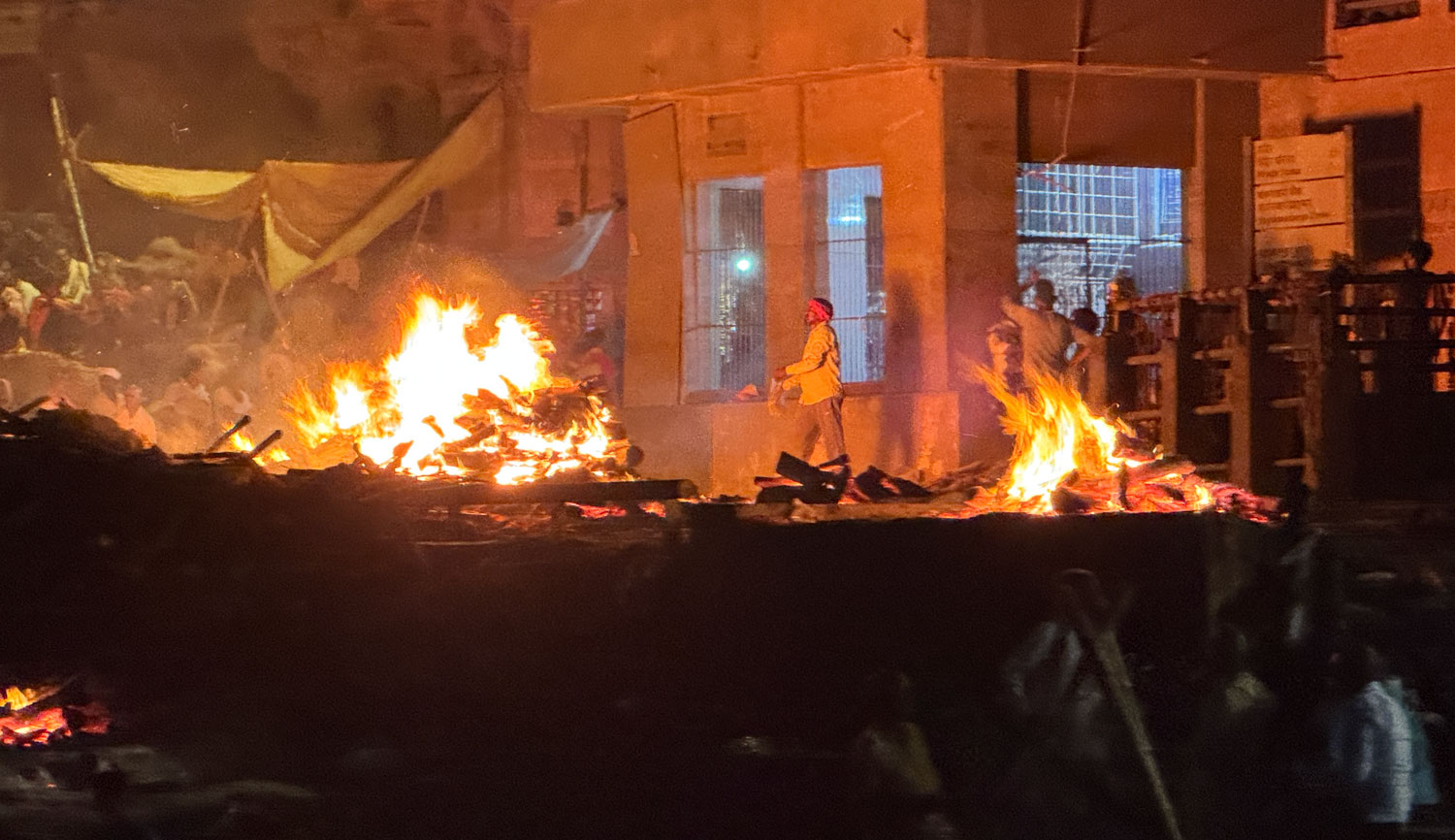
Family and friends will be present to witness the cremation.
Long ago, a wife was expected to sit atop her husband's funeral pyre and die with him. The practice was called Sati and was banned by the British in 1829.
The practice of Sati was not limited to the poor. Royal women committed Sati.
Here's a close-up of a cremation pyre.
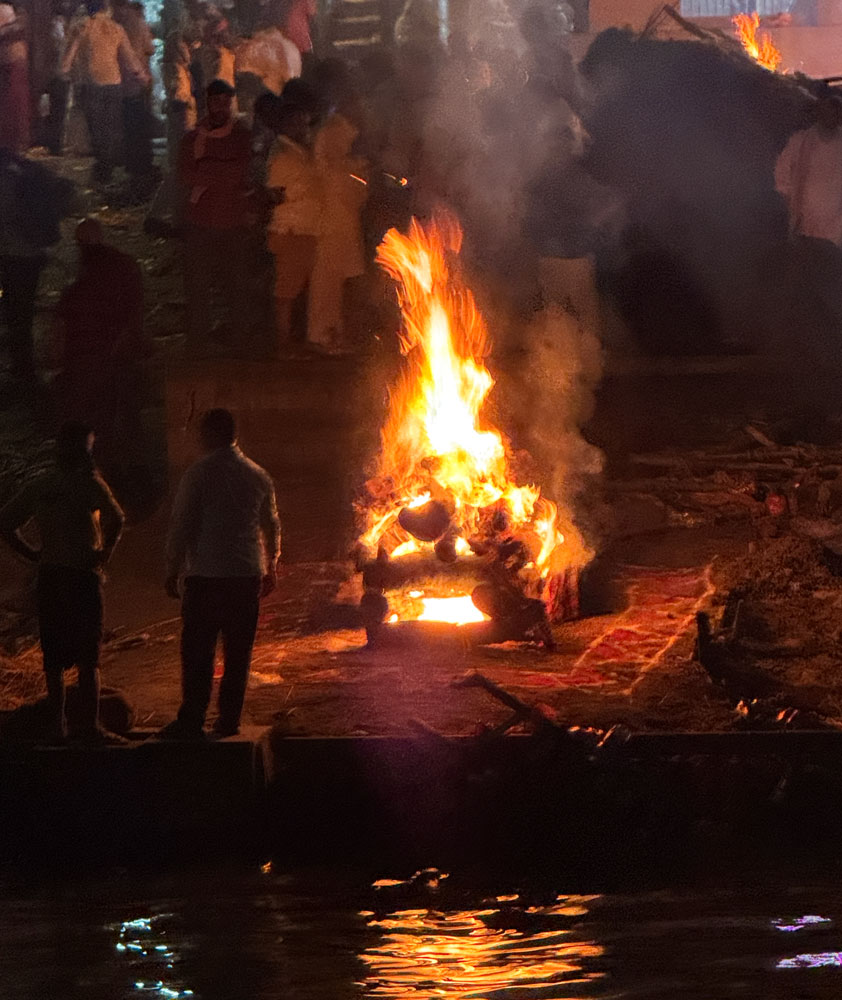
While we were there, they brought a body to the Ganges to immerse in the sacred waters. It's on a stretcher and covered with a cloth.
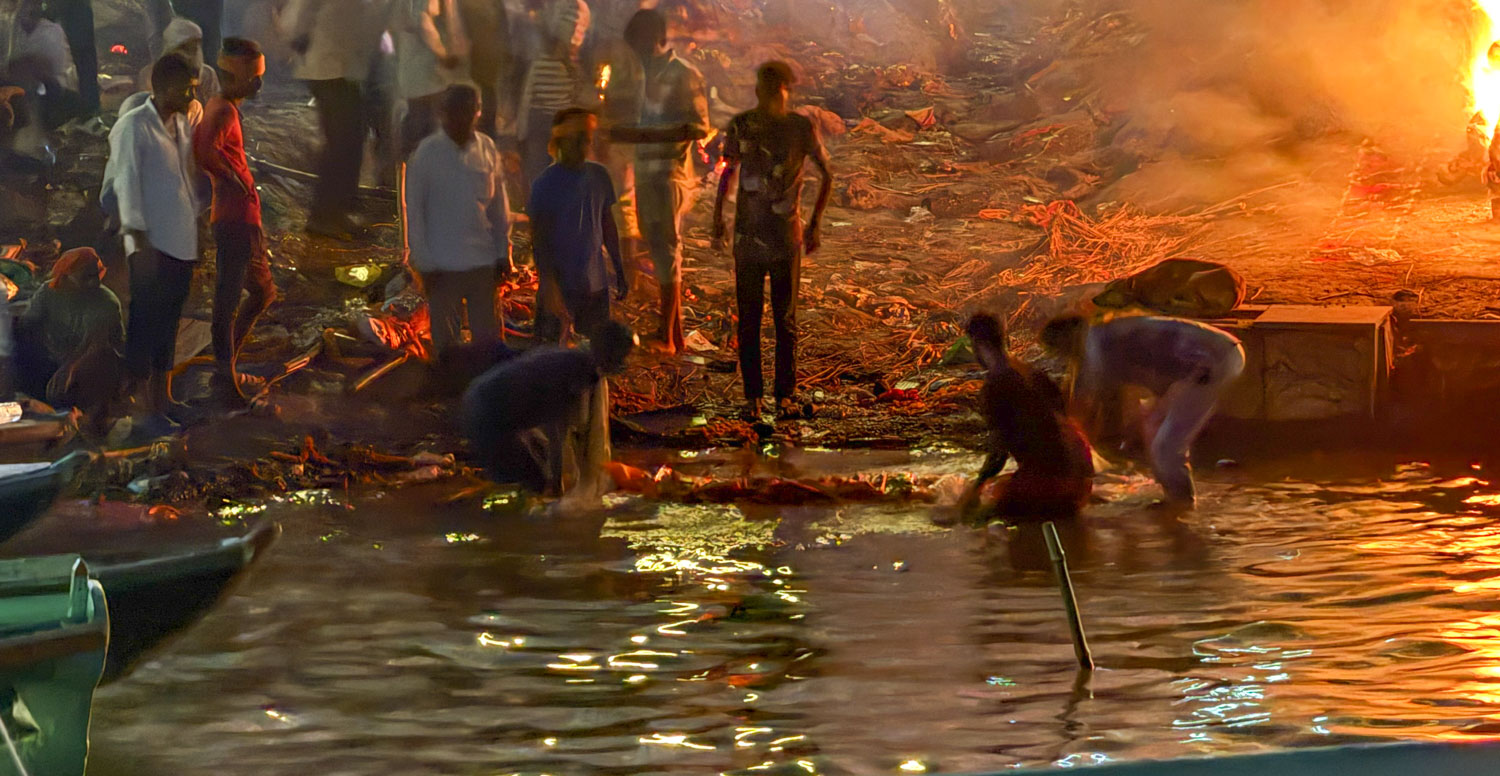
They have now removed the body from the river.
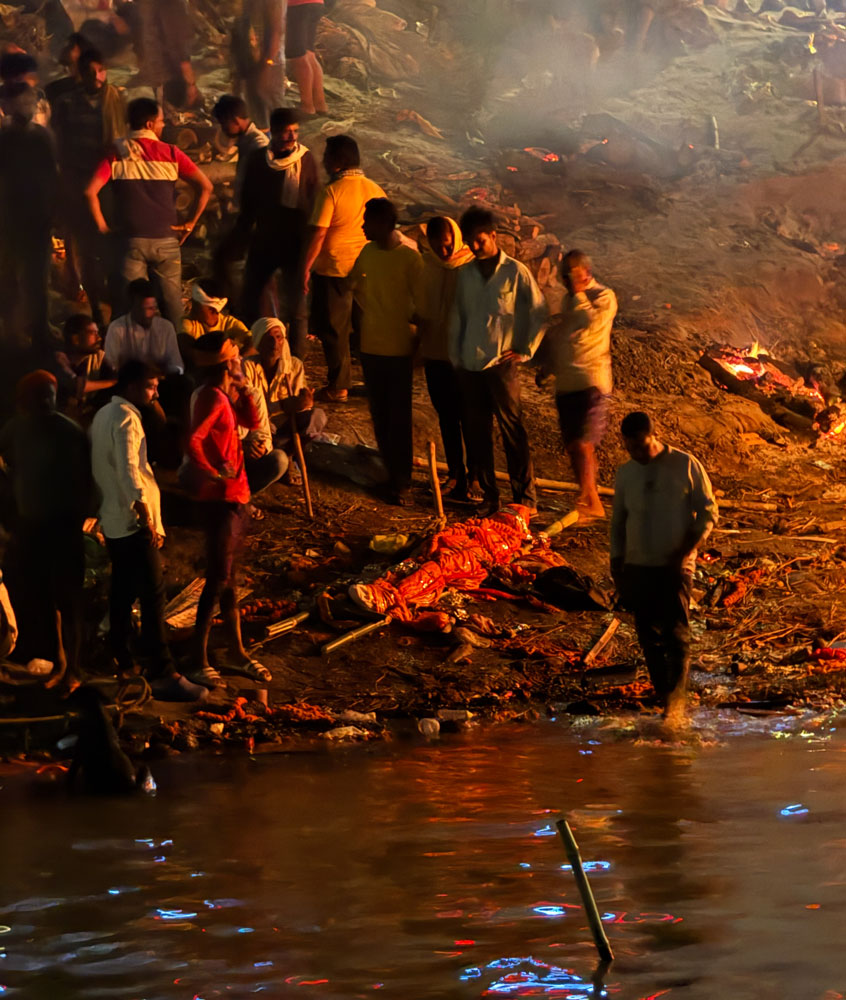
Next, the saffron-colored wrapping will be removed (there's more wrapping underneath it) and the body will be placed on a pyre.
Here's a picture from the web, taken in the daytime, showing a corpse wrapped in the saffron-colored material. It's clearer than the pictures taken at night.
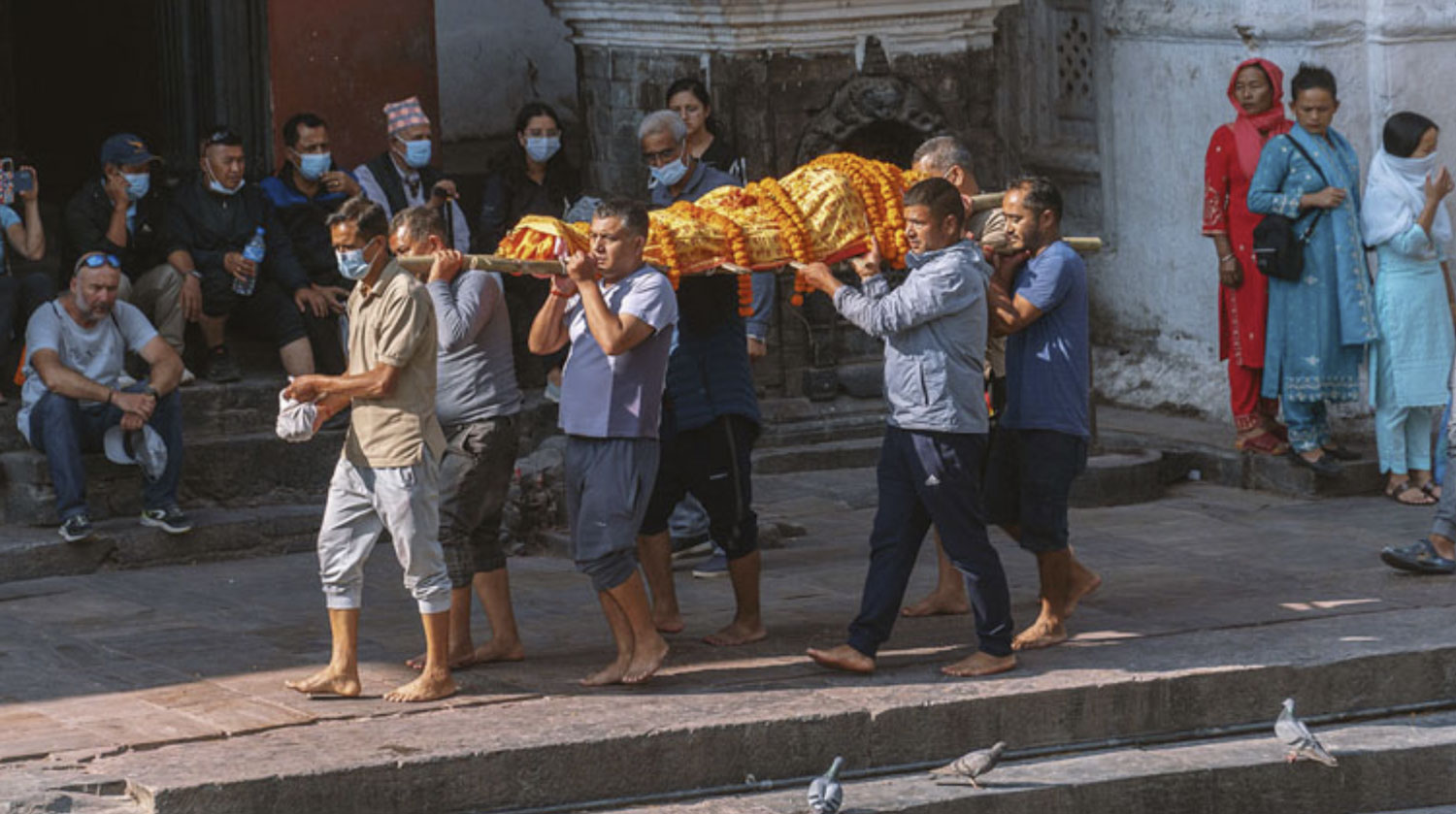
With that, we left Manikarnika Ghat and headed to Dashashwamedh Ghat where the Ganga Aarti ceremony was being held (Aarti means prayer offering with light). The Ganga Aarti ceremony is performed every night. This night, there were small boats crowded at the Ghat so we couldn't get close. I have some pictures but they're not very good.
This picture shows the number of boats and people at the ceremony. The Hindu priests are on stage at the far left, and the rest are people watching from boats.
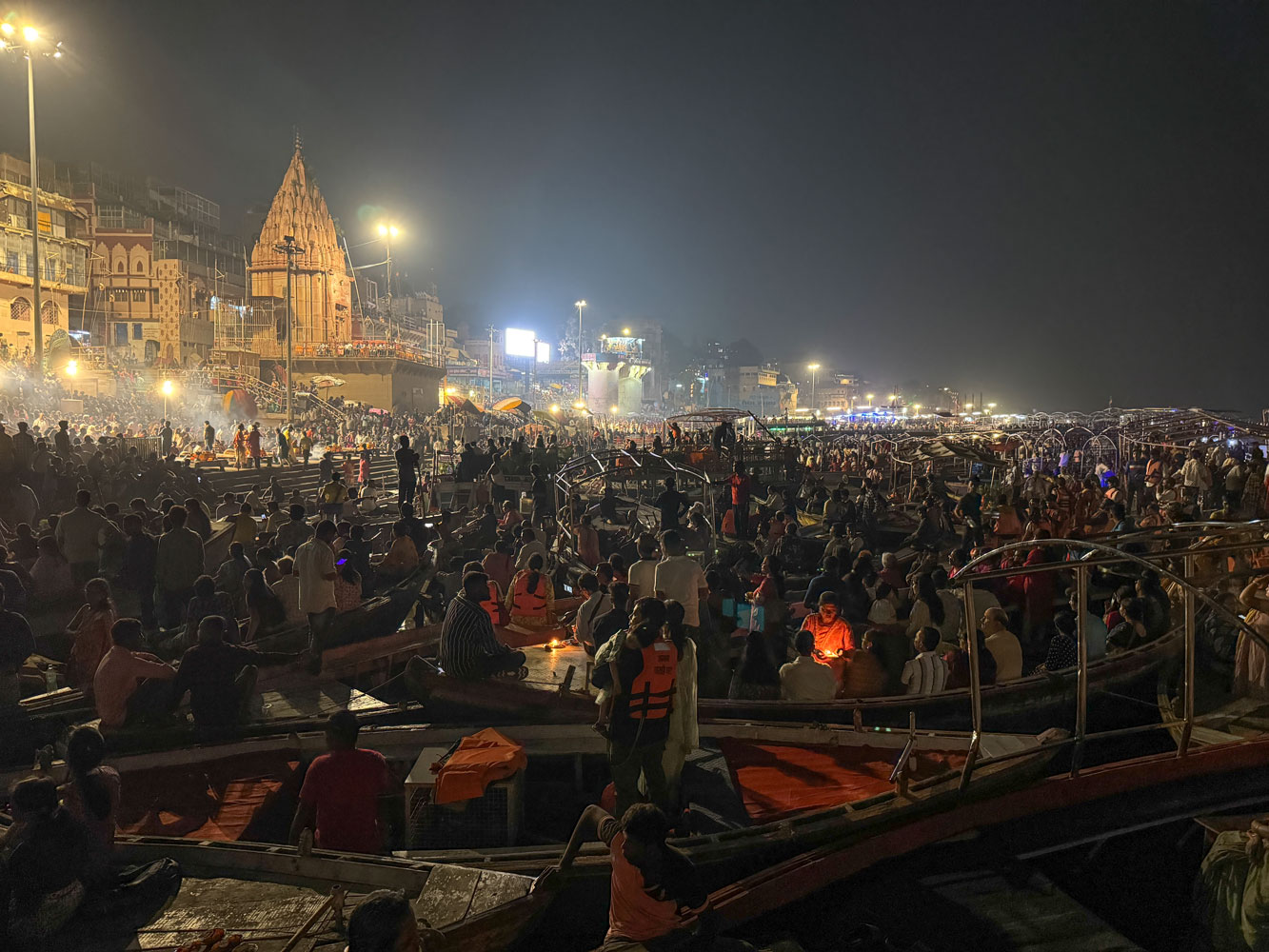
There were five Hindu priests performing the ceremony. To my eyes, it reminded me of a rock concert. The steps going down to the river were jammed with people, as well. It was very loud and smoky.
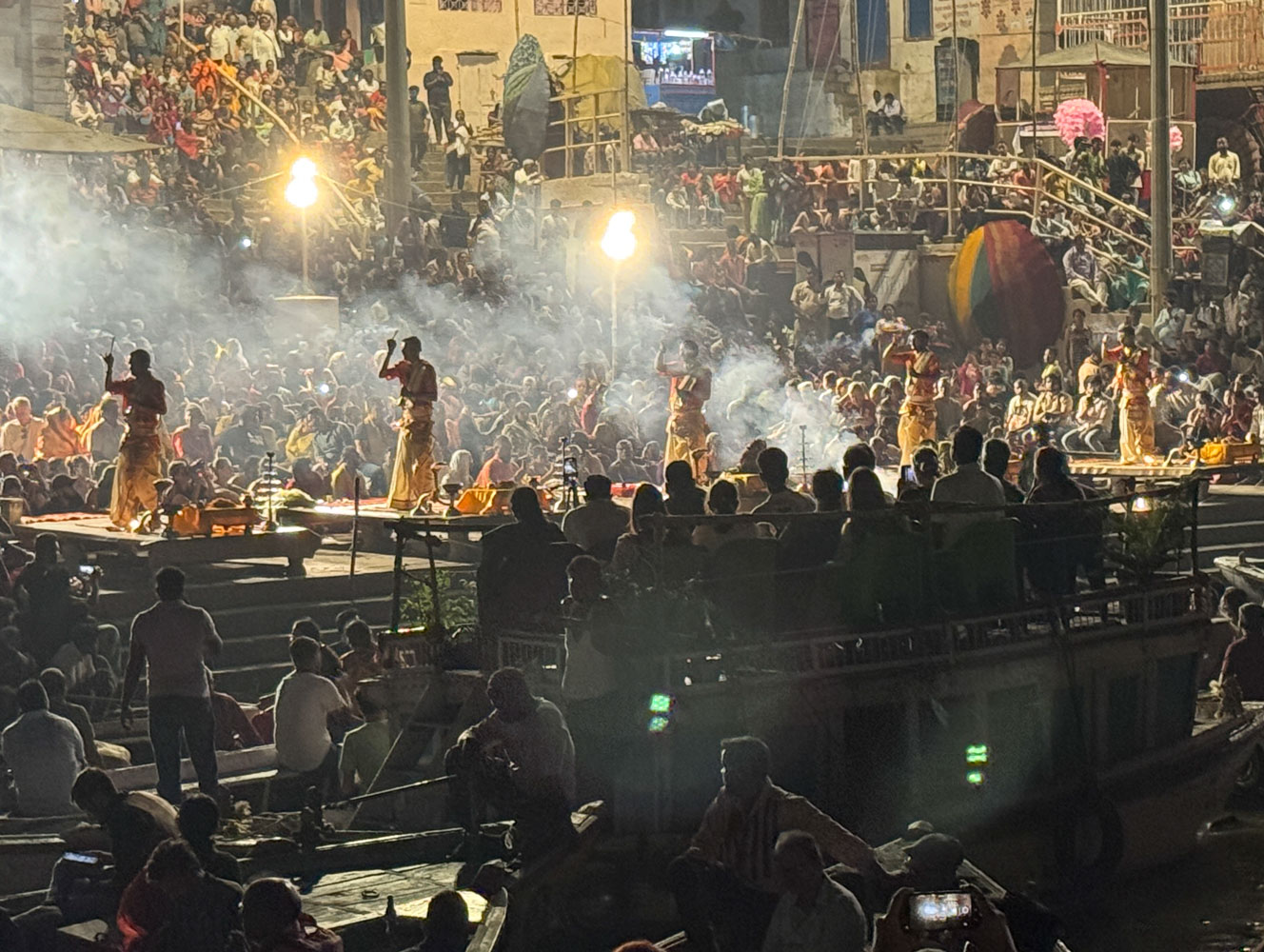
The ceremony was nearly over as our boat pulled away. The river was ready to sleep.
As we headed back to dock, the crew prepared some diyas for us.
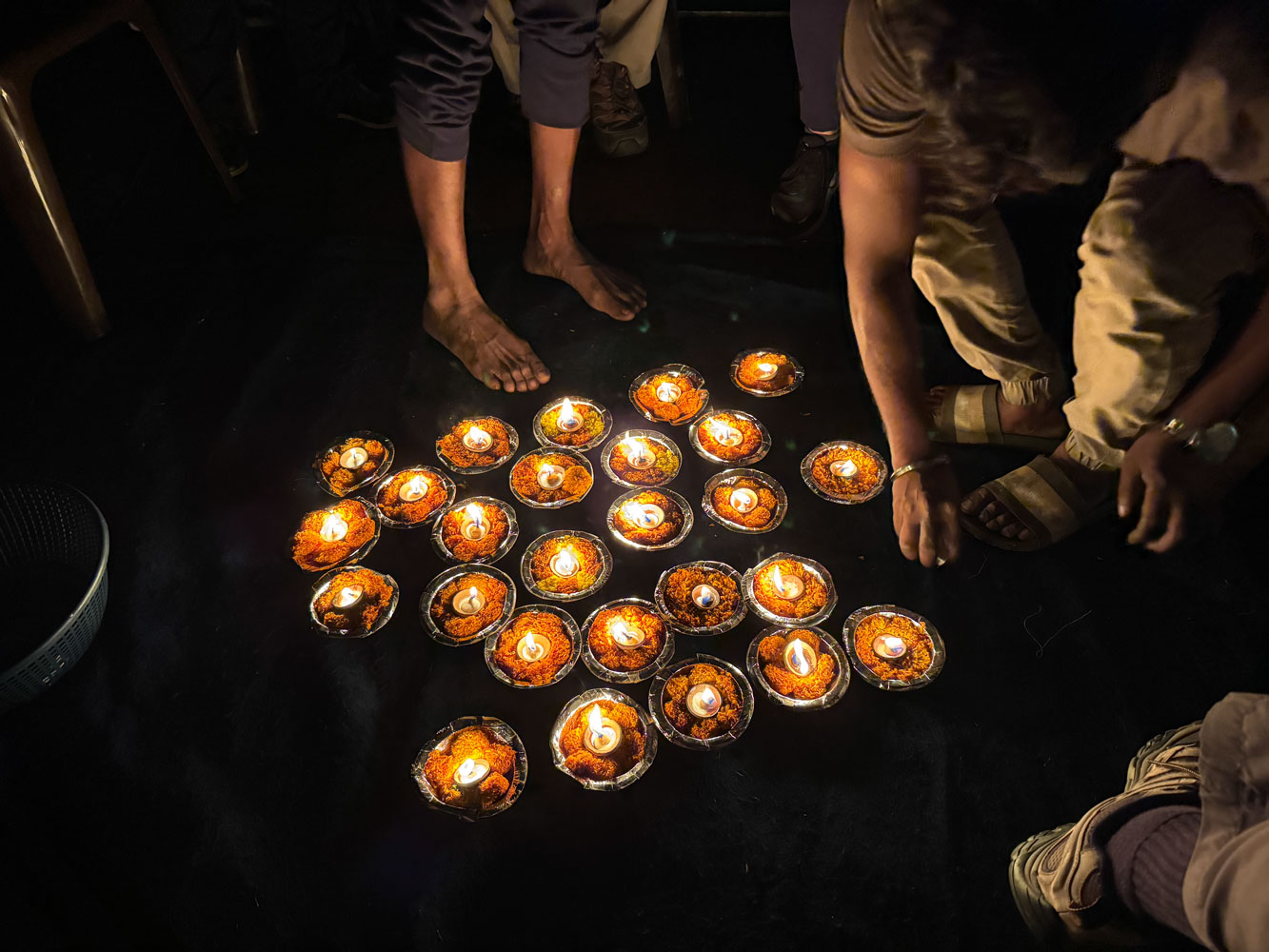
Our tour guide conducted a short Hindu ceremony and then the diyas were placed in the river to float downstream. We were each handed a candle and asked to have it placed in the river in memory of a loved one. The crew put them in the water for us, and we watched them slowly float northward.
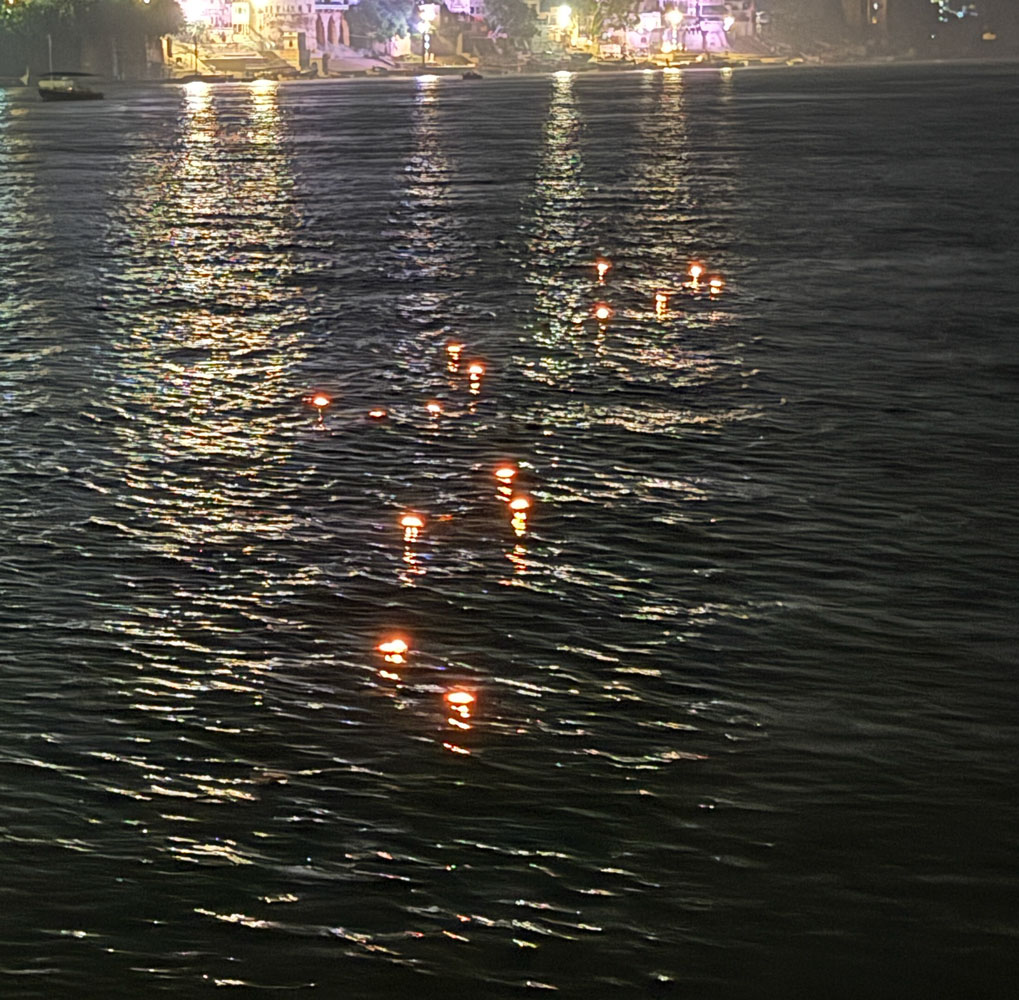
With that, we went to the dock, and then back to the hotel. We have an early morning departure to return to the Ganges River to see the ceremony that wakes it up.
++++++++++++++++++++++++++++++++++++++++++++++
10/23/2024 (Wednesday, Varanasi, then to Agra) We were up early again this morning, with a 5am departure, and headed to the Dashashwamedh Ghat where the evening Ganga Aarti Ceremony was held last night.
Here we are arriving at the river. Sun's not up yet.
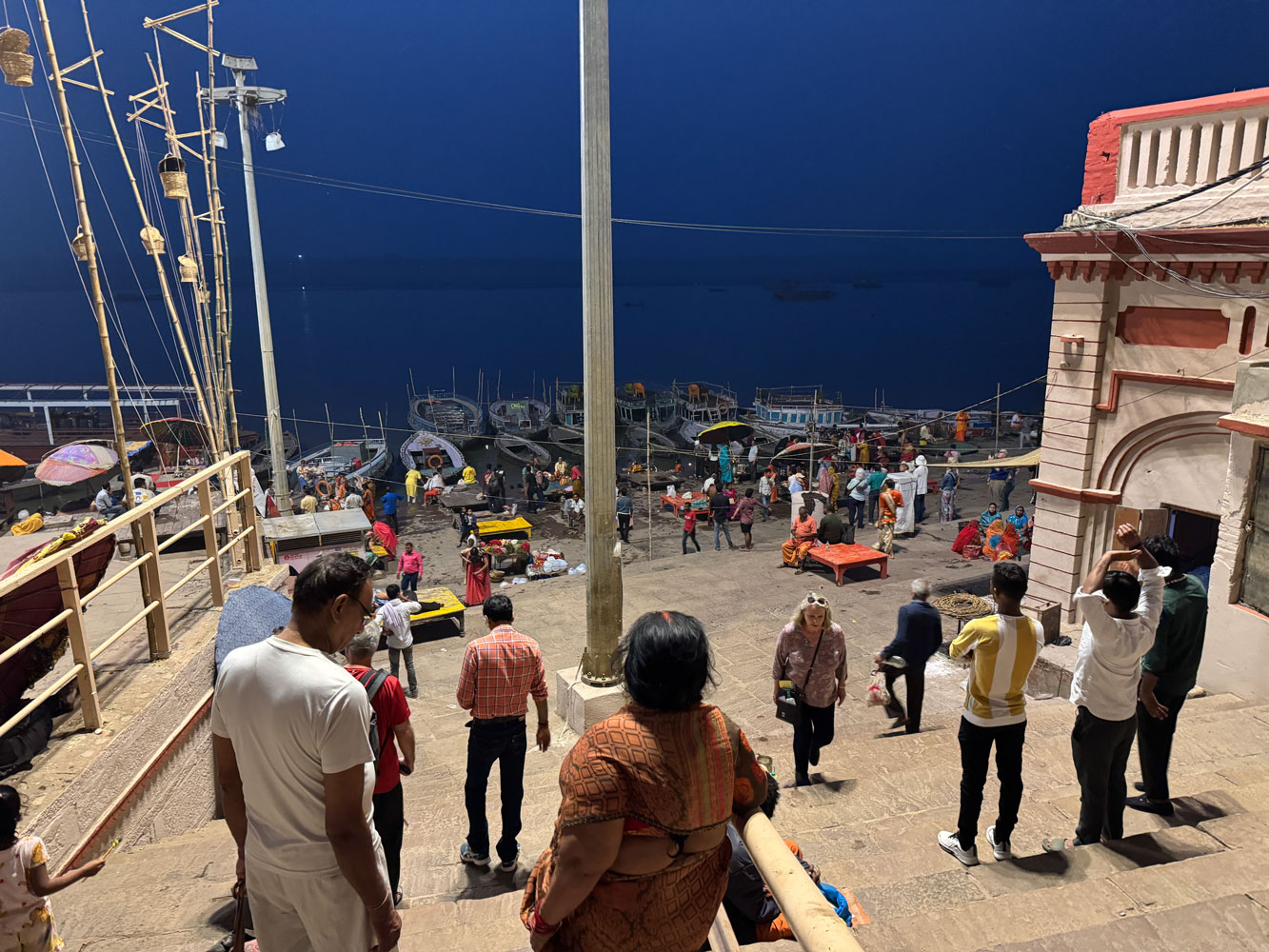
Here's the Hindu priest preparing to perform the morning Ganga Aarti Ceremony. He is on one of the platforms we saw last night.
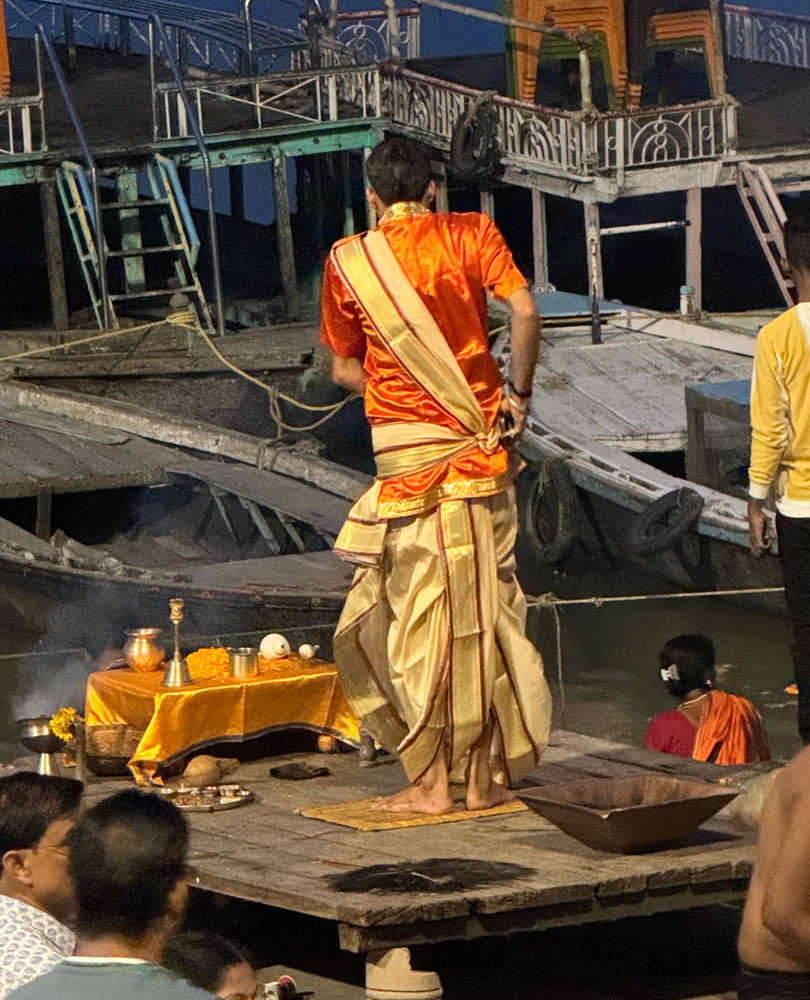
A part of the ceremony.
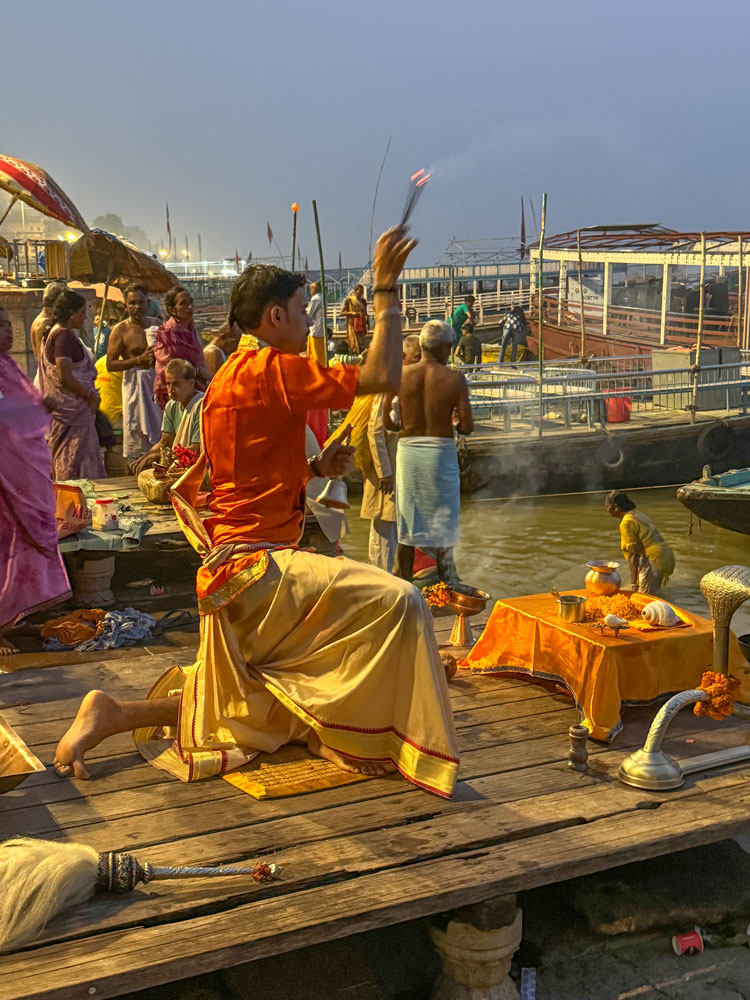
People immersing themselves in the sacred Ganges. The water is fairly polluted.
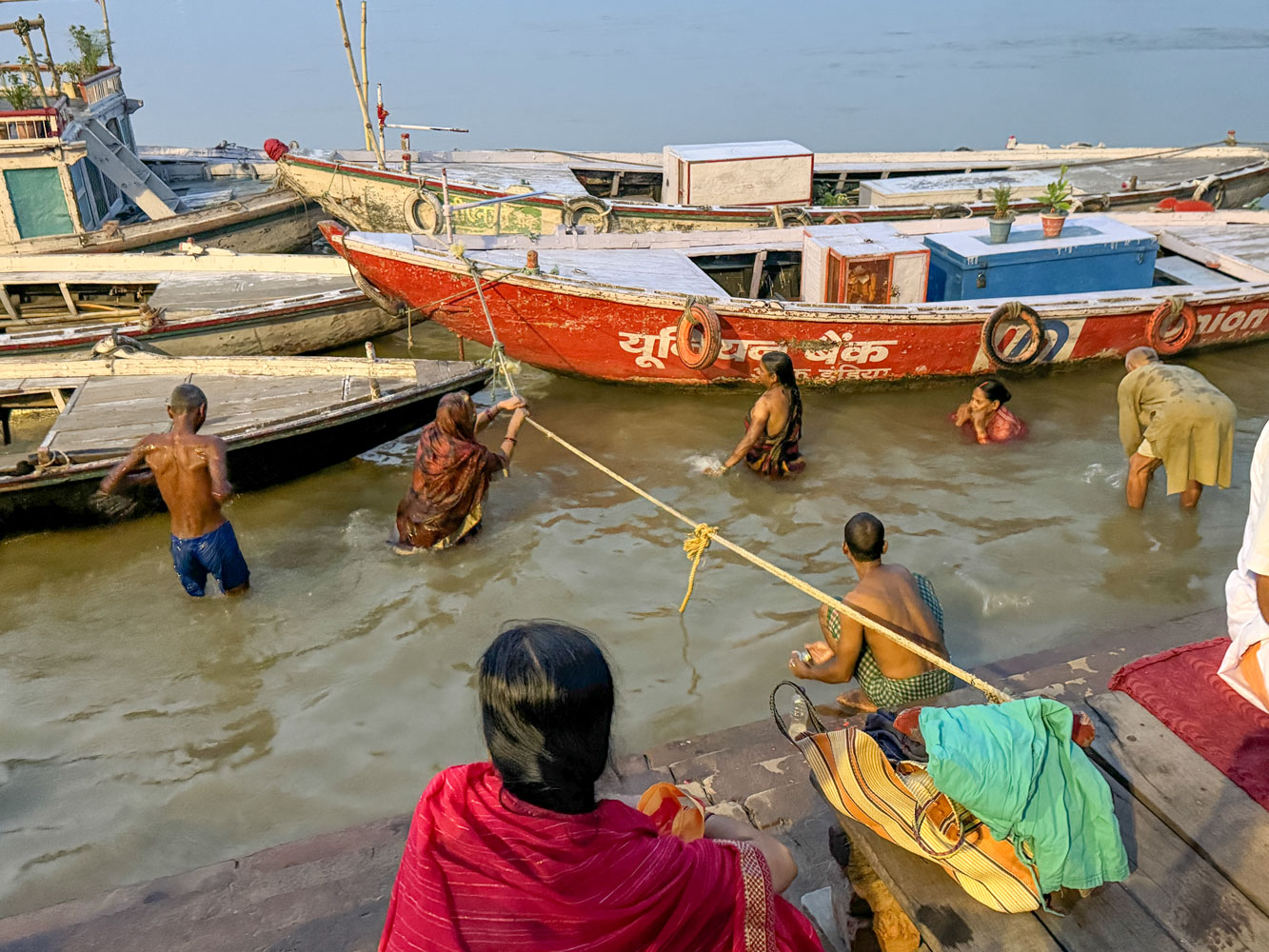
We boarded a boat and sailed upriver.
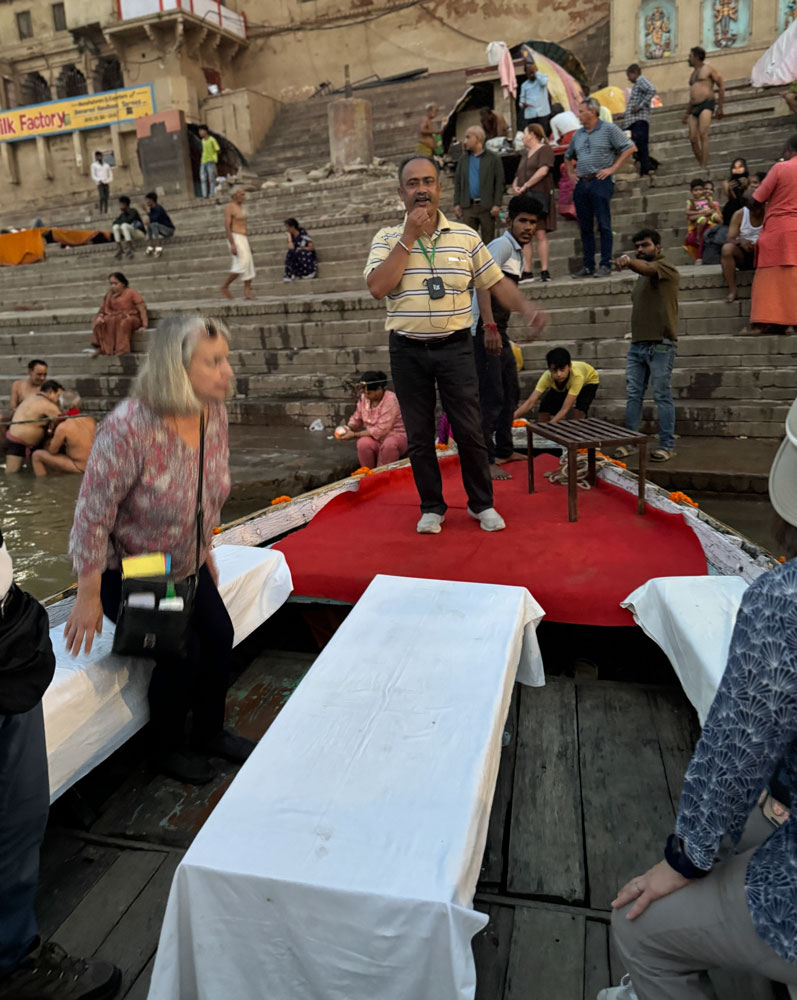
Here's a typical scene on shore.
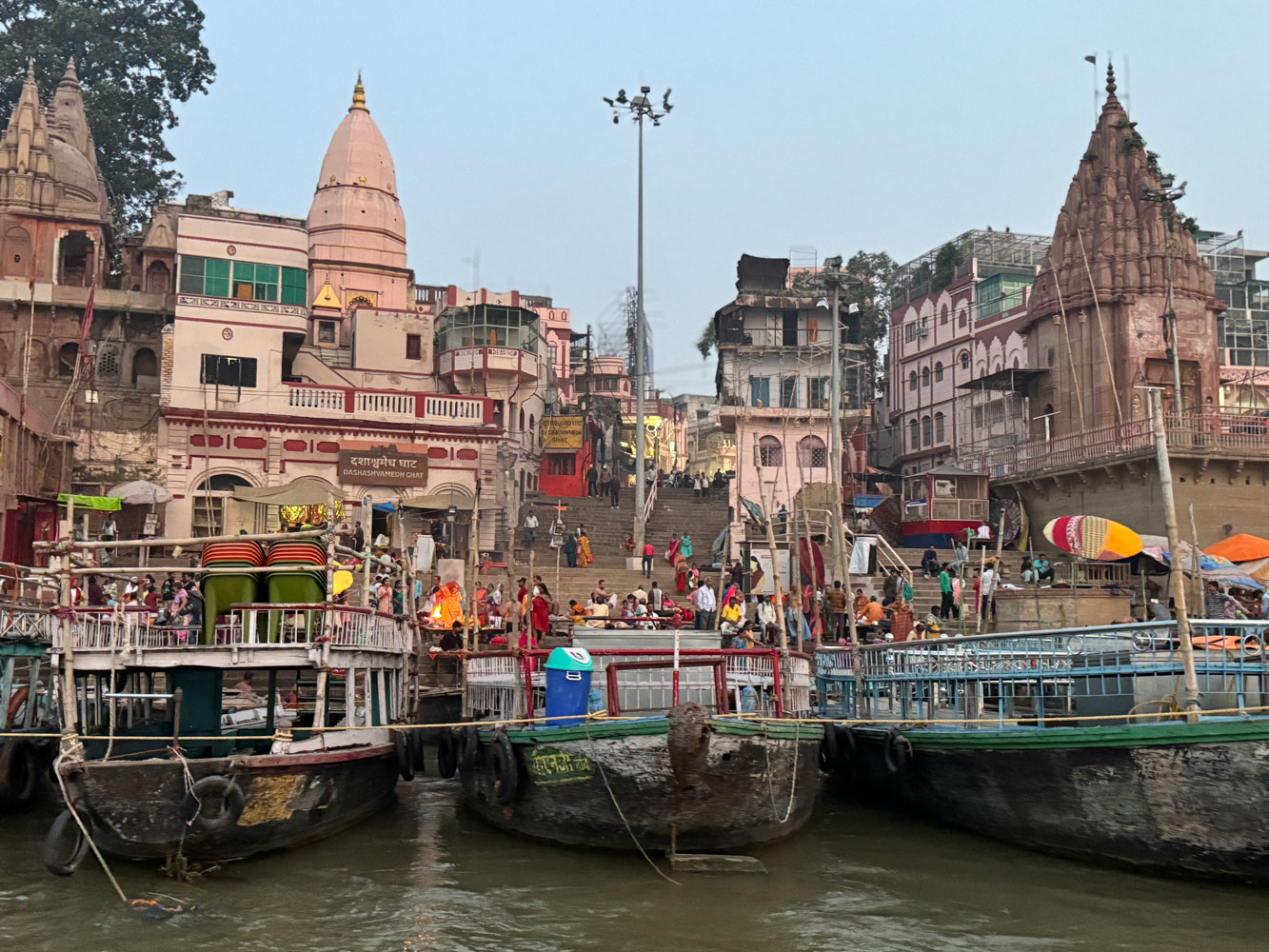
More people in the Ganges.
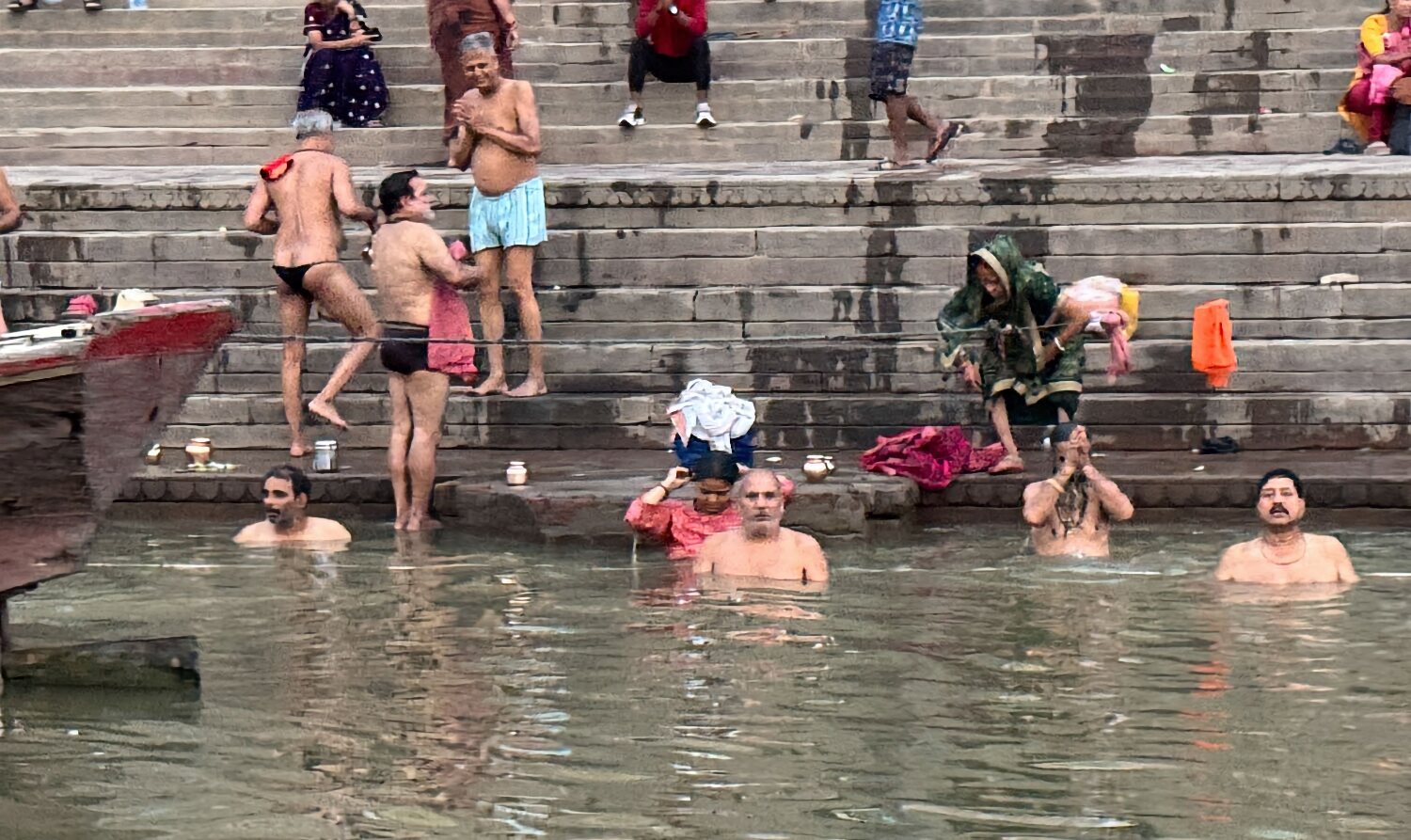
A couple performing a morning ceremony.
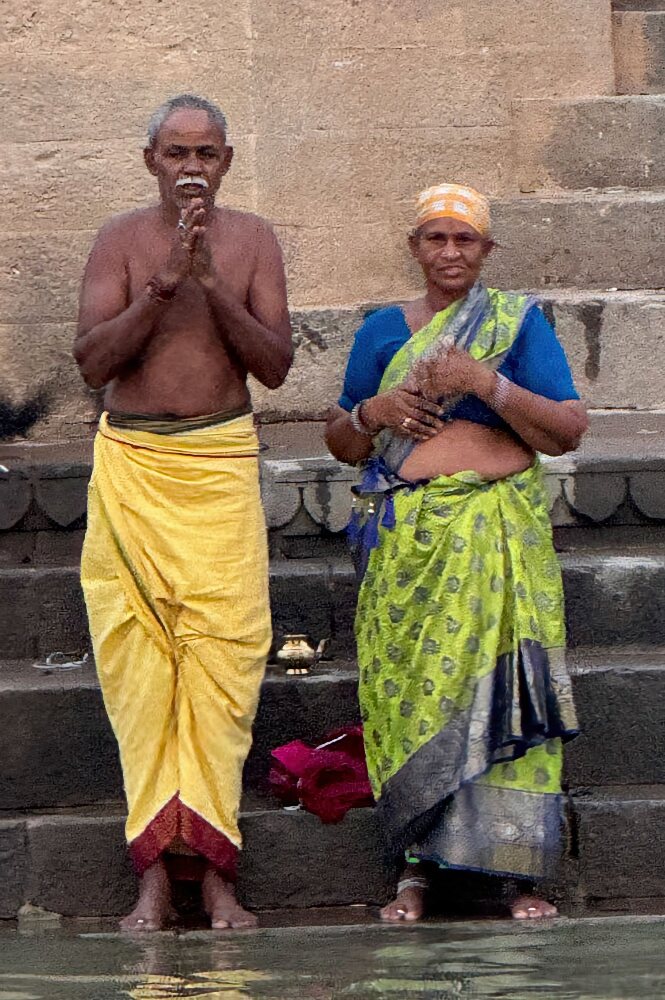
Another location where people are bathing in the Ganges.
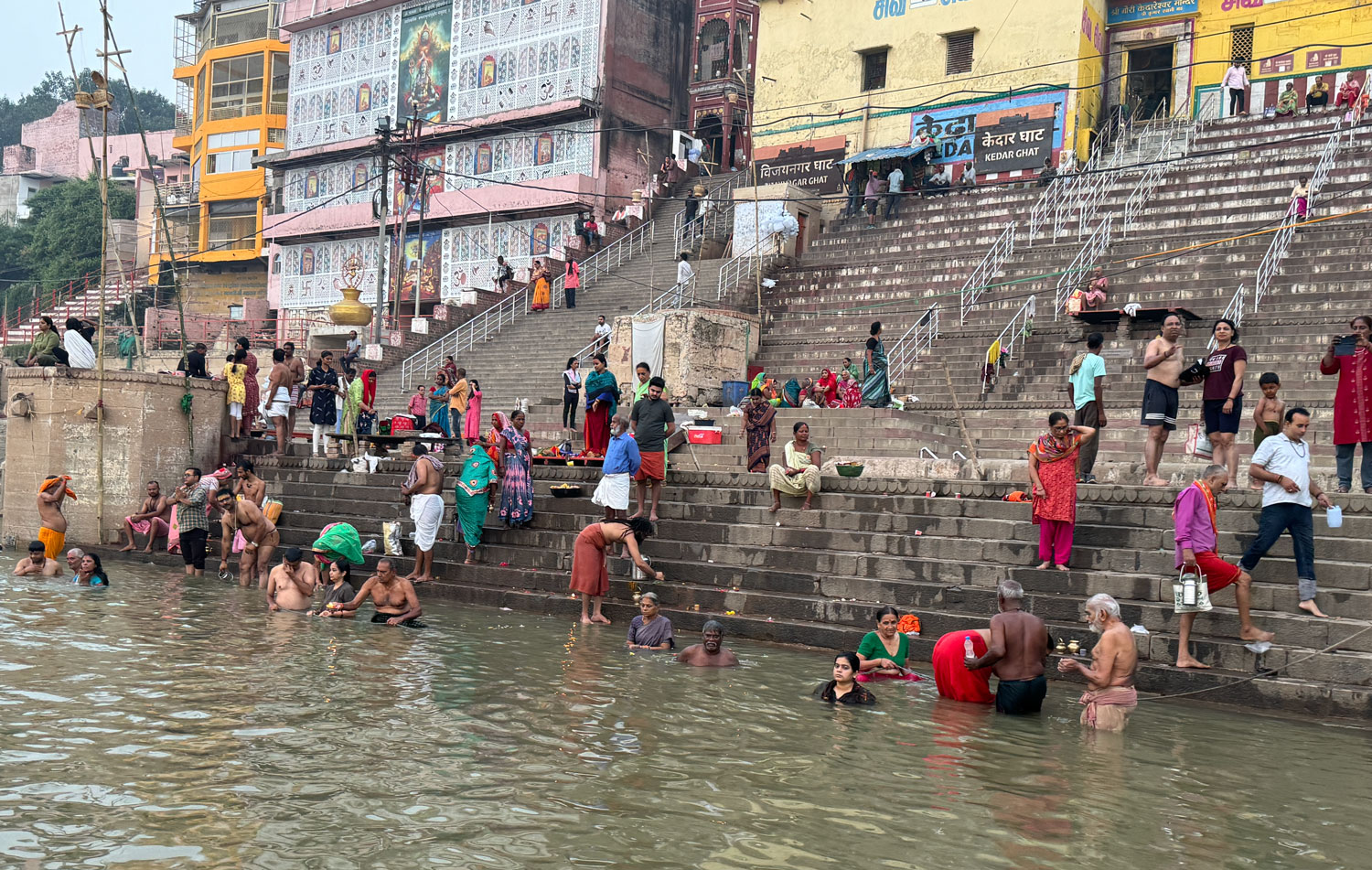
One final picture of people bathing in the Ganges.
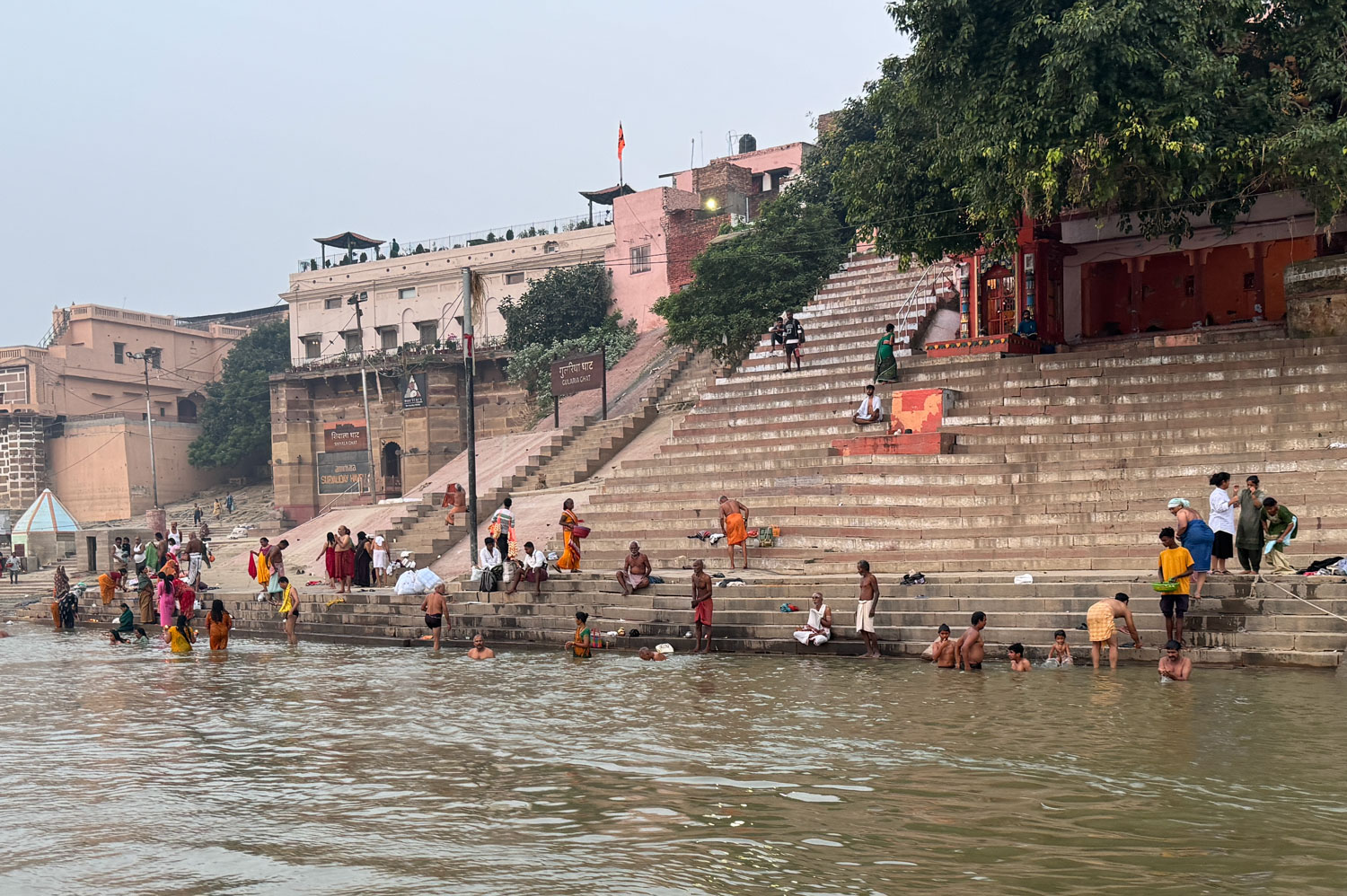
With this, we turned around and headed back to the dock. As we walked to the bus, I was able to get a few pictures of some men.
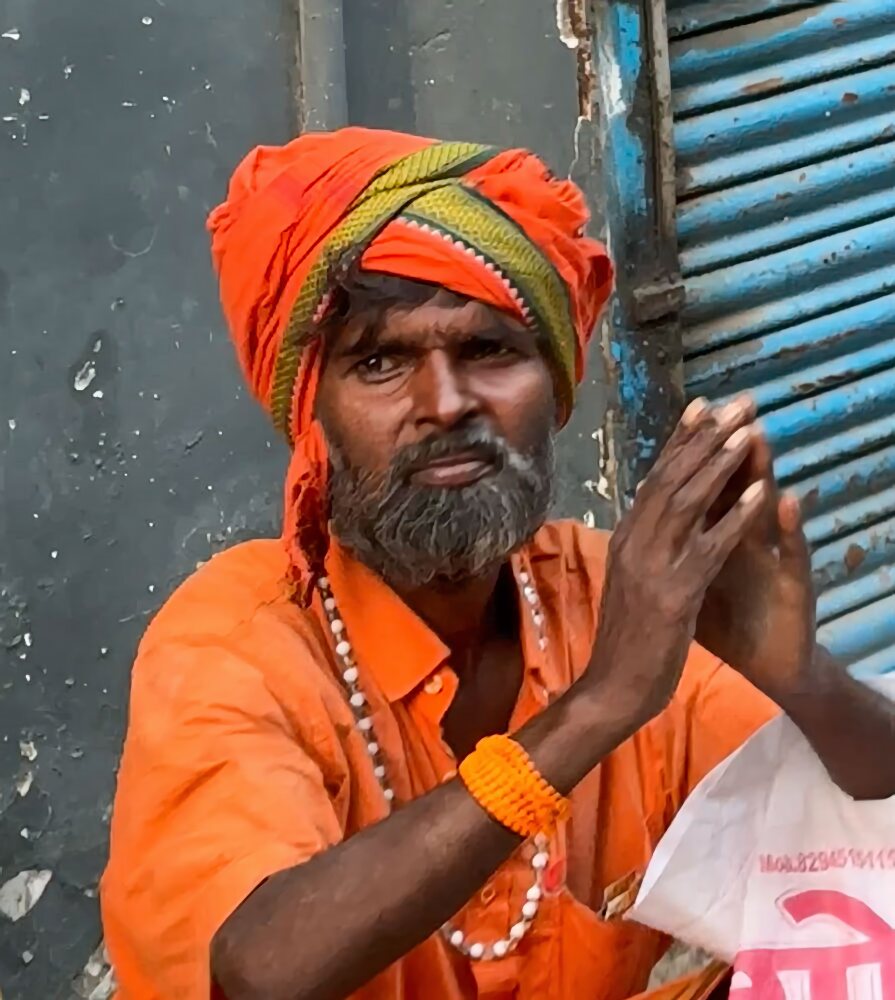
This man was working hauling bricks.

I don't remember what this guy was doing, but he had an interesting face.
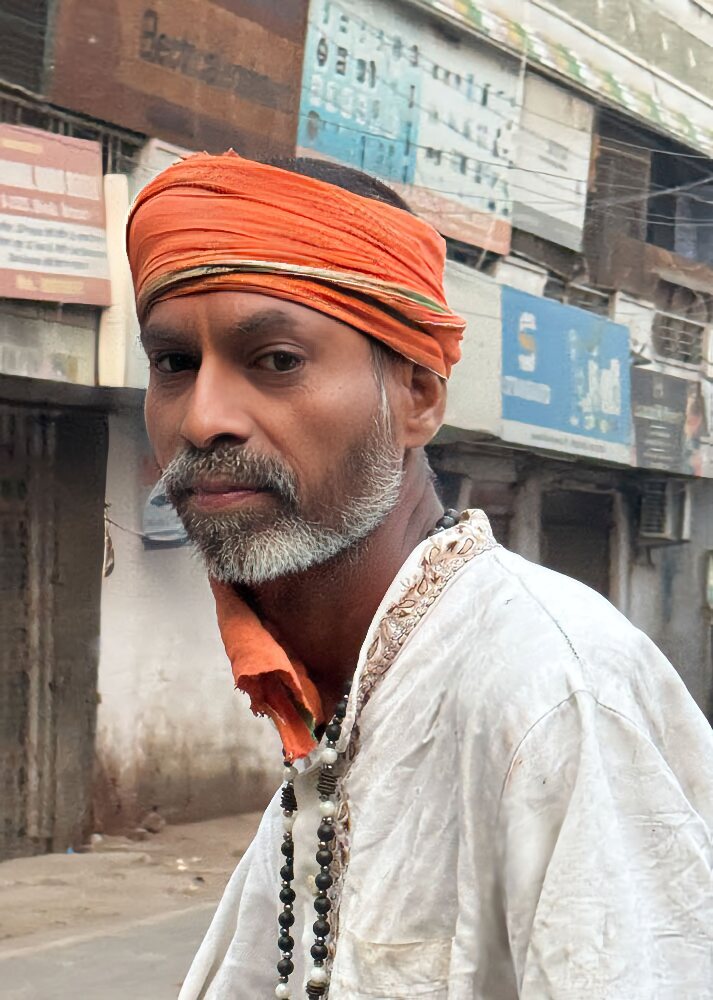
This morning we depart Varanasi and fly back to Delhi, where we'll take a bus to Agra.
The Tauck bus took us to the Agra airport. Even though it was a smaller airport, we had the usual problems going through security. They're just very strict.
The aircraft was the usual A-320 cattle-car and the flight was just a bit over an hour.
When we got to Delhi, we boarded the Tauck bus at the airport for the drive to Agra. But before we set off, we stopped for lunch at the Roseate House, a large hotel near the airport.
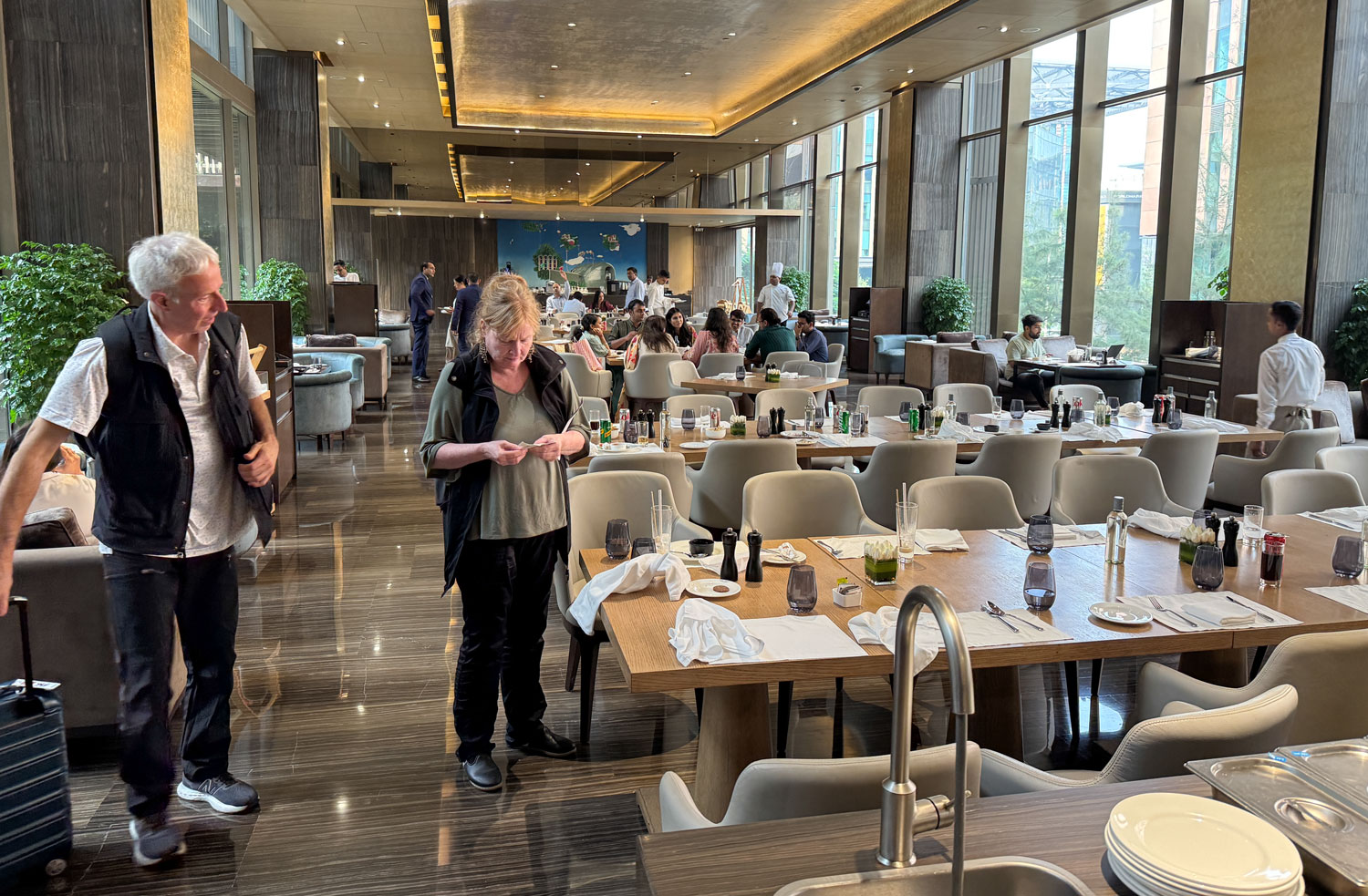
After lunch we began our drive to Agra. After about four hours, we arrived at the Agra Hotel, the Oberoi, about 7:30pm.
It's a very nice hotel with miserable Internet access. The free Internet access is about 1Mbps down, which is almost useless. I signed up for their "premium" package at ₹500 per day, which gave me about 10Mbps, still nothing exceptional.
Hotels that offer "premium Internet access" probably have poor standard Internet access.
[Update: When I went to check out, they told me that Tauck guests get the premium Internet access at no charge - but you must sign up for it. Otherwise, you just get the standard access.]
Here's our room. Overall, very nice. The bathroom is a bit small, with only one sink.
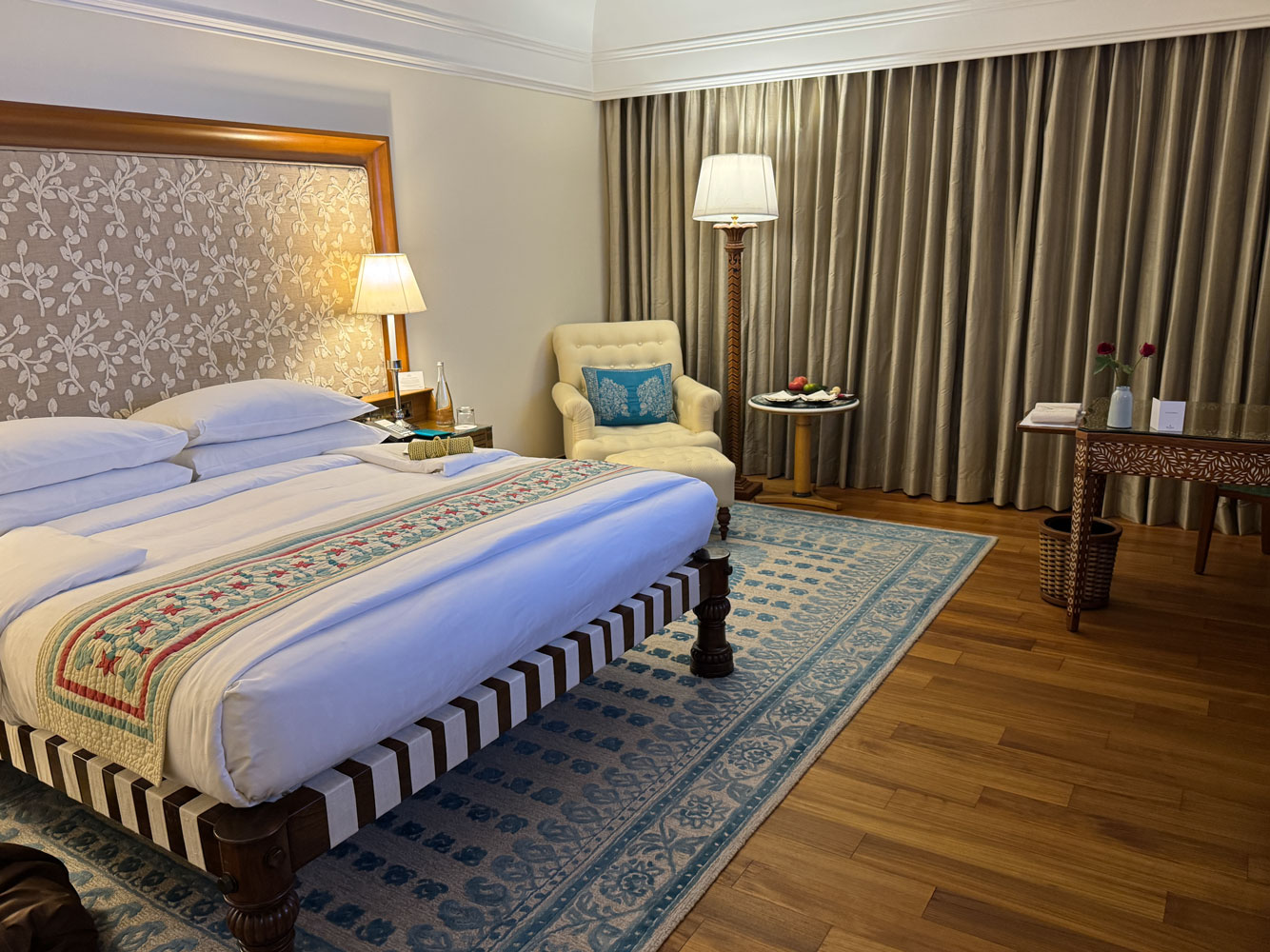
Night time view from the balcony of our room. If you look closely at the horizon, you can see the dome of the Taj Mahal.
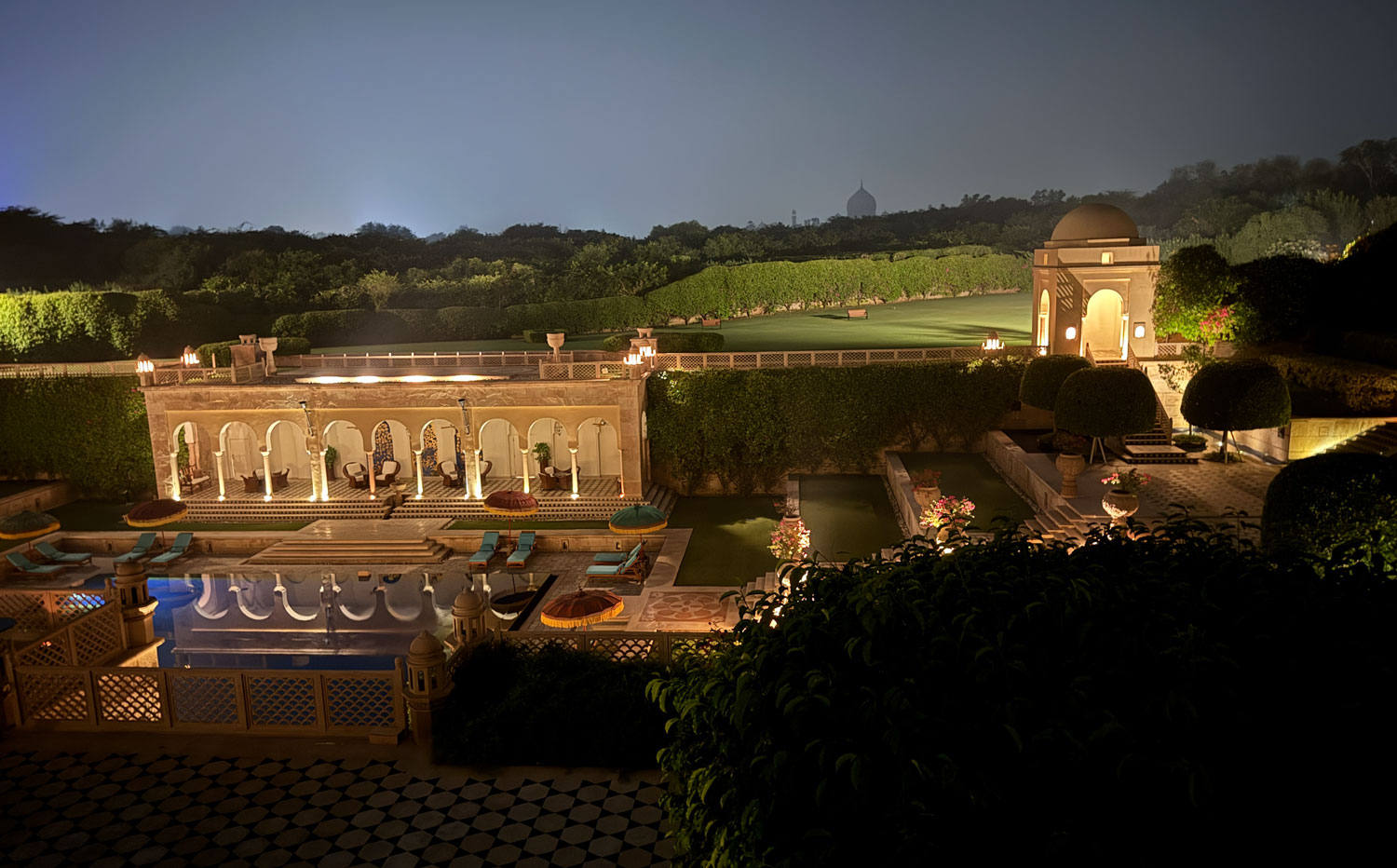
I think everyone was pretty tired from the previous early days. I skipped dinner and went to bed early.
++++++++++++++++++++++++++++++++++++++++++++++
10/24/2024 (Thursday, Agra) We were up at 4am this morning to meet at 5:45am in the lobby . We're going to the Taj Mahal for sunrise.
Some background on the Taj. It was mostly completed in 1643, twelve years after it was commissioned by Shah Jahan, the fifth Mughal Emperor, as a mausoleum for his wife, Mumtaz Mahal. She died in 1631 giving birth to her last child. She had 14 children (eight boys and six girls) but seven died at childbirth or shortly after.
Work continued on the Taj until about 1653, twenty-two years after the death of Mumtaz Mahal, and the commissioning of the project.
Before we left home, I found this picture of the Taj at sunrise, so it set my expectations. They must have taken this picture during COVID to get it without any tourist. To the best of my knowledge, there's a early morning tour every day.
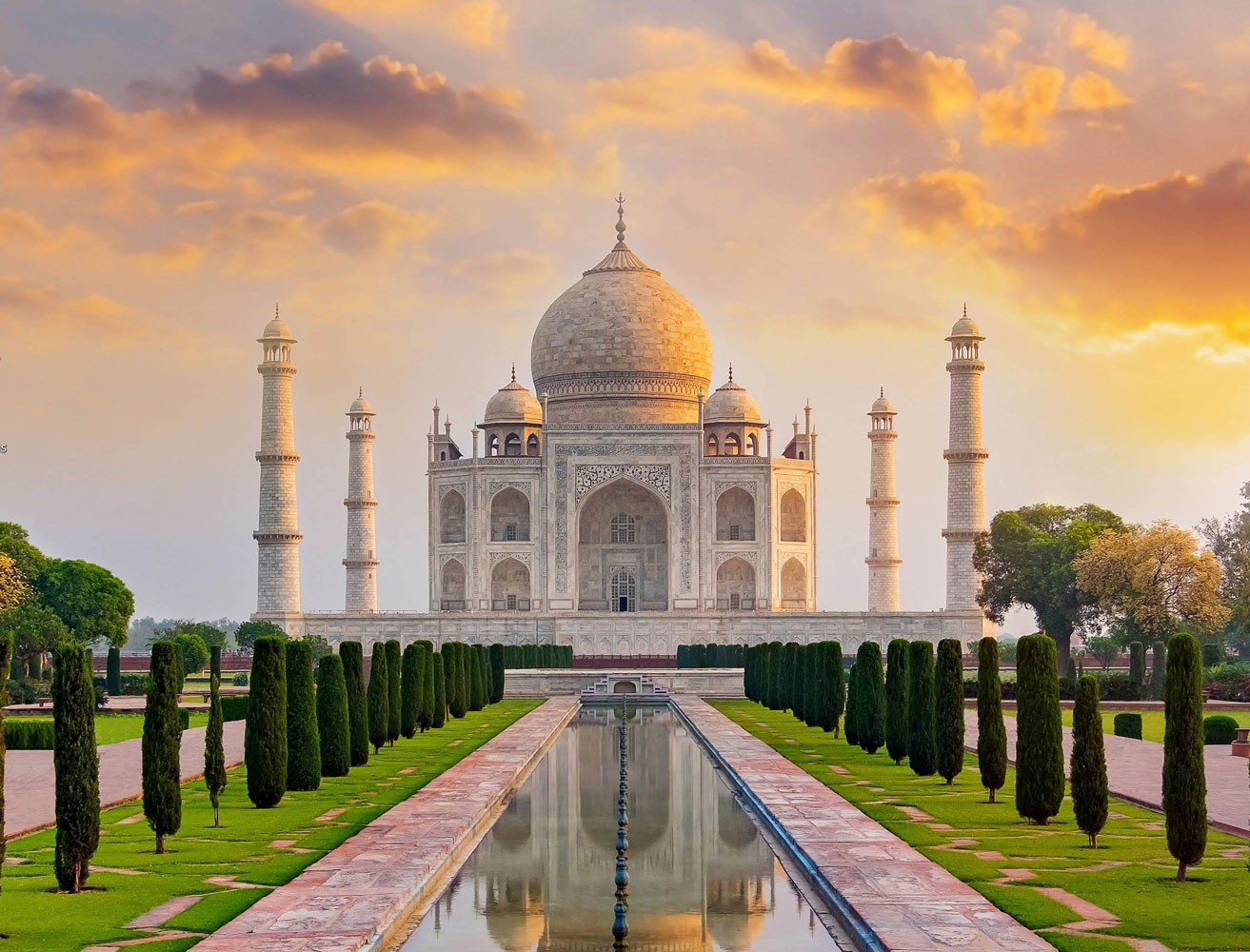
The hotel is quite close to the Taj - it's just a short drive in their electric carts.
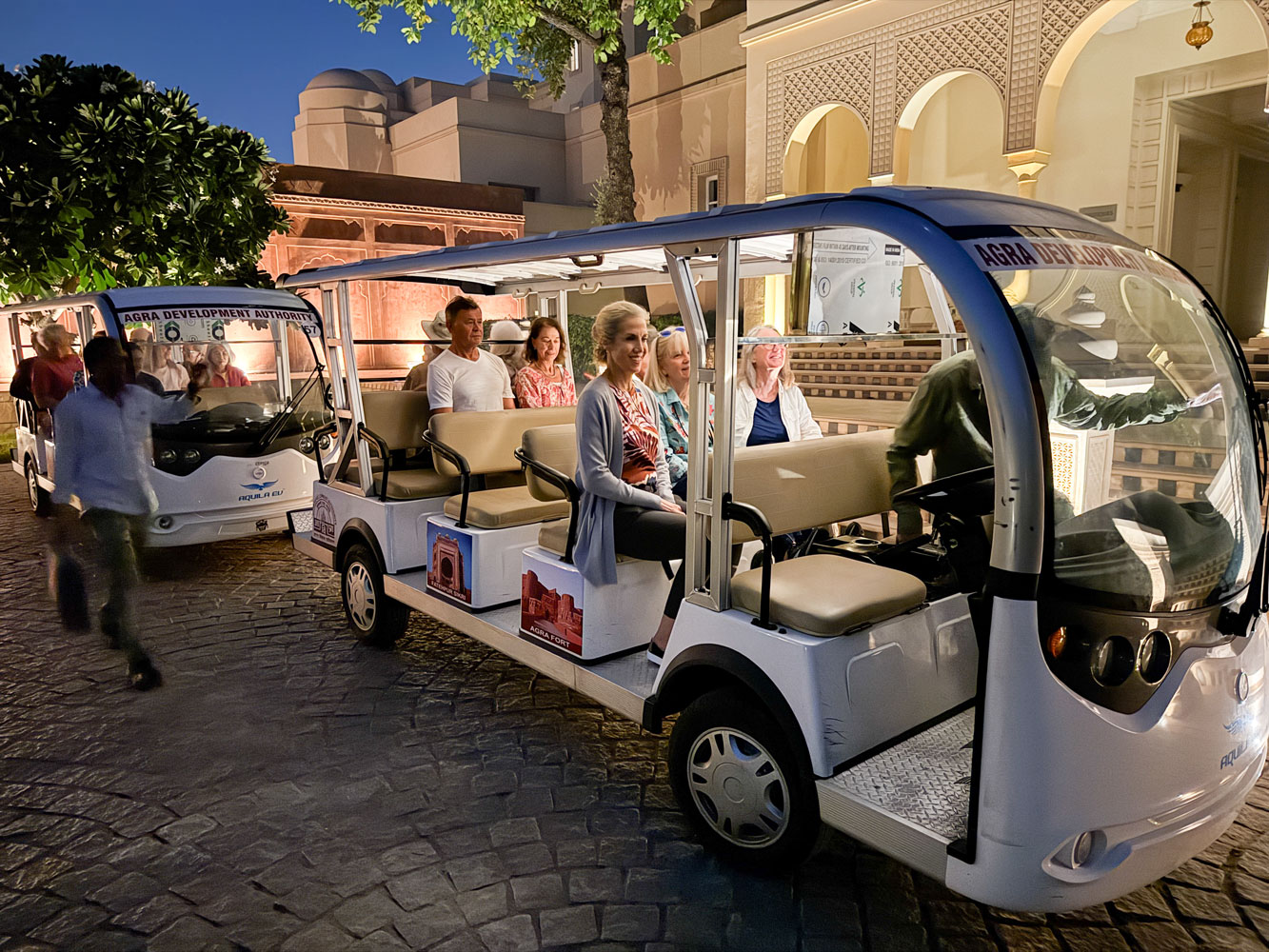
We entered at the east gate.
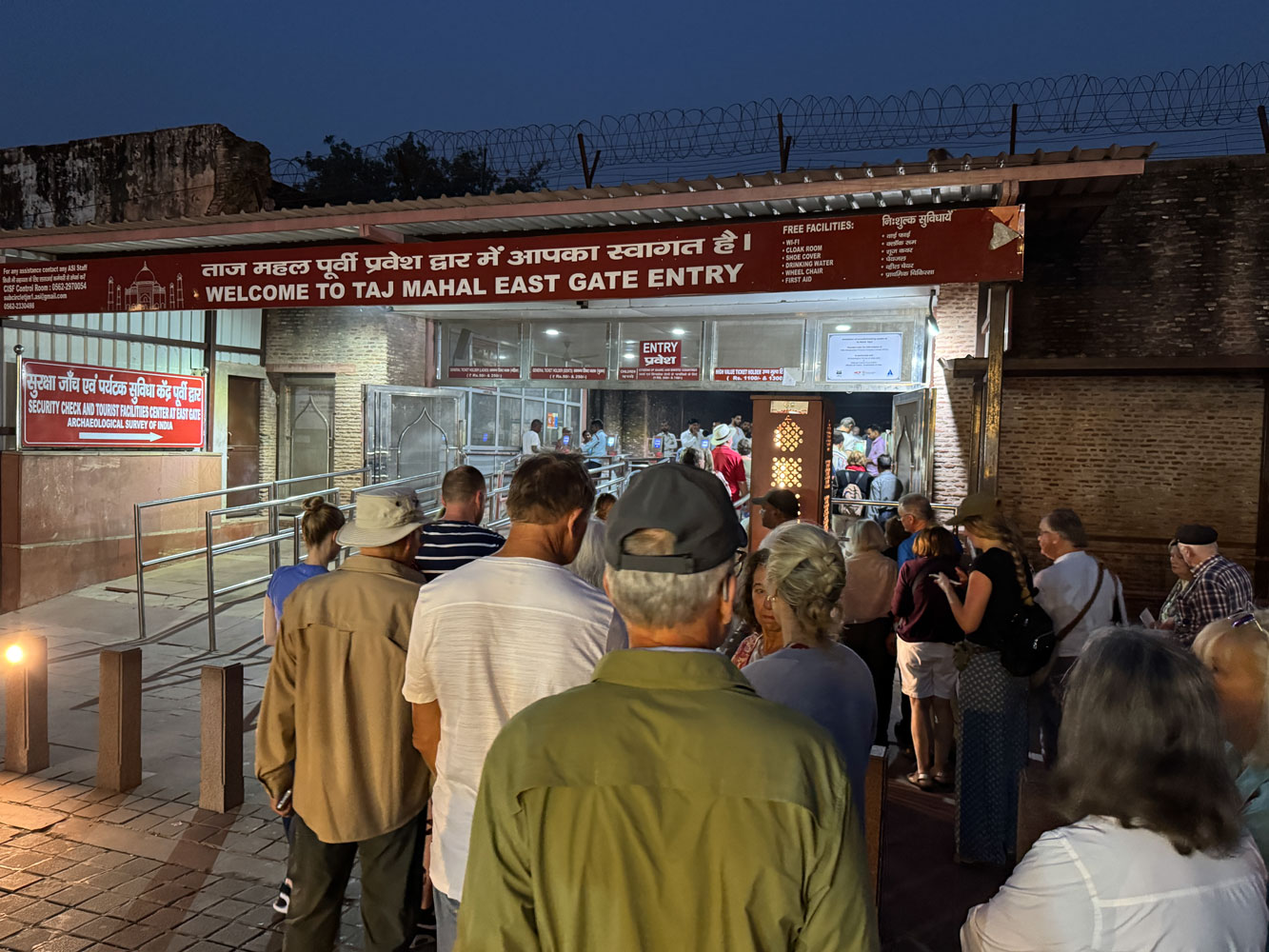
We walked onto the grounds and came upon the Darwaza-i-rauza, the Great Gate.
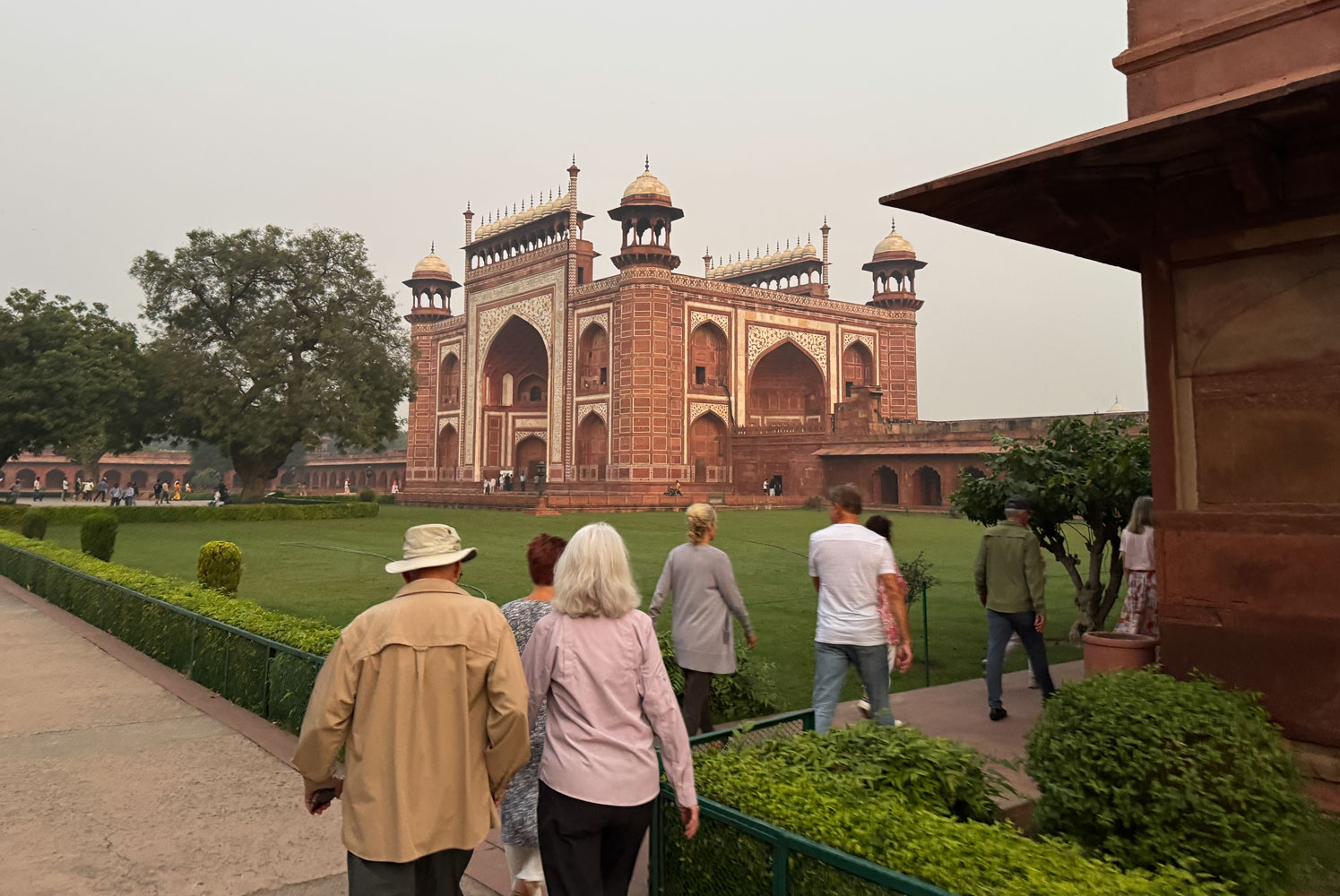
Finally, we got our first view of the Taj.
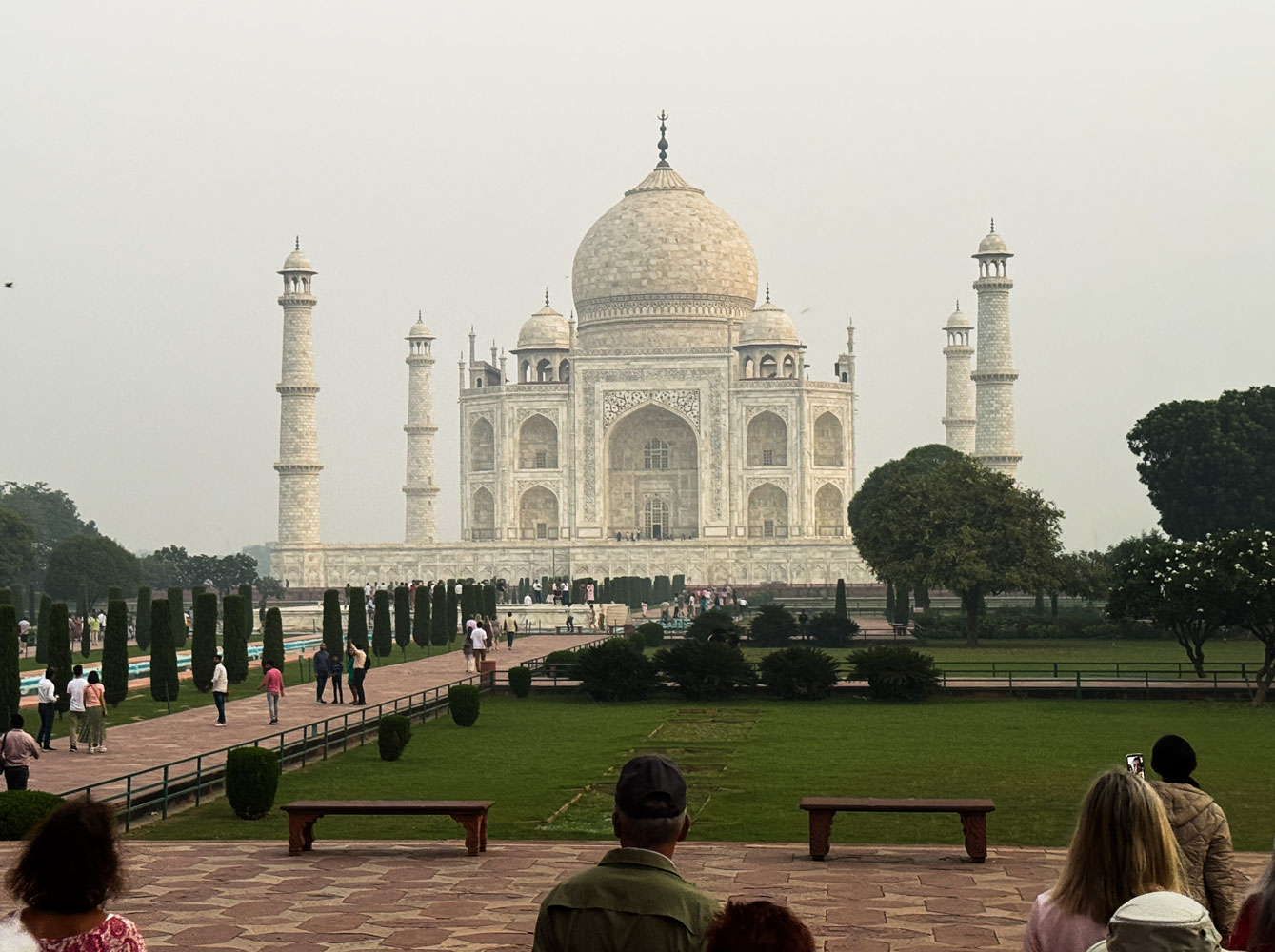
I took a LOT of pictures of the Taj but I'm only going to put a few here.
Judy in front of the Taj.
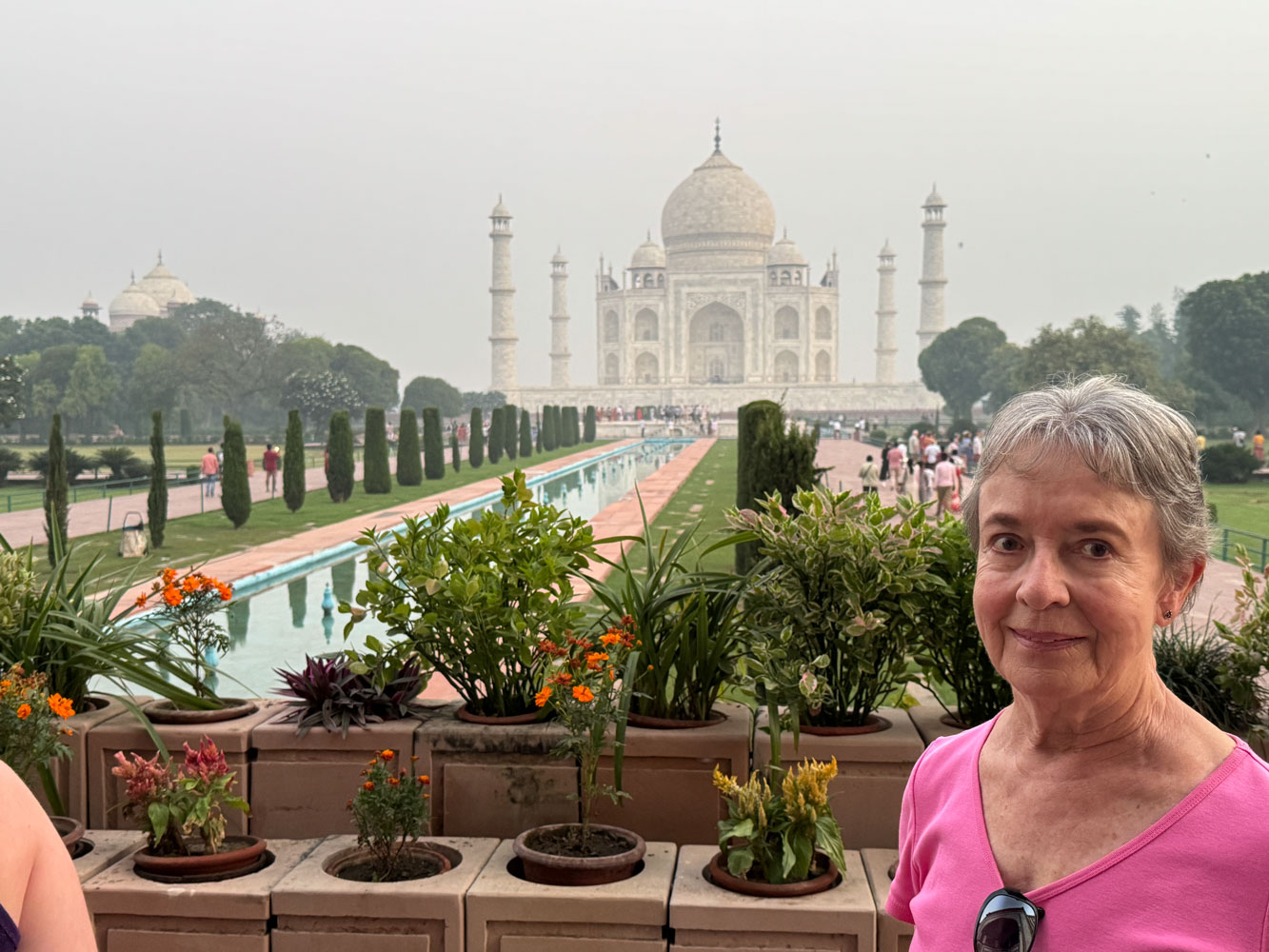
A view directly toward the Taj.
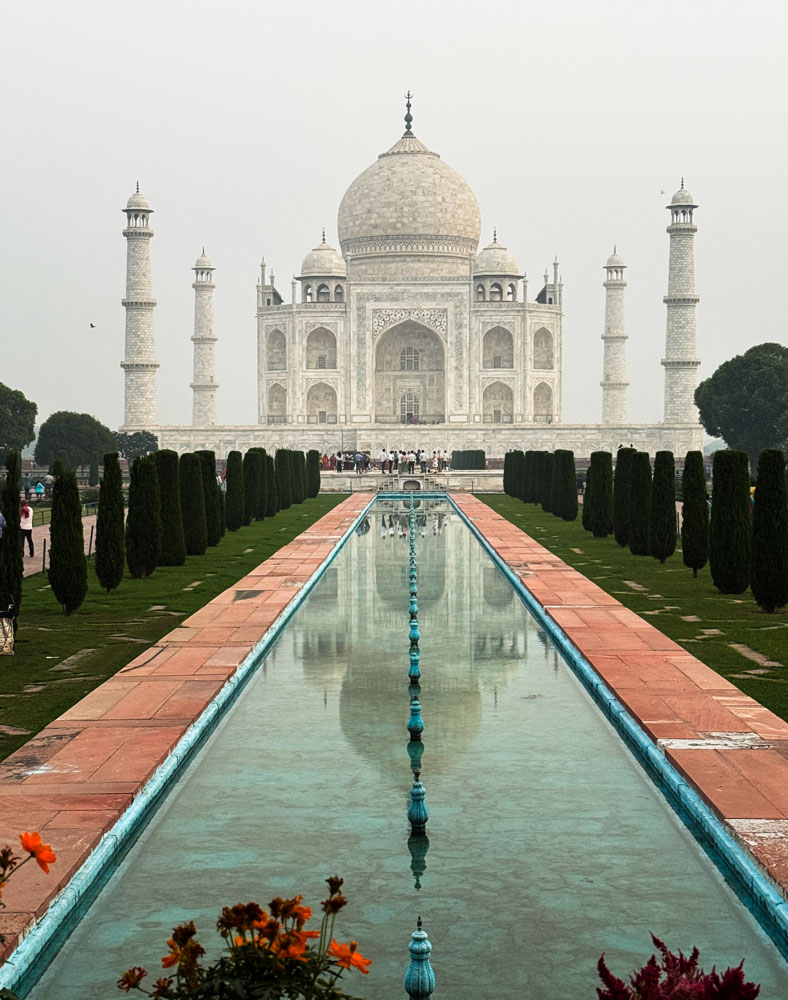
Tauck arranged for a photographer to assist us with pictures. Here are two he did of Judy and me. He poured some water on the floor and then put the iPhone upside down (lenses down) on the wet surface. The water provided the reflection.
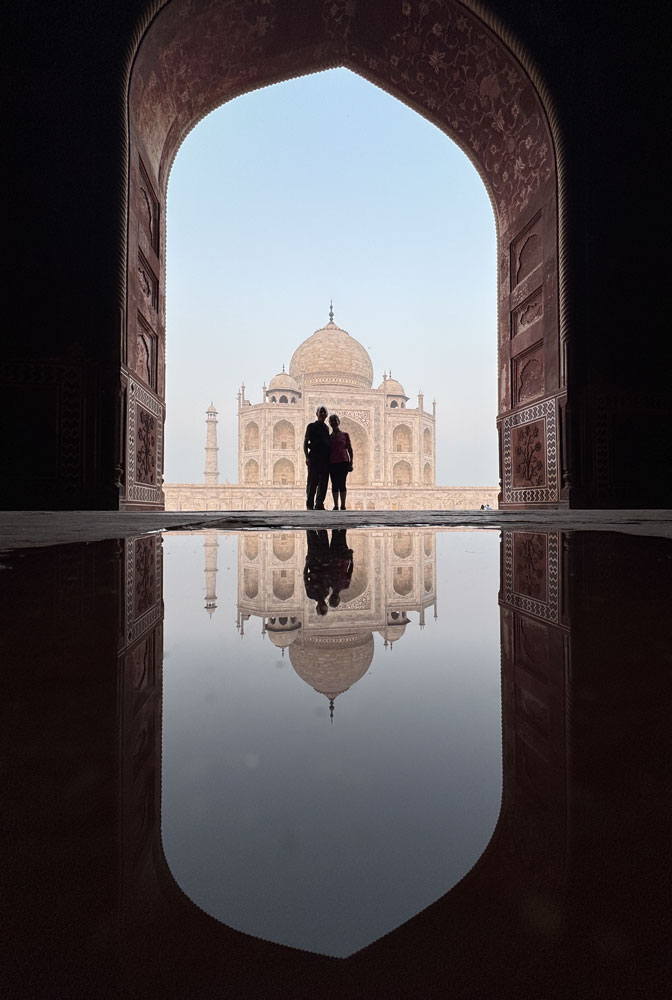
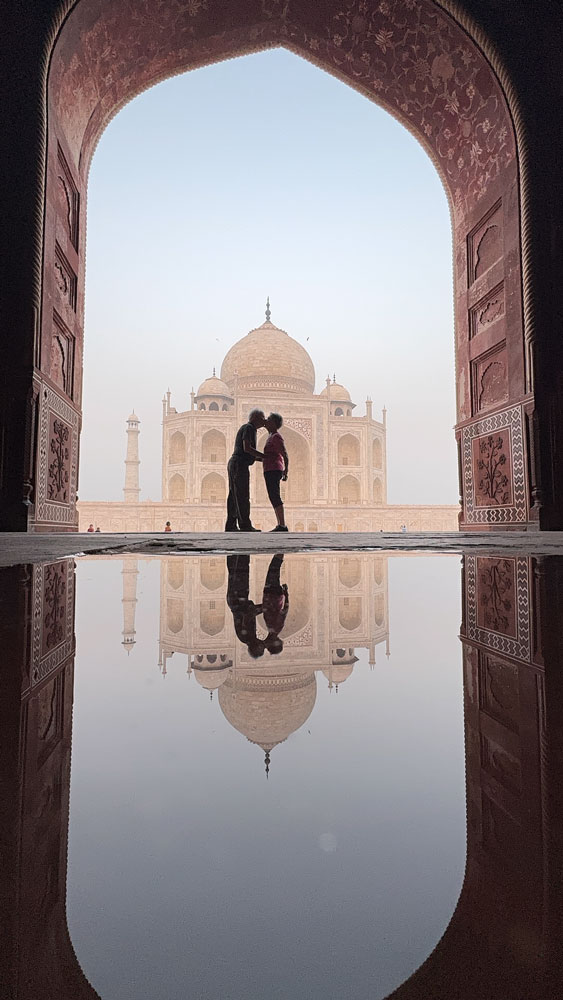
Here's the photographer. He was very good at interesting composition.
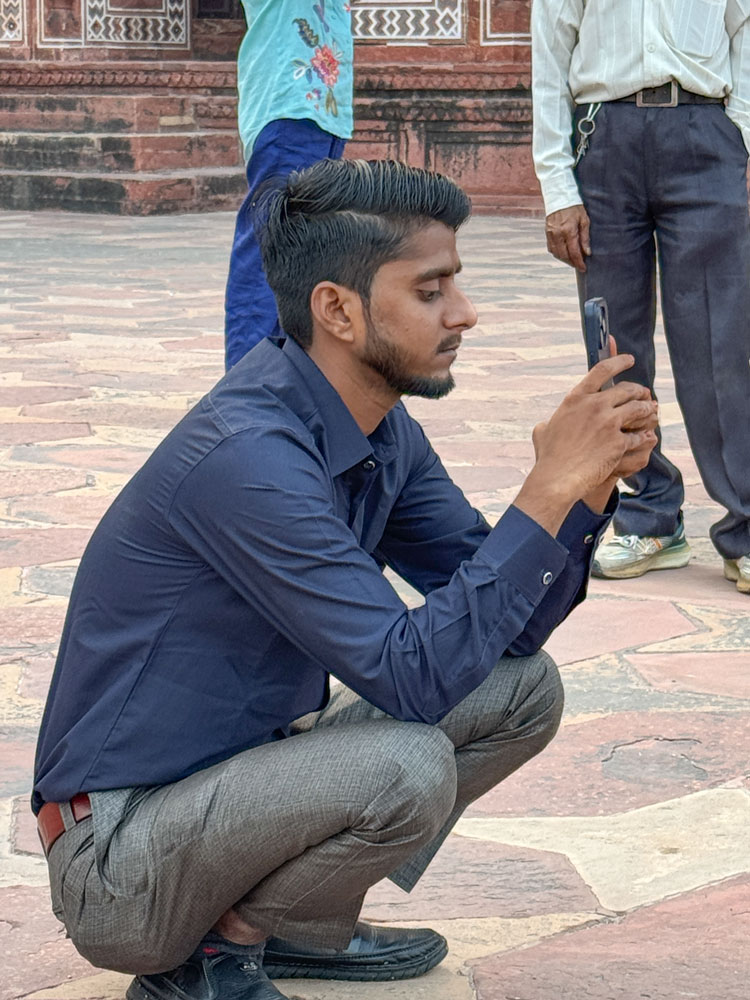
About the time we were leaving, the sun peeked its head up.

A picture of the Taj in the sunlight.
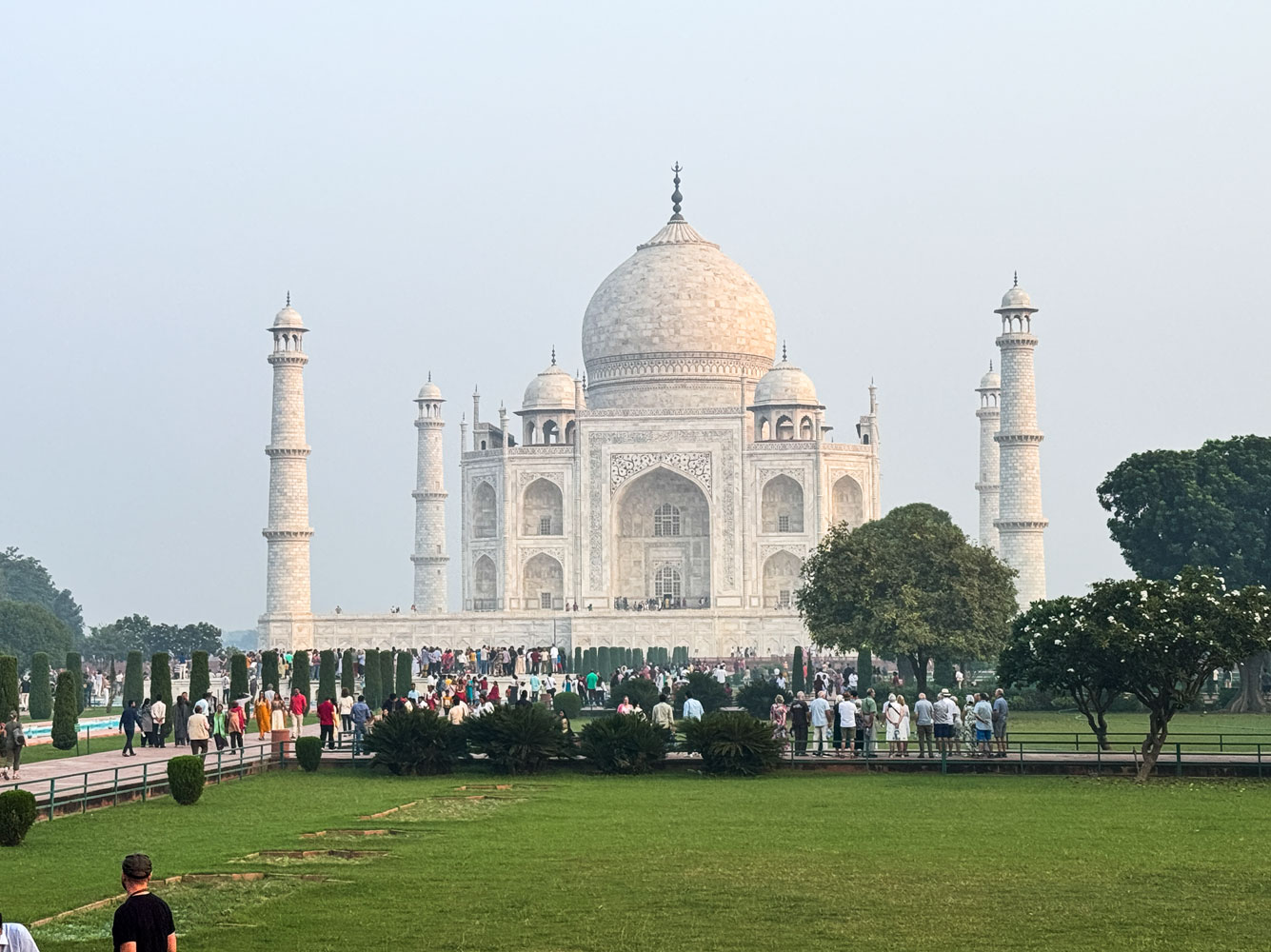
We went back to the hotel for breakfast. We'll depart the hotel about 9am for a more in-depth tour of the Taj.
About 9am, we took the electric carts back to the Taj.
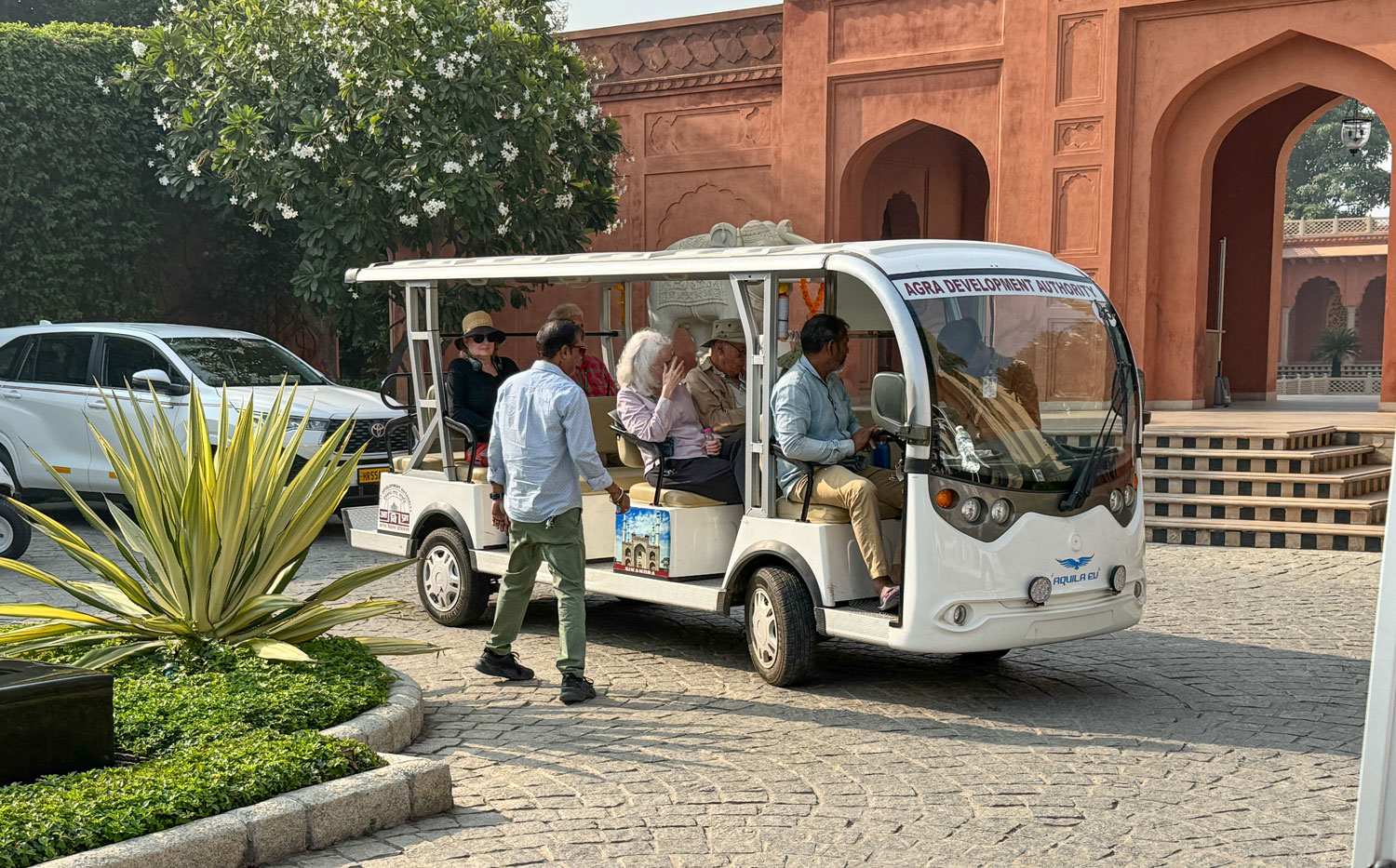
Our arrival at the Taj was the same as it was in the morning, so no pictures.
As we entered the main grounds through the Darwaza-i-rauza, the Great Gate, I took this picture framed by the arch. This massive building seems to float in the air, and is possibly one of the most- photographed locations in the world. The colors seem to change through the day, giving it a magical feeling.
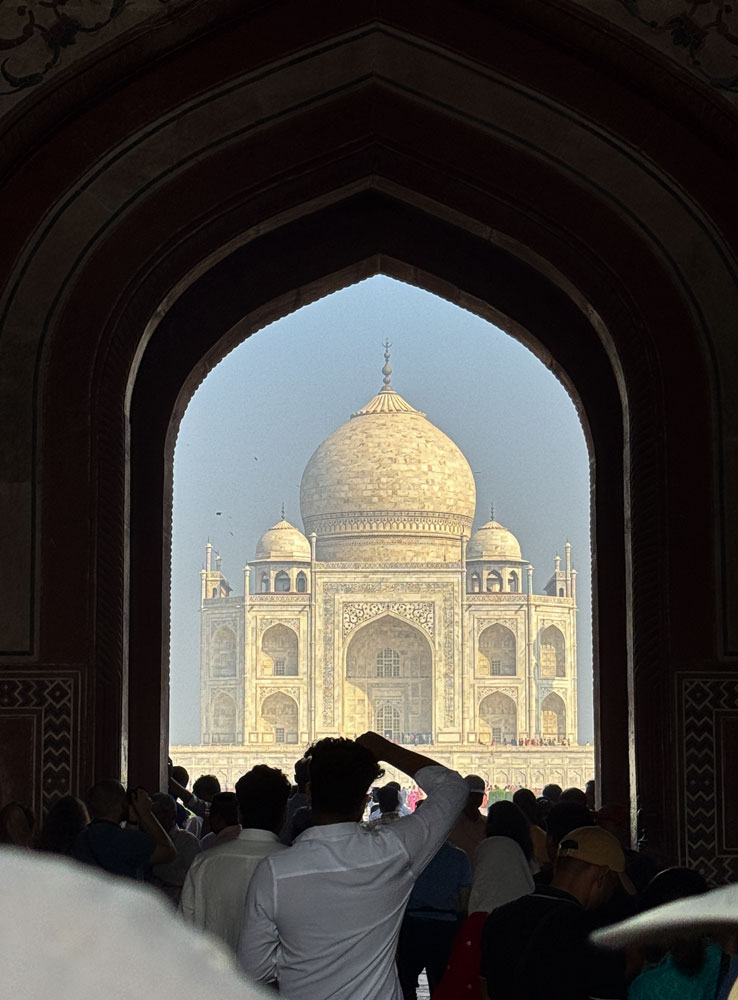
Judy and me at the Taj.
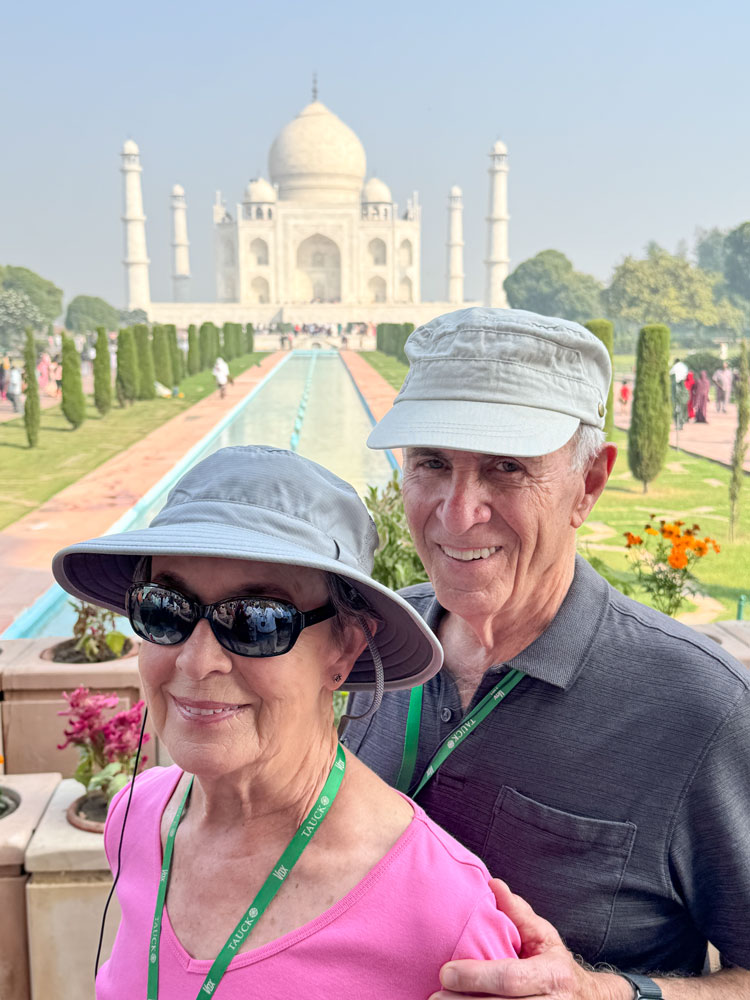
Annie arranged for a group shot, but we couldn't get electronic copies - only paper. So I had to wait until we got home to scan the paper and create this electronic copy. Doing it this way always degrades the image a bit.

I took a lot more pictures during this visit but I'll only post a few.
Our guide took us into the Taj, but photography is not allowed in the building. The tomb of Mumtaz Mahal is located directly under the dome, in the center of the Taj. When Shah Jahan passed away in 1658, his tomb was placed to the side of the tomb of Mumtaz Mahal. Everything about the Taj is symmetrical, but his burial there upset the symmetry.
Although we could not take pictures, through the magic of the Internet here are a couple of pictures of their cenotaphs under the dome. Their sarcophagi are one level down.
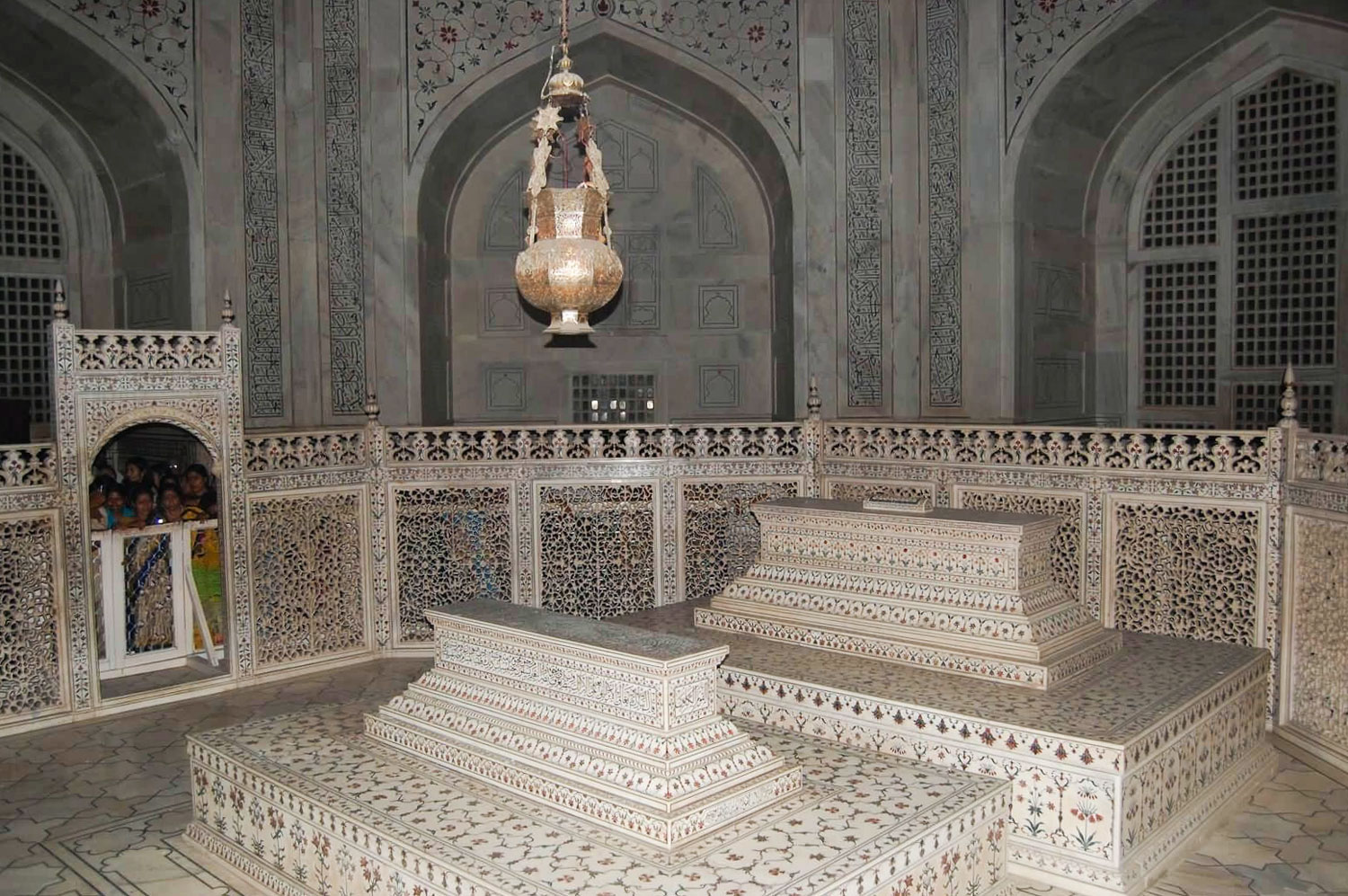
Their sarcophagi in a chamber below the main part of the Taj.
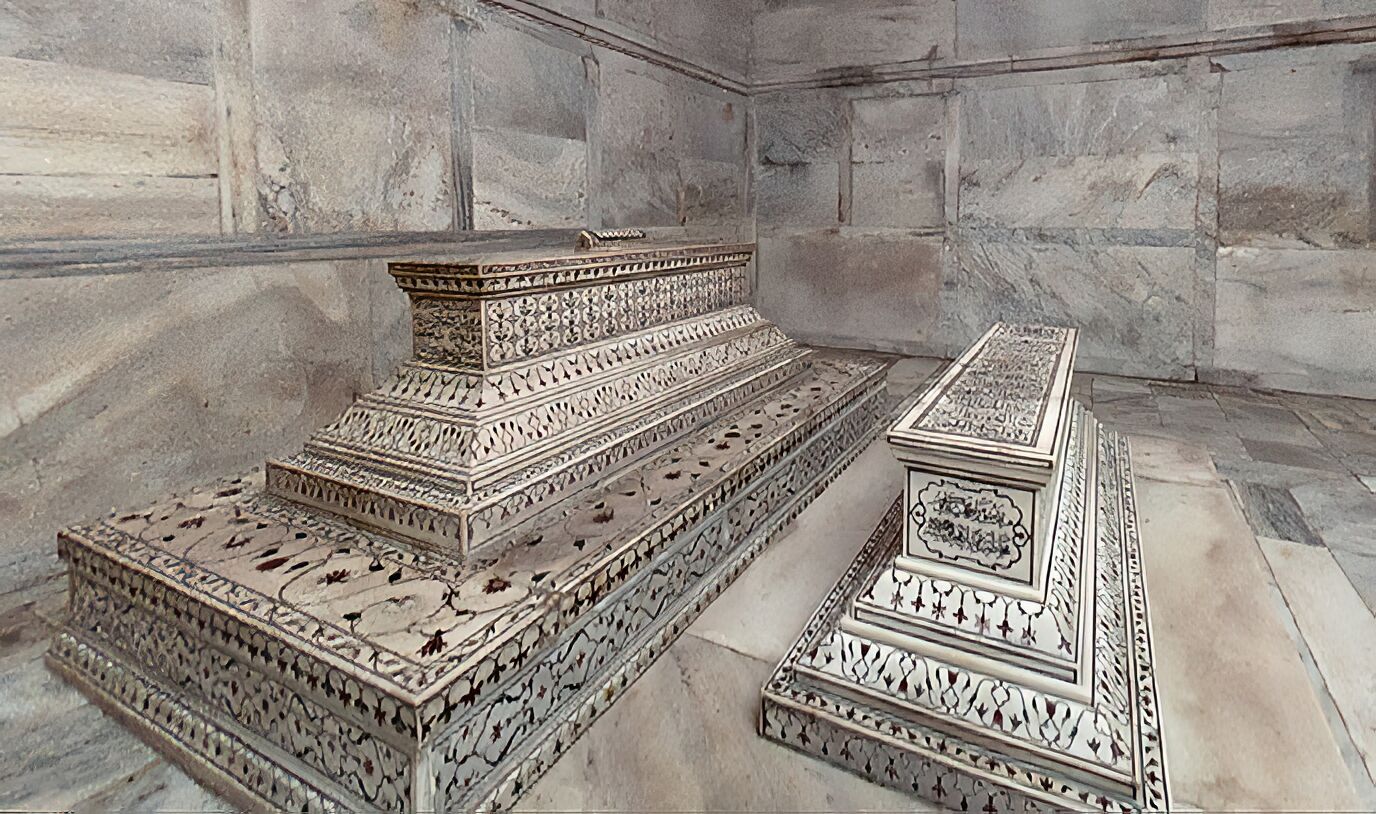
While this picture is not very good from a technical point of view, it does a better job of showing the broken symmetry. His tomb is larger, and next to hers, which is perfectly centered.
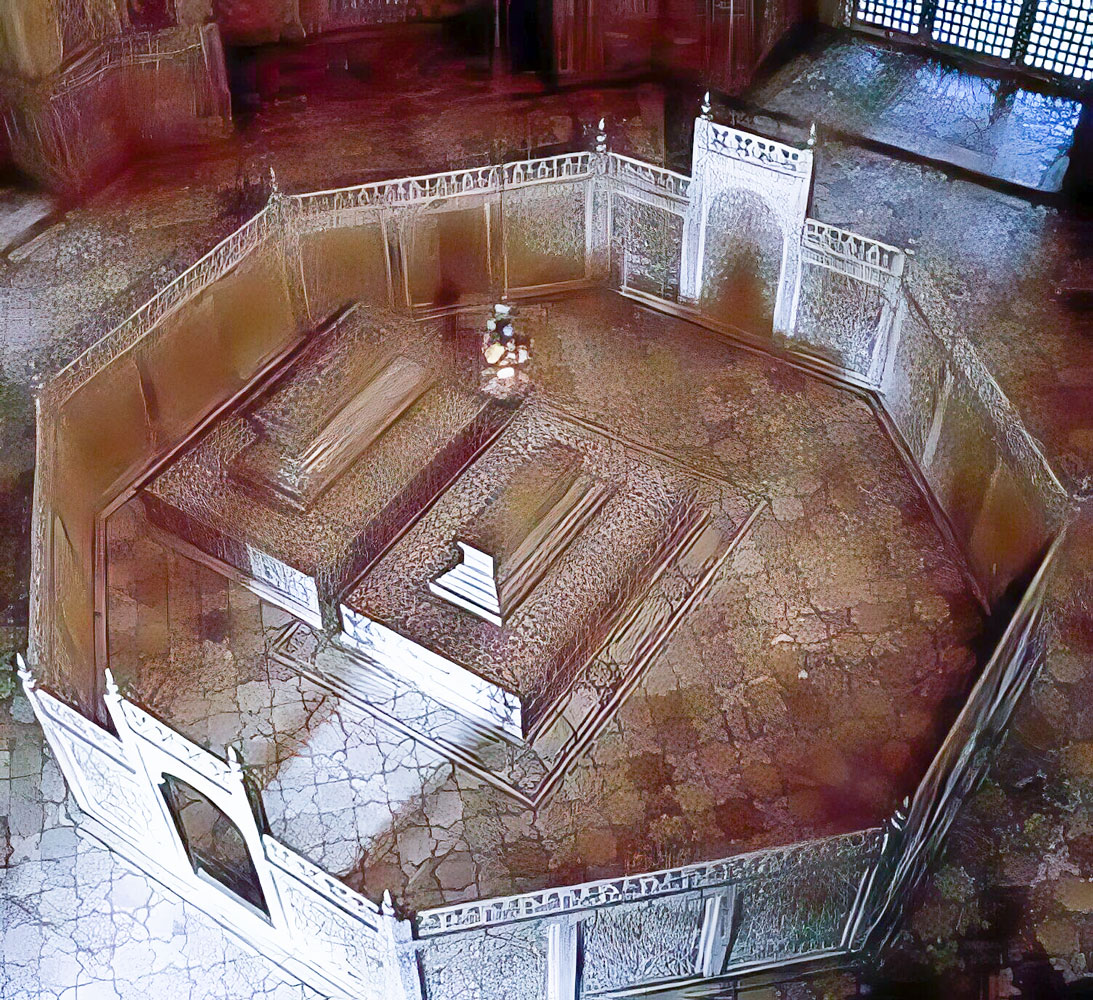
I'm not sure whether the "fence" around the tombs is original. I found some pictures with the fence missing.
Once we exited the Taj building we could take pictures again. Our guide took this picture of us through one of the stone screens.
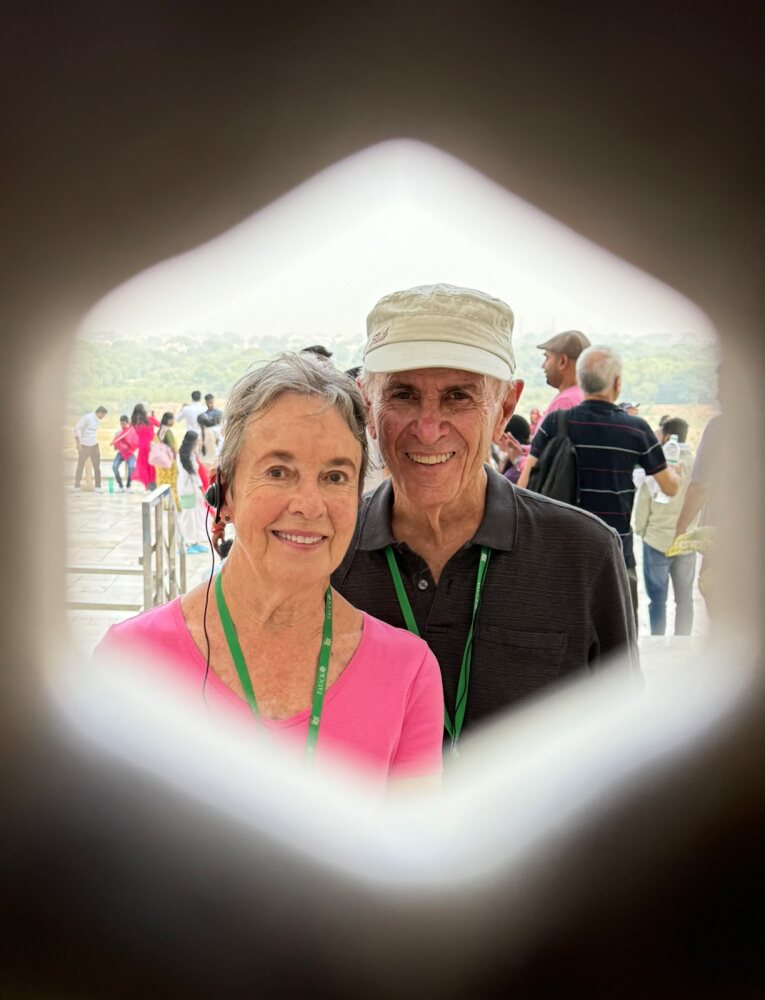
This view is from the Taj towards the Great Gate. The air was not very clear.
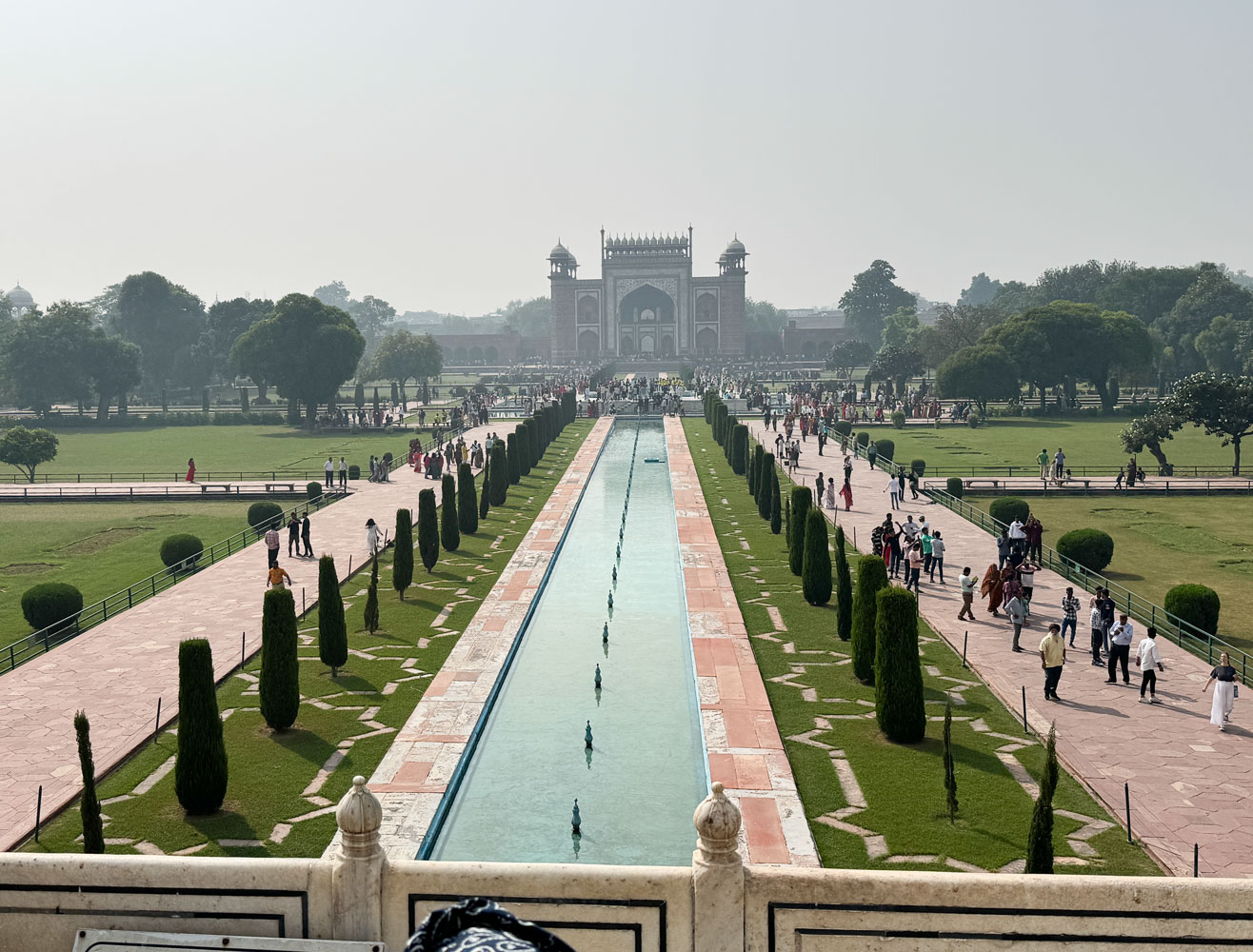
One of the minarets. They were built leaning slightly away from the main building so that if a earthquake damaged them they would tend to fall away from the Taj.
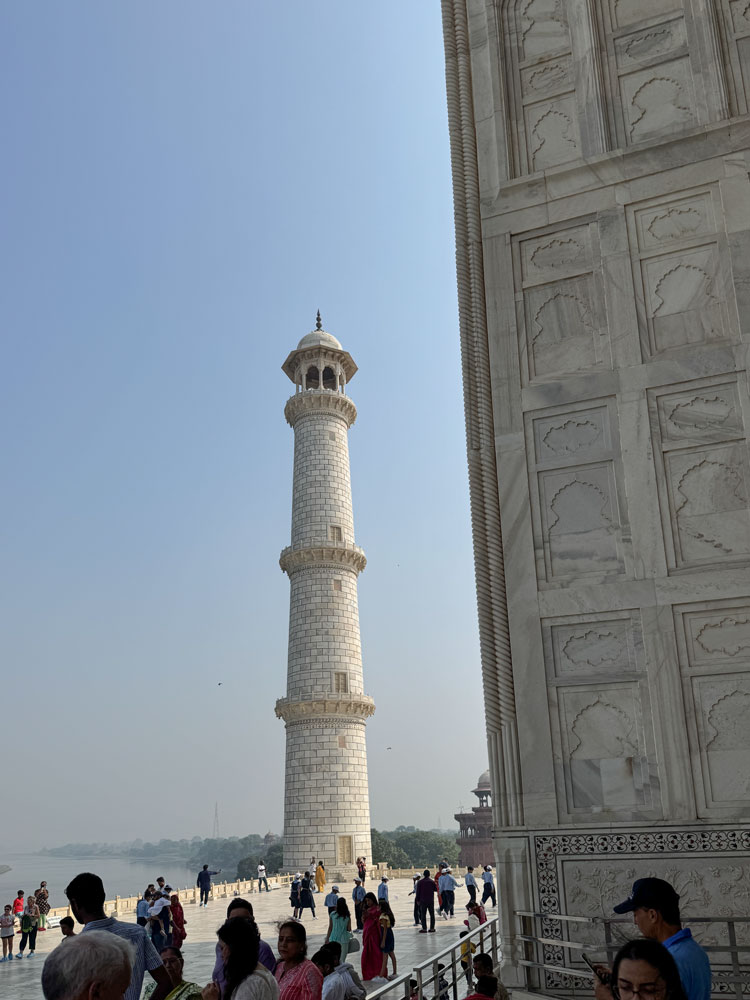
A view of the river.
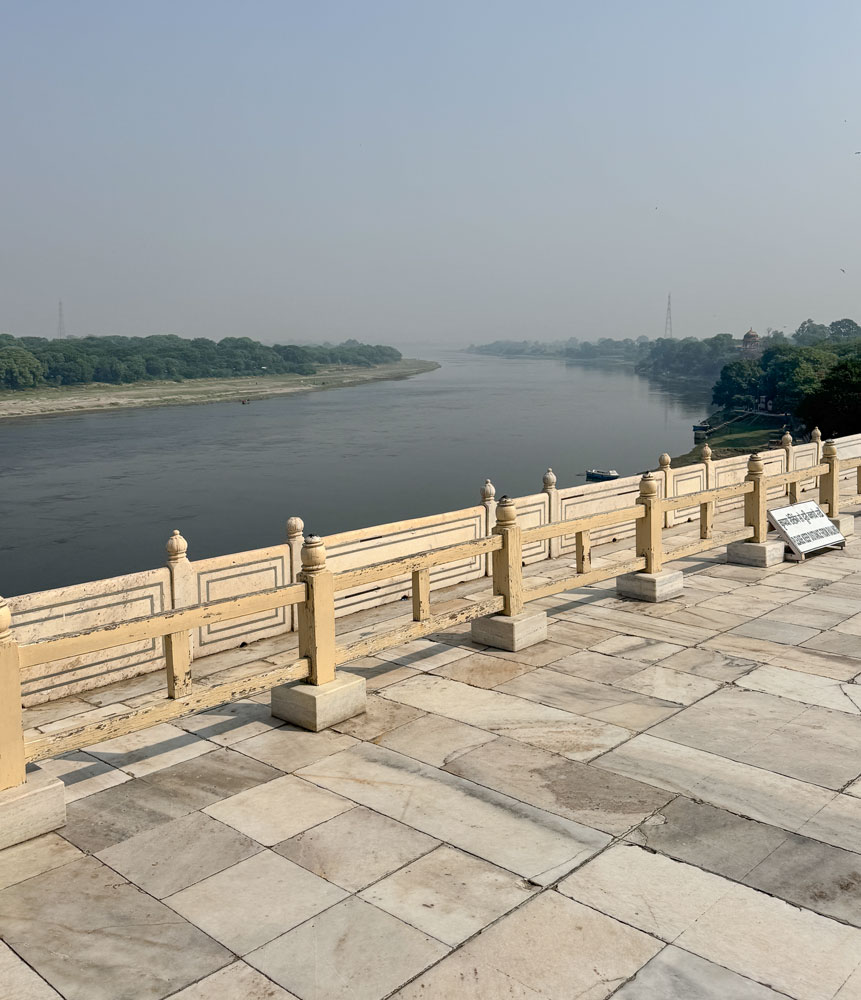
Then we descended back to ground level and walked towards the exit. Here are my last couple of pictures of the Taj.
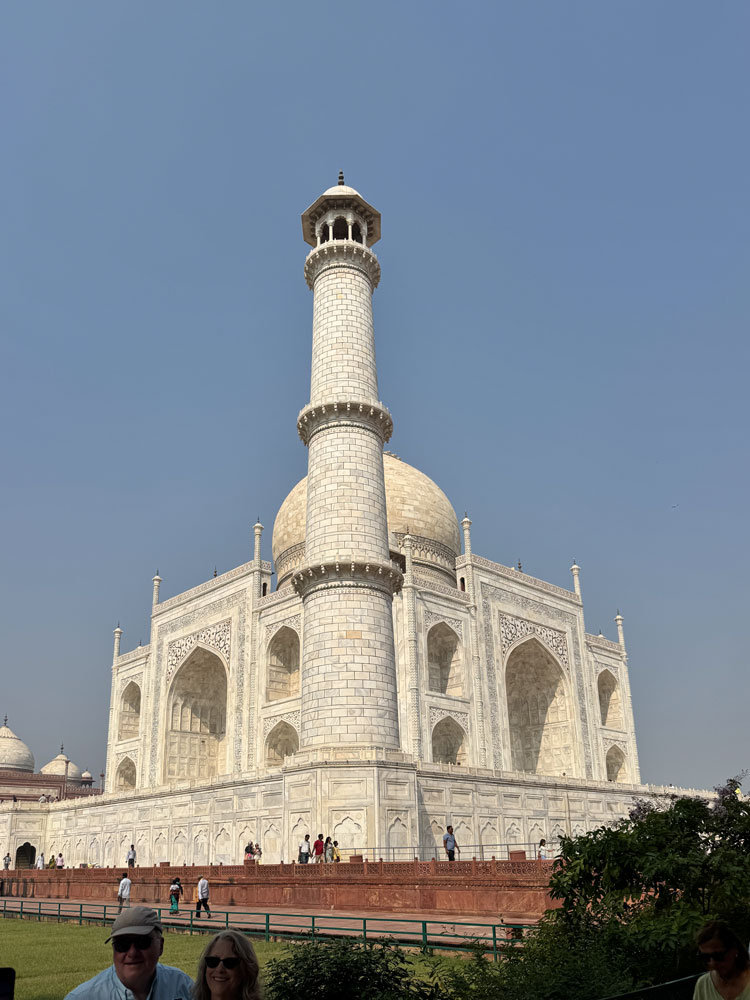
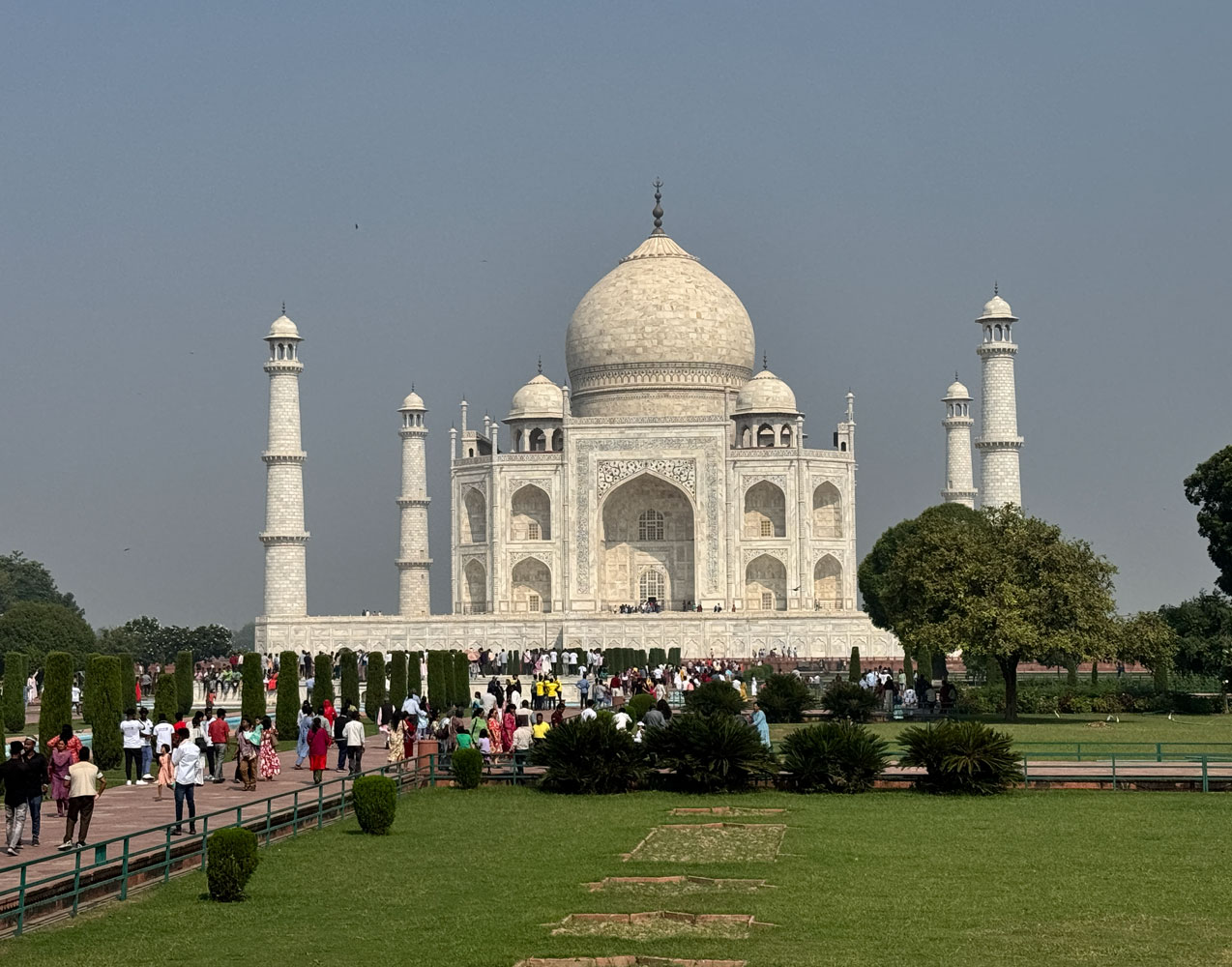
We went back to the hotel in the electric carts and boarded the bus to visit the Red Fort, also known as the Agra Fort.
The fort probably developed over time. Emperor Huyamun (whom we met in Delhi) was crowned here in 1530.
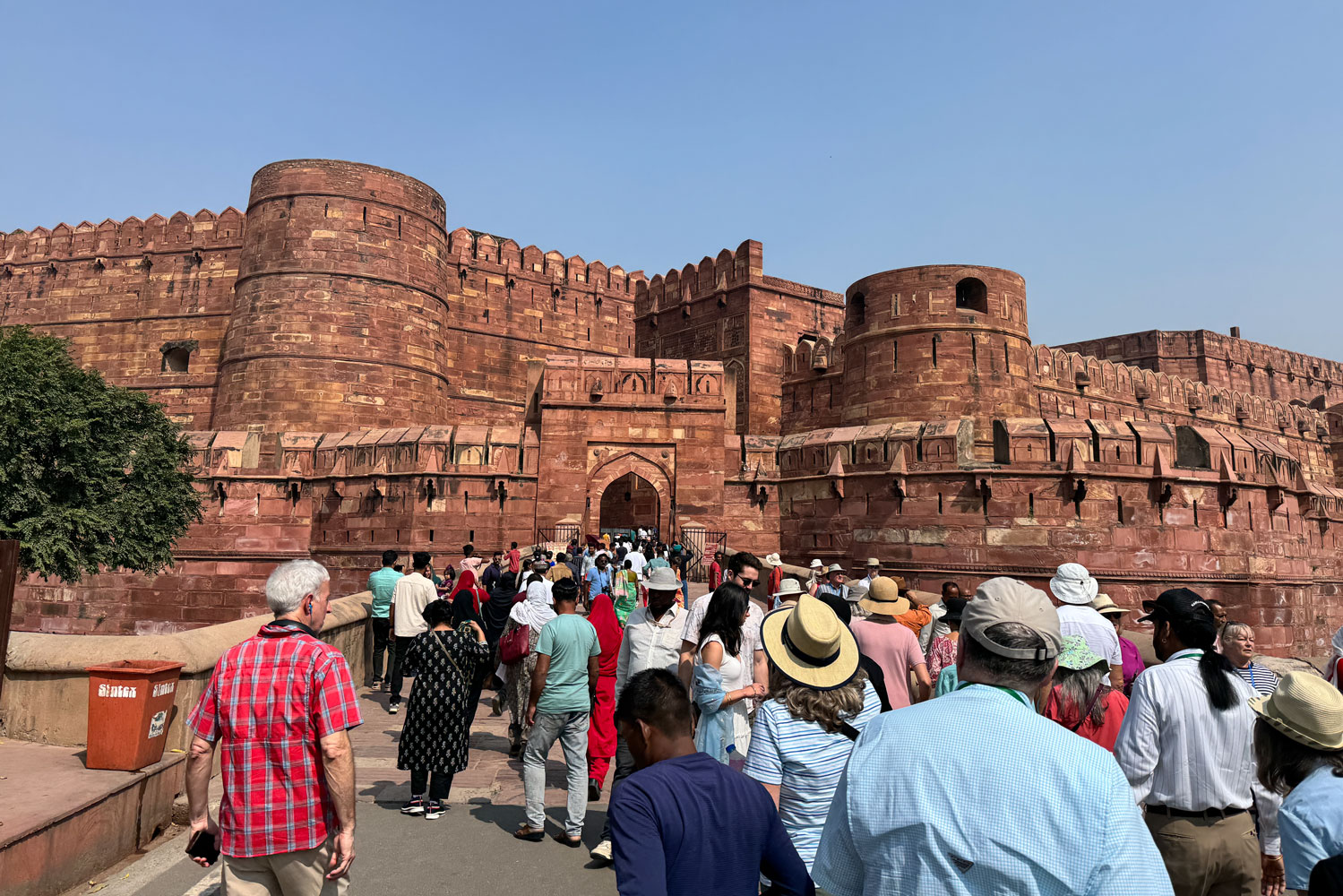
I'm afraid I didn't have a lot of interest in the fort (especially after visiting the Taj) so I didn't do a very good job of documenting it. But here are some pictures.
The entrance gate.
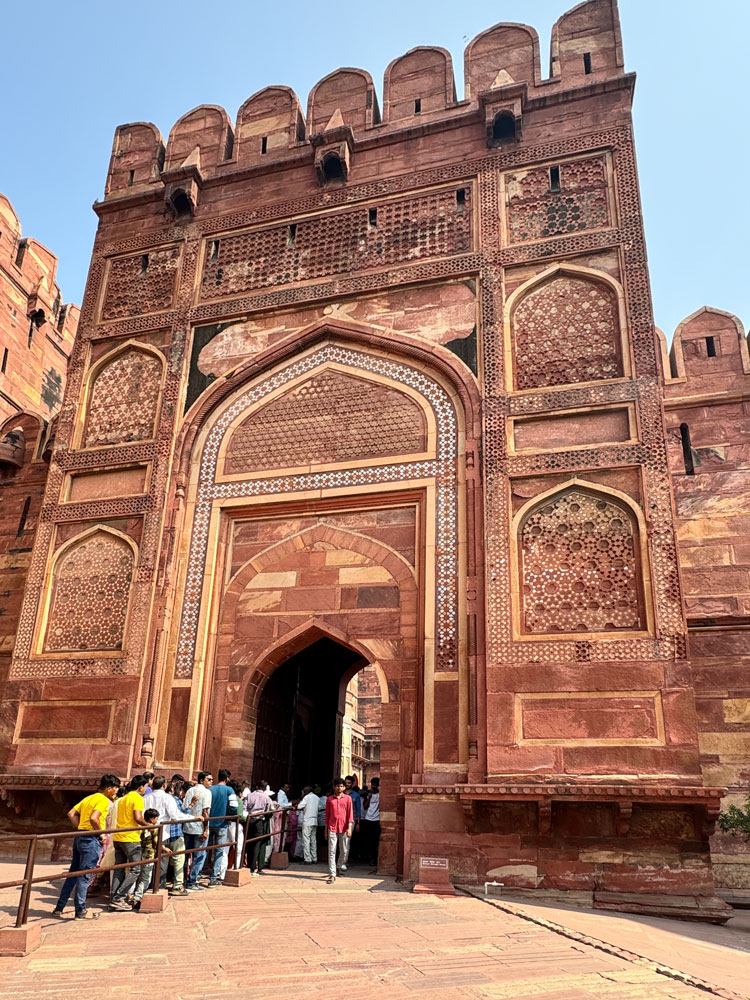
Some photos of buildings inside the fort.
This is Jehangir Mahal.
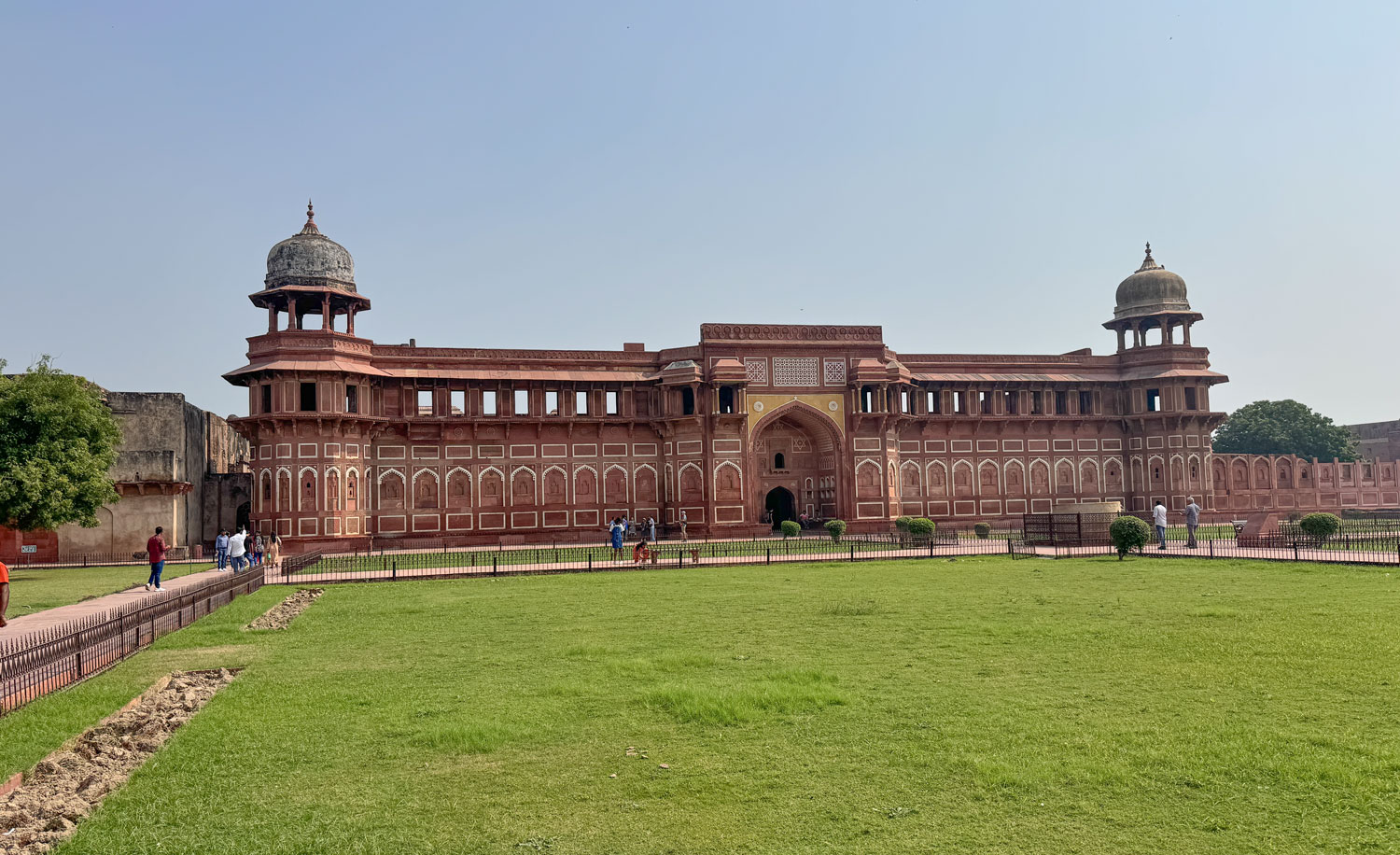
The Mosque.
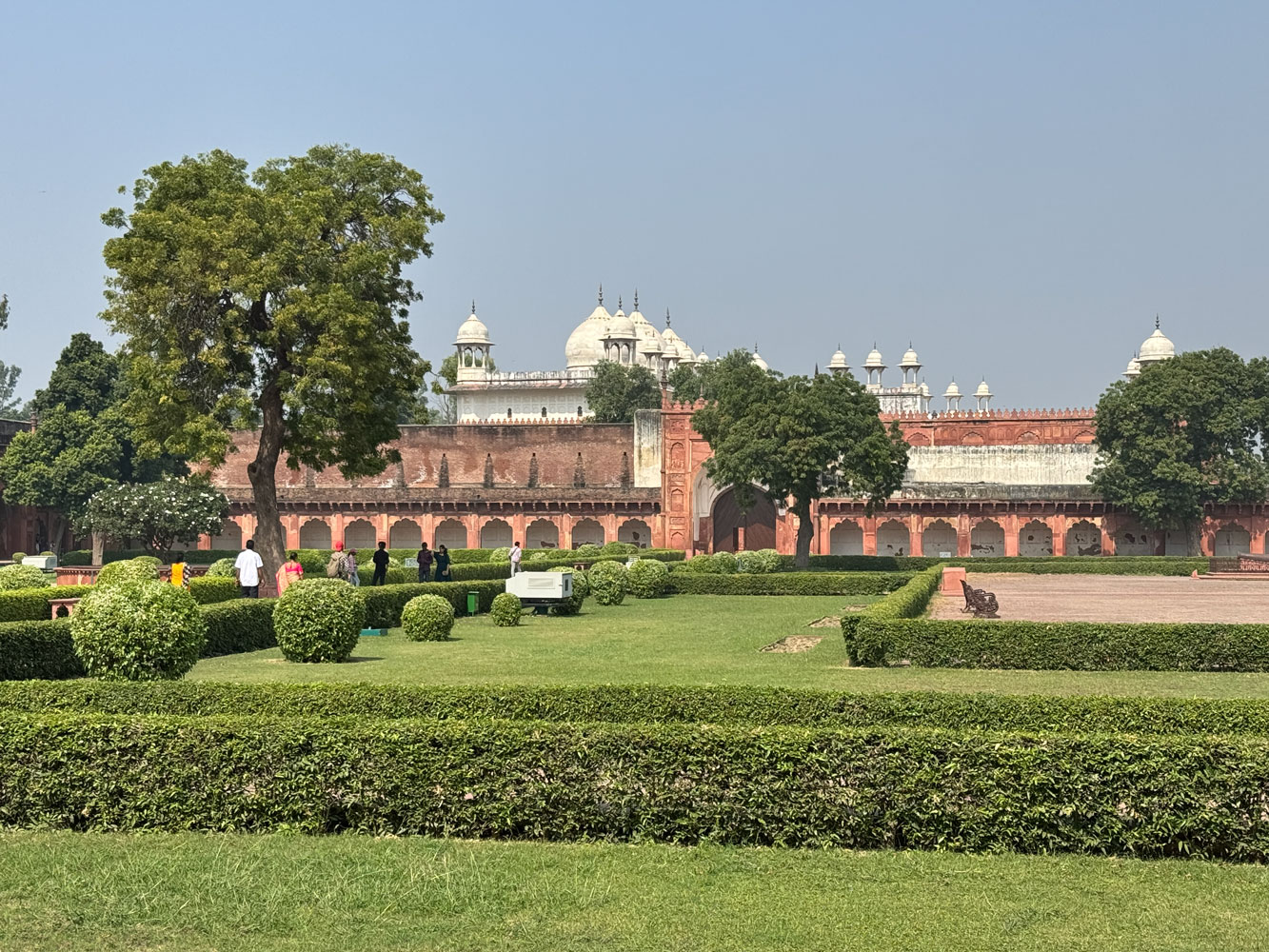
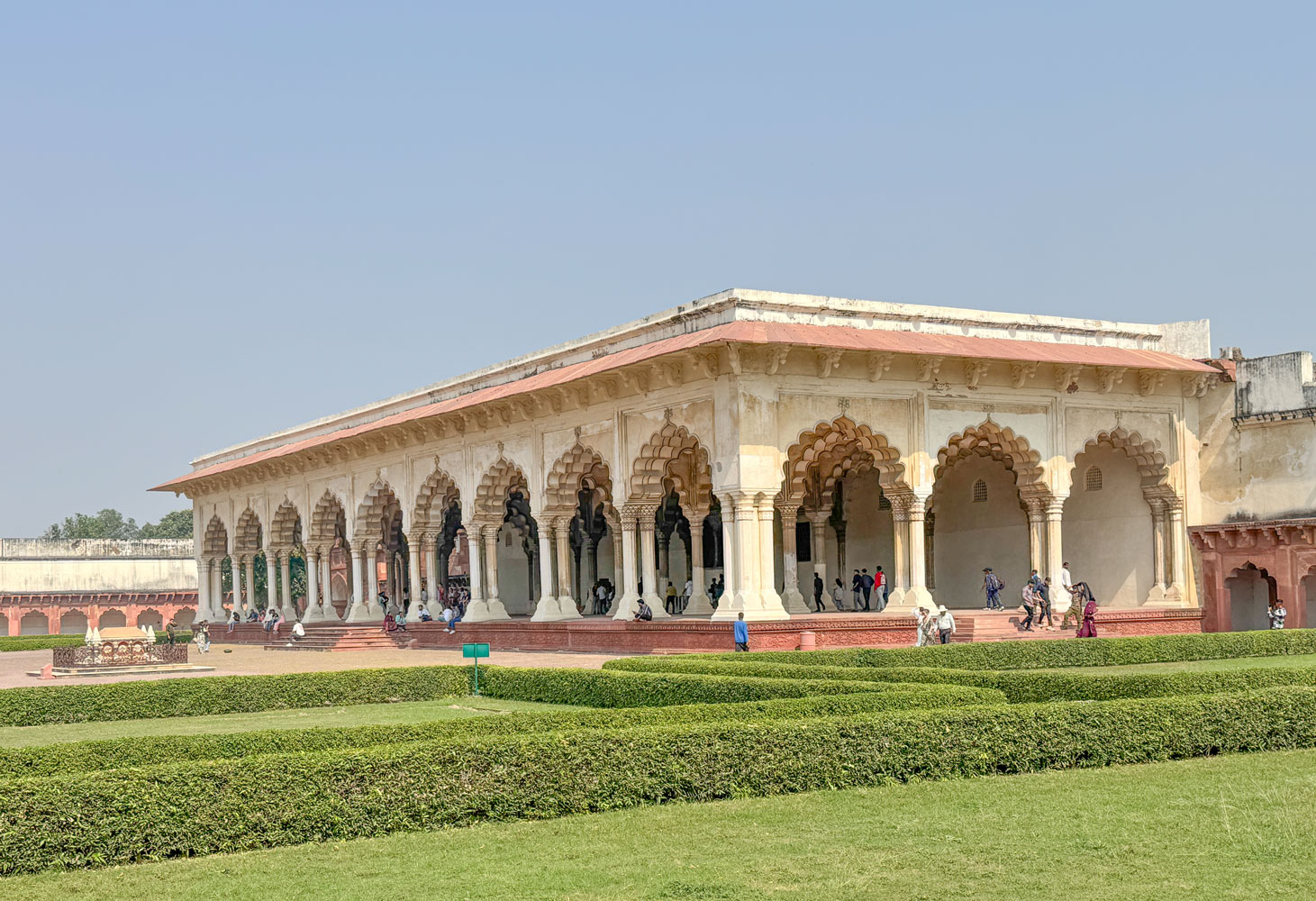
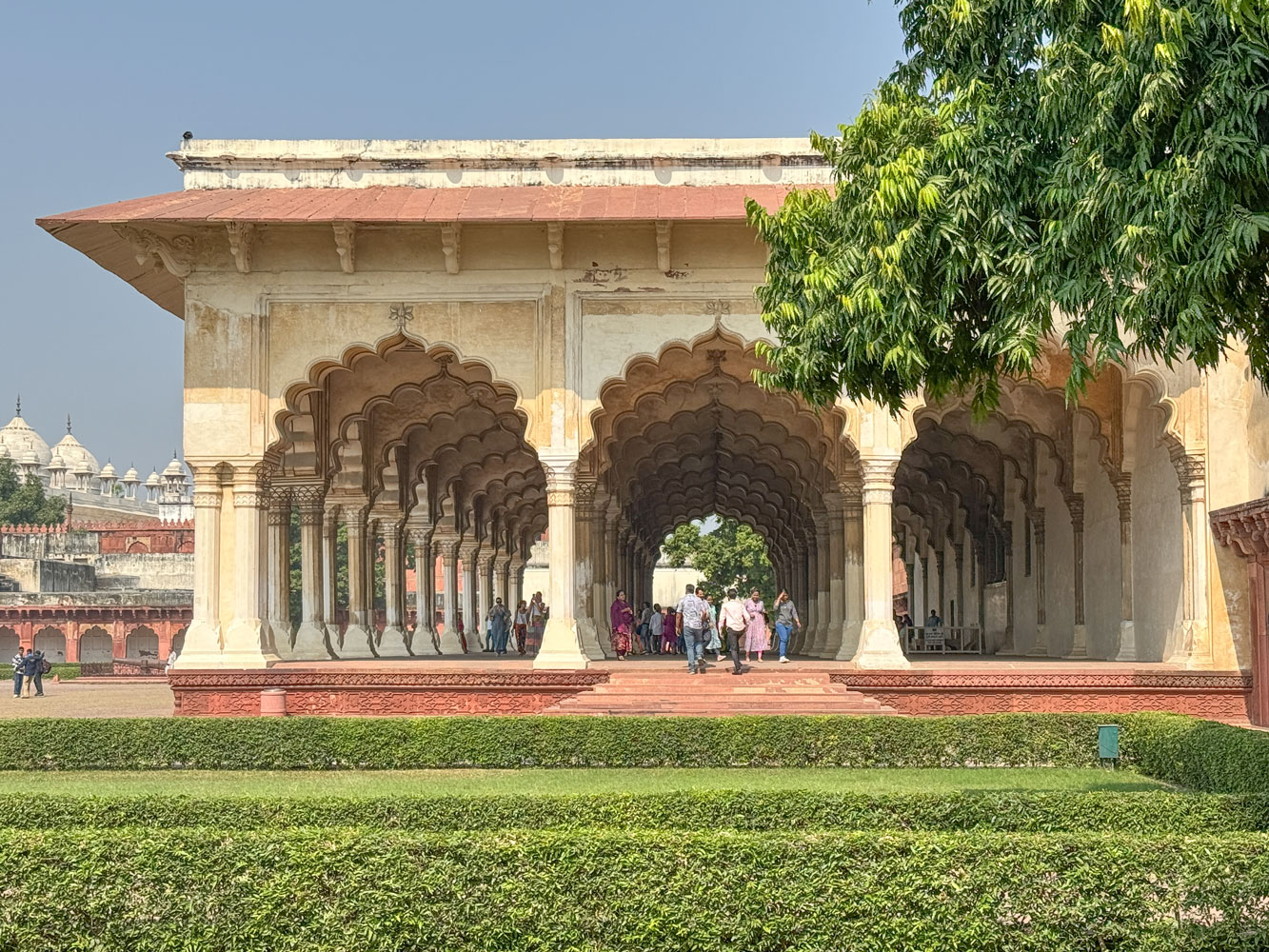
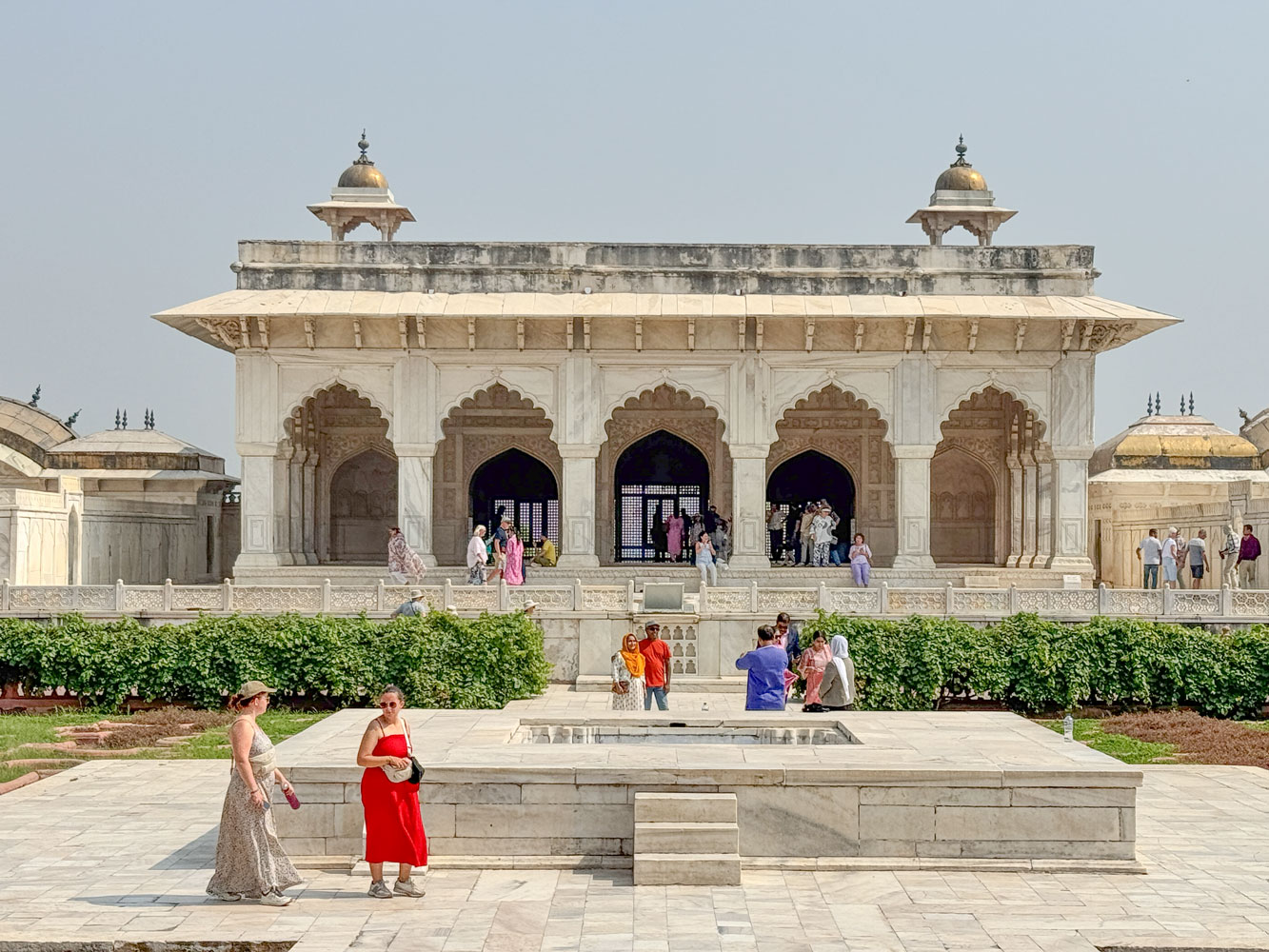
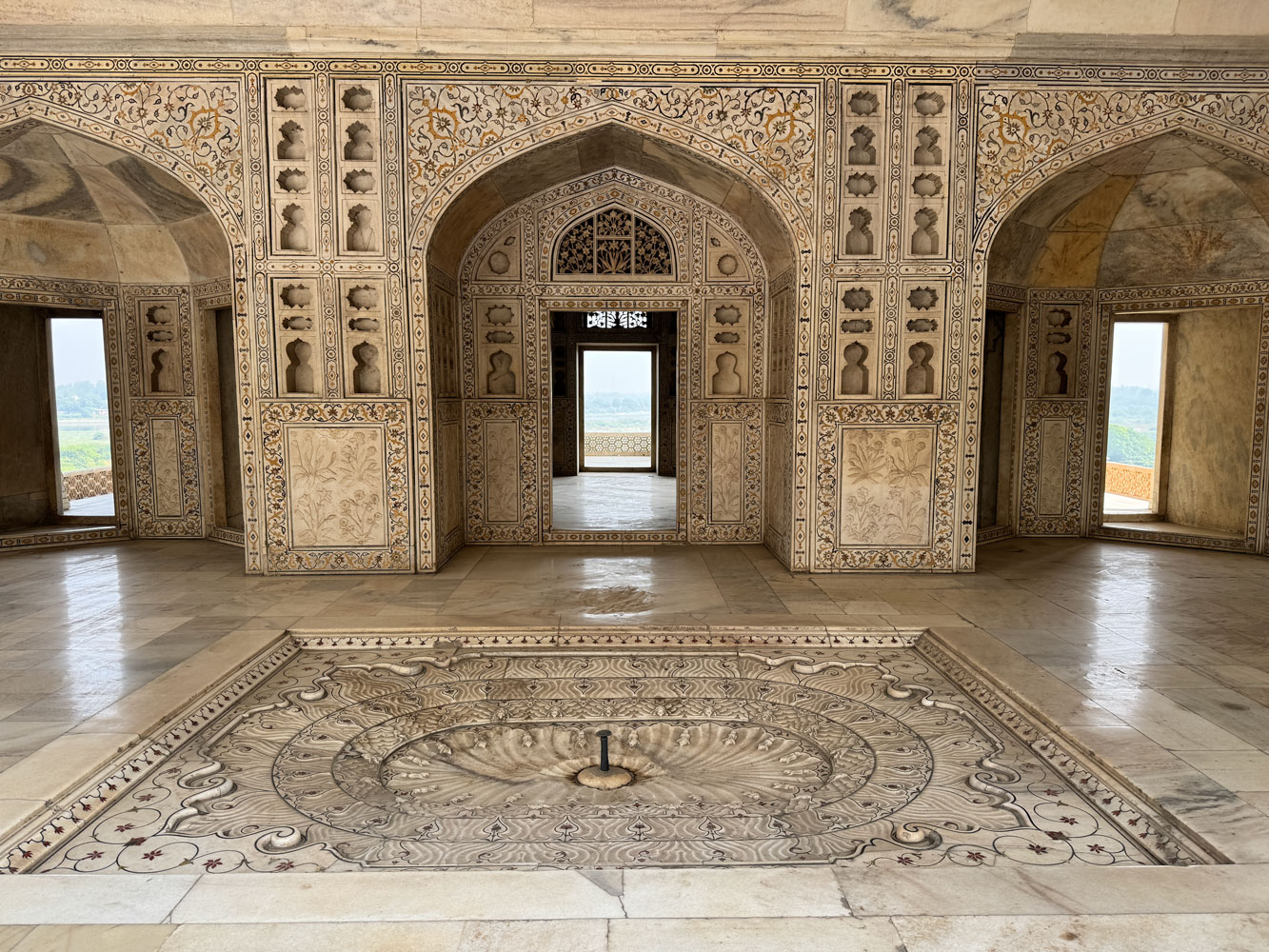
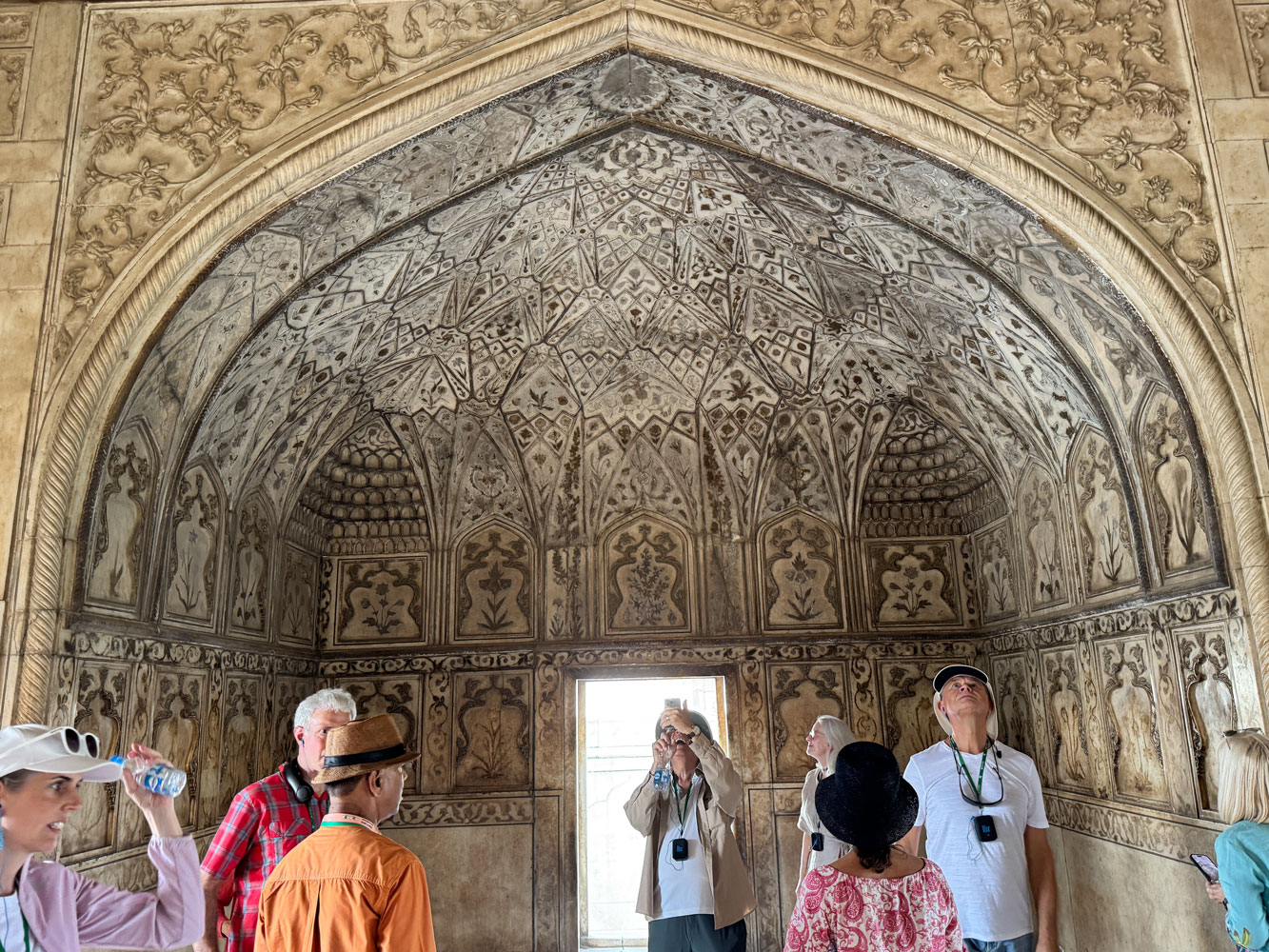
This man had a pedal-truck and was delivering some items to the fort. Tough job - the merchandise weighed even more than a couple of tourists.
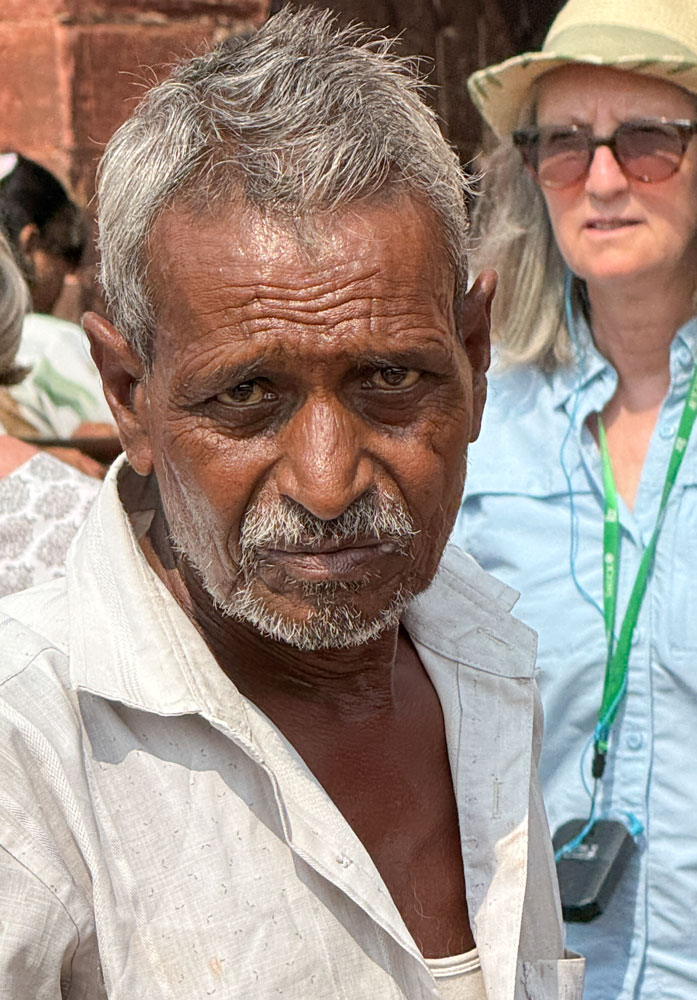
We then went back to the hotel and had time to ourselves all evening. While we were having (early) dinner, we noticed some dancers performing in the area at the back of the hotel.
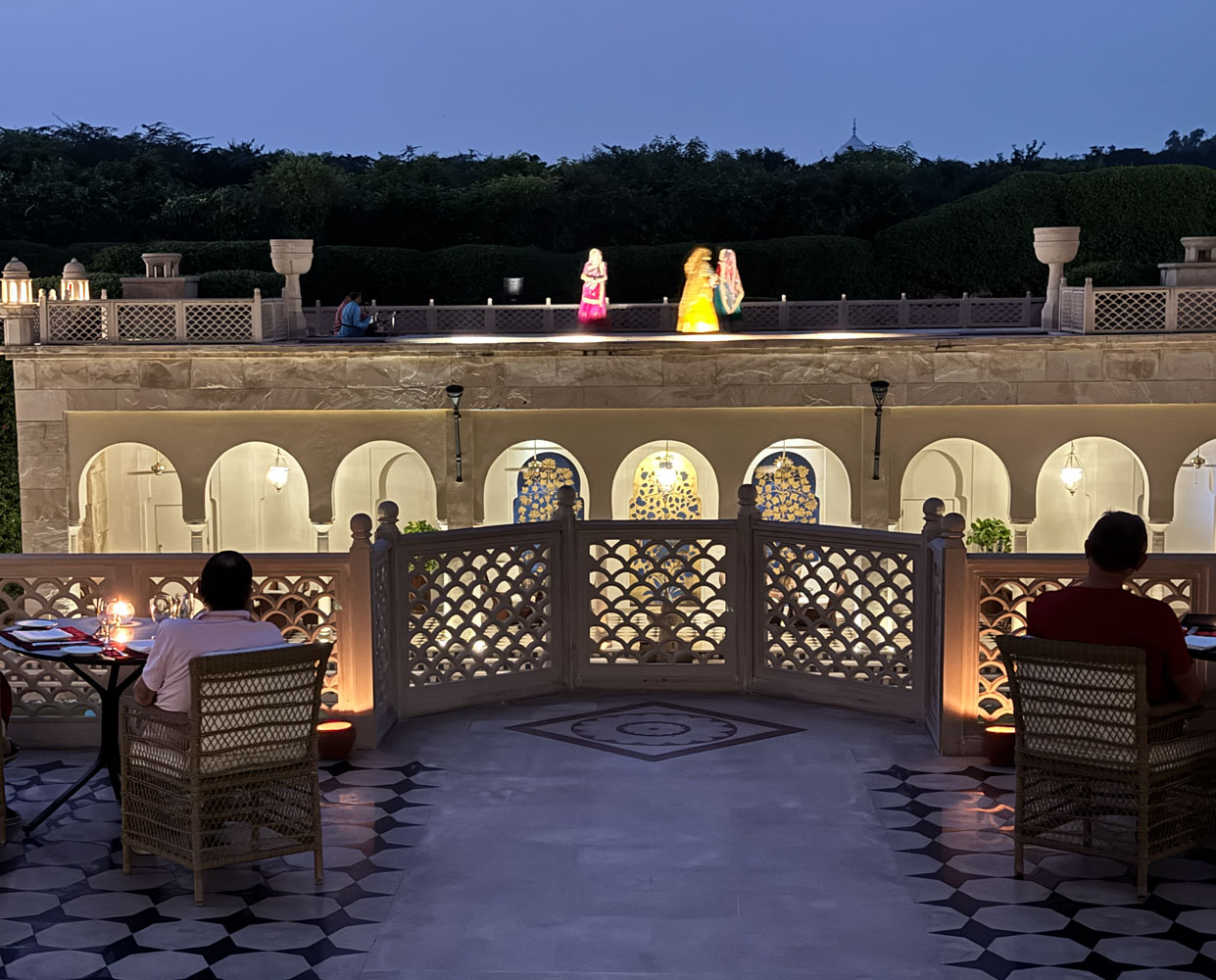
A closer view of the dancers.
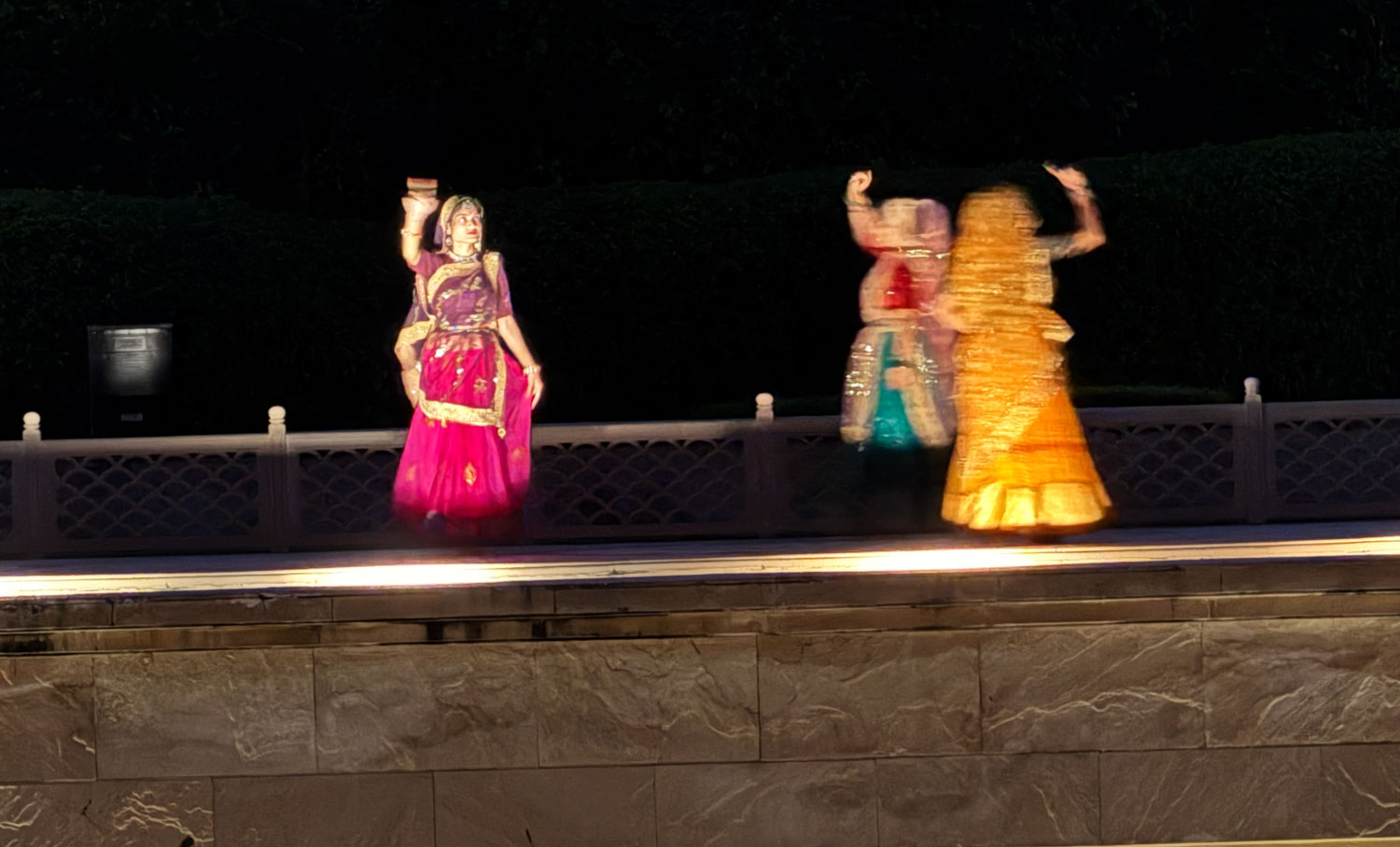
After dinner, we went to bed early. We have an early departure to Jaipur tomorrow.
++++++++++++++++++++++++++++++++++++++++++++++
10/25/2024 (Friday, Agra to Jaipur) We head to Jaipur by bus today. It's a good four-hour trip. Bag pull was 6:30am, breakfast at 7am, and on bus by 7:45am.
One of the hotel employees wishing us "Safe Travels".
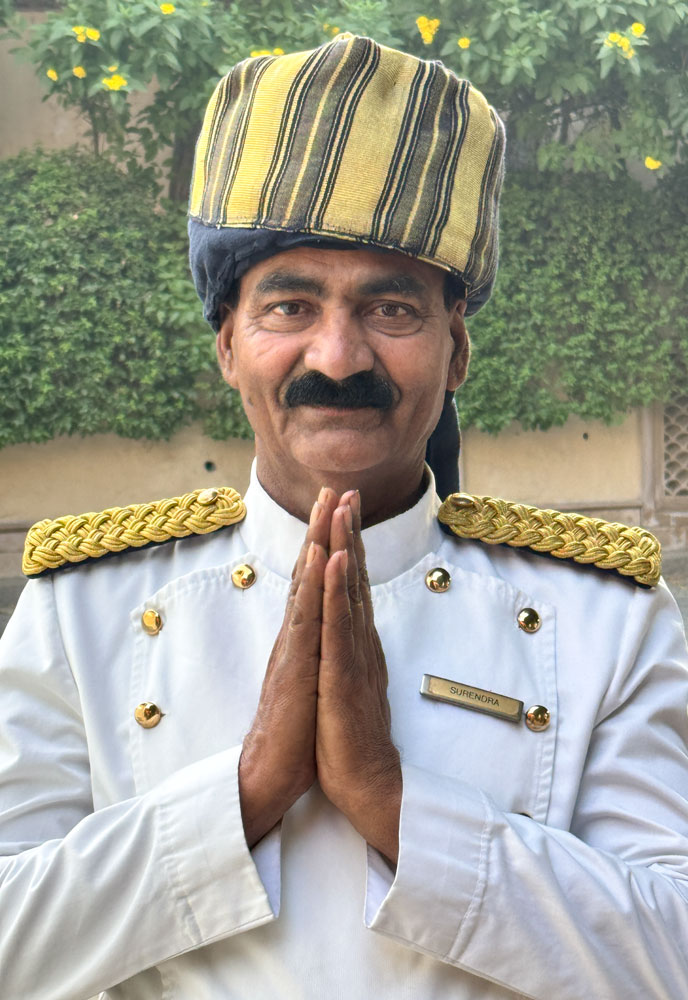
The trip was generally unremarkable. One interesting thing was the number of "chimneys" along the road. They are brick kilns. Most of the buildings we saw used bricks for the walls, even if the structural parts of the building were reinforced concrete.
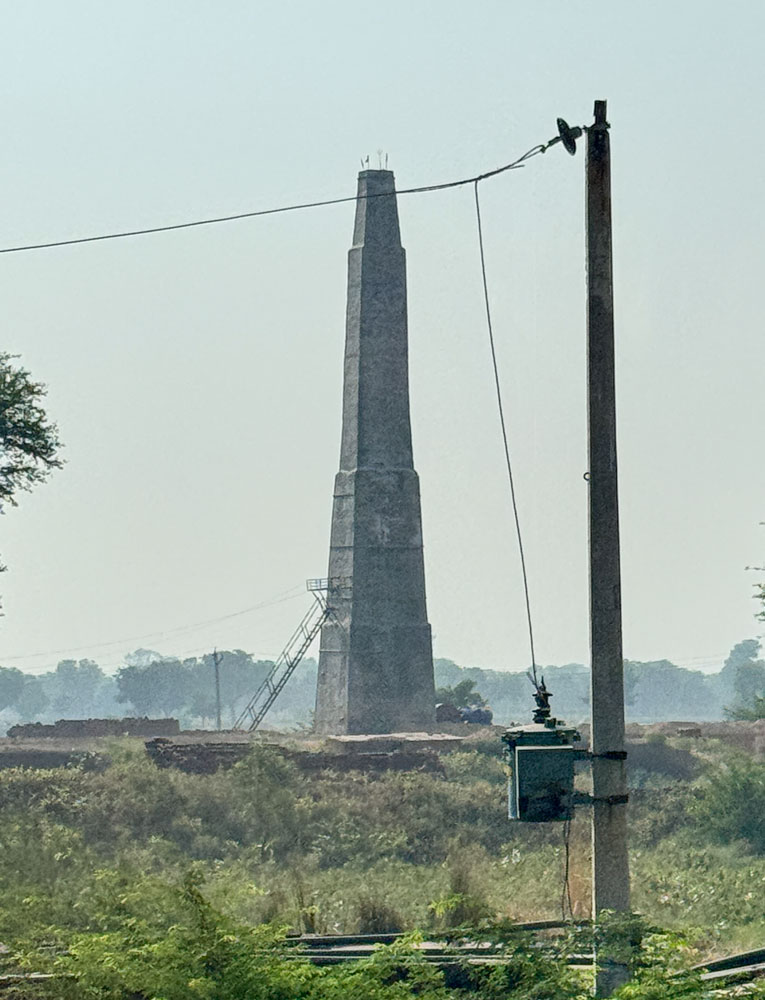
The kilns are a major contributor to pollution in the area. They are small businesses and use whatever they can for fuel, and there are no emission controls on the stack. Of course, the use of brick implies the use of concrete mortar, and the making of concrete uses lots of energy and emits a lot of carbon dioxide.
About half way through the bus journey, we made a restroom stop. This man was an employee at the store.
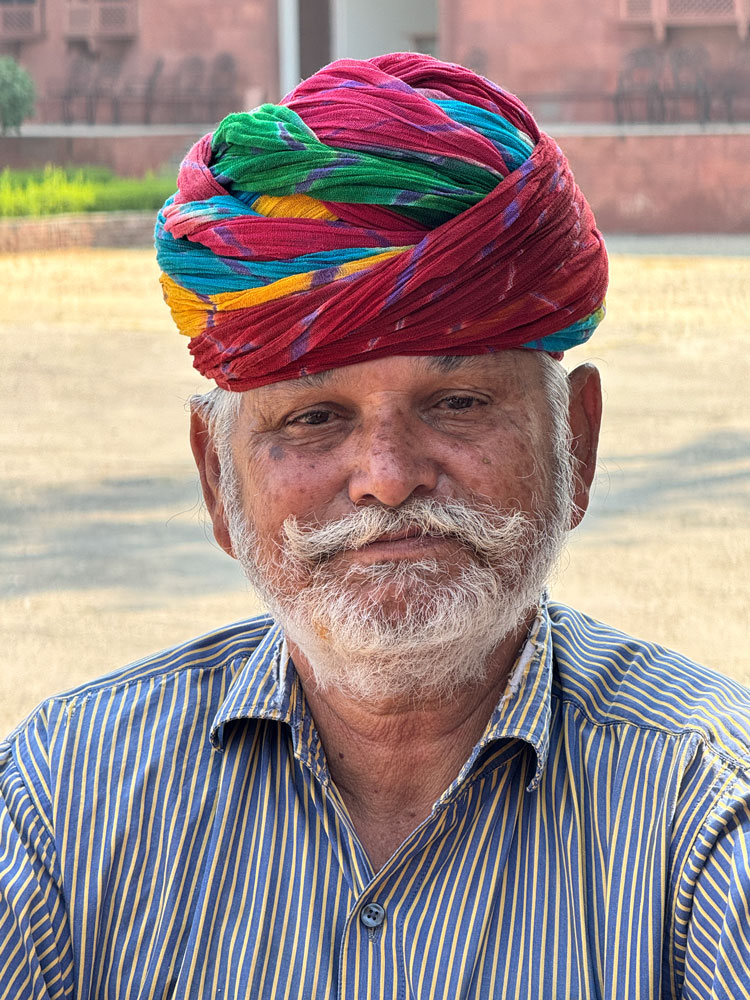
I find the faces of the people fascinating. You'll notice that most of the pictures of people are men. I have to be careful in taking pictures of people, to make sure I don't offend them, and its easier for me to do that with men (and kids) than women. I'll try to get some interesting women's pictures before the end of the trip.
-------------------------------------------
We arrived at the hotel, the Oberoi Rajvilas. Here's Judy getting a welcoming lei.
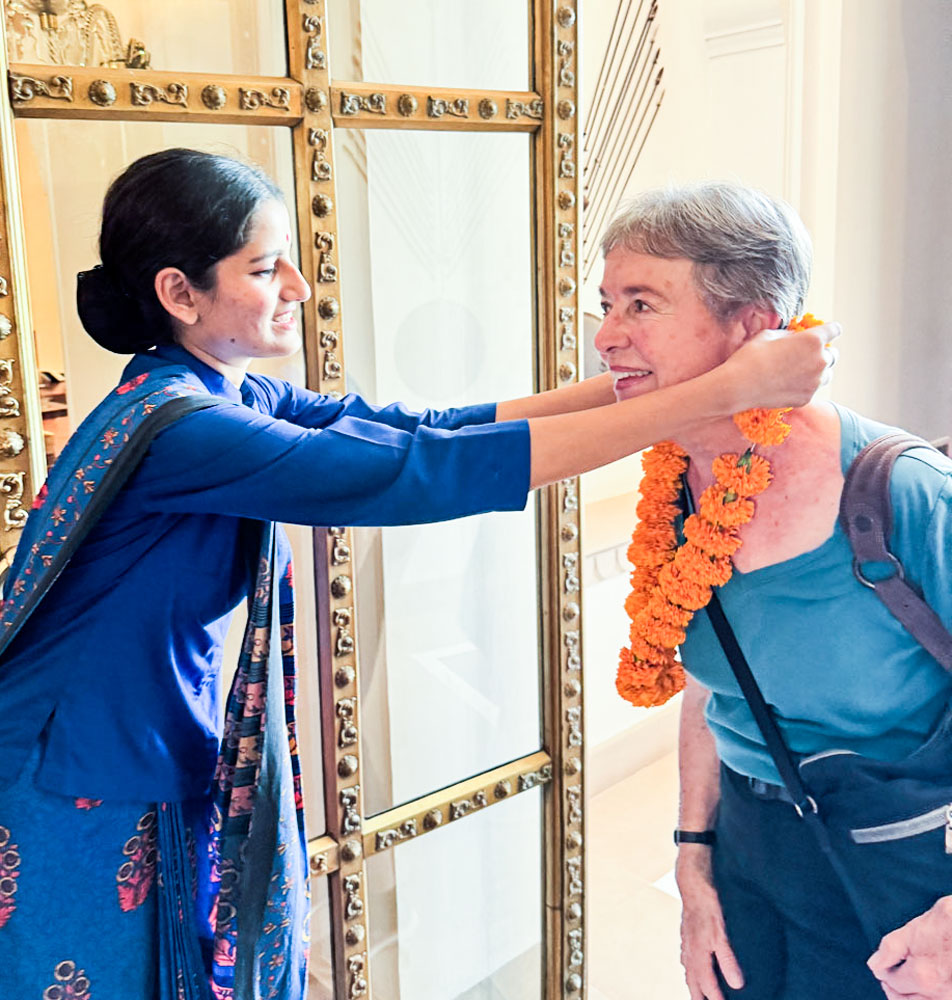
We had lunch at the hotel.
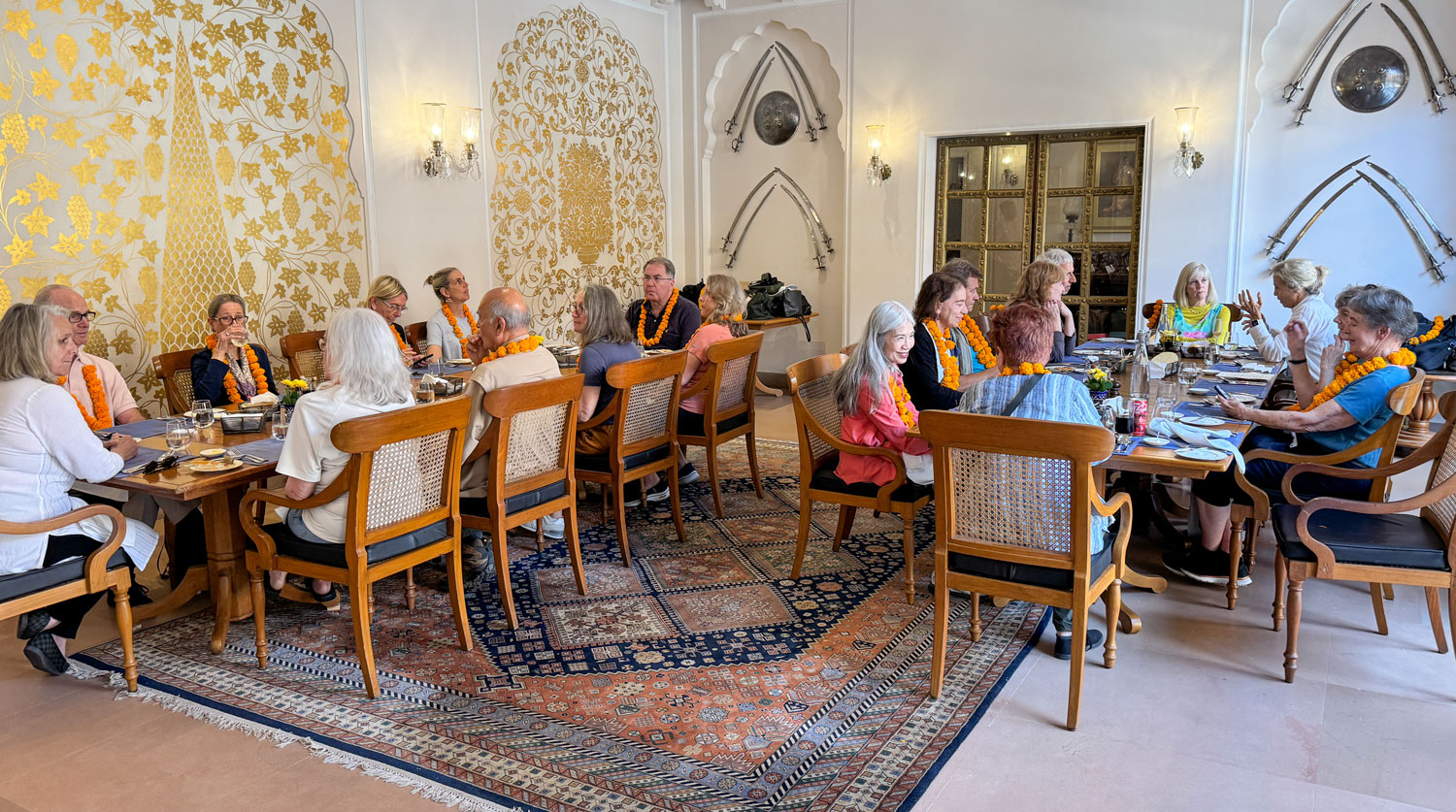
Then we got our keys and headed to our rooms. The hotel is spread out over a large property. Some of the "rooms" are separate buildings, while others are clustered in a group of two rooms or four rooms. We were given a room that is a "tent". It's really not a tent - it has four walls and everything that a regular hotel room would have, but the roof is canvas. I guess it's supposed to be "glamping" (glamorous camping).
A disadvantage was that our room was some distance from the lobby building. I checked the distance using my Apple watch and it was a bit more than 250 meters, one way. They have golf carts and would take you, and pick you up, if you requested.
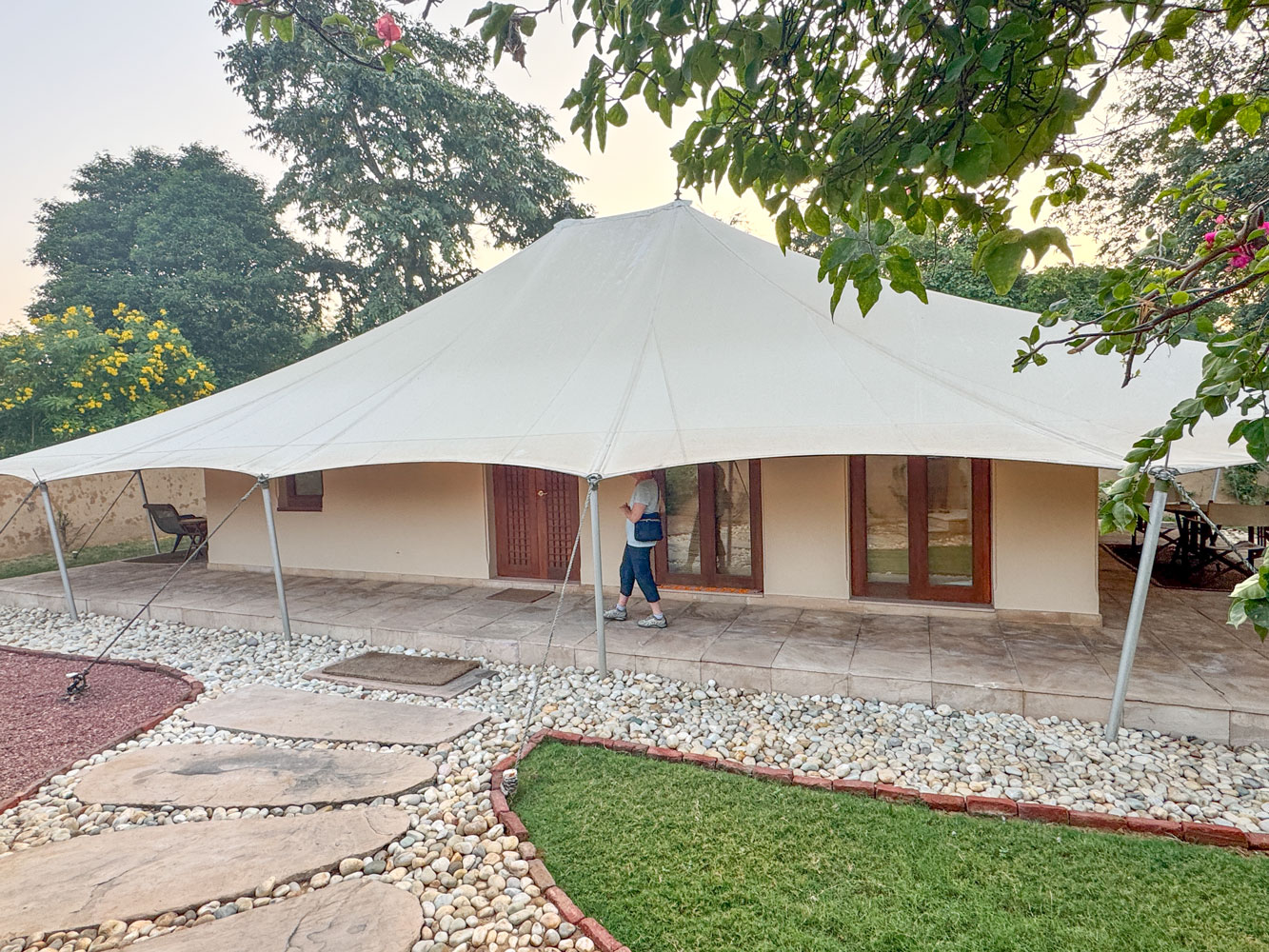
The inside. It's a nice hotel room, and three walls have several double doors which open to a private courtyard, like a cabana. It reminded us of the safari "tents" we enjoyed in South Africa.
The Internet access was not very good but it might have been a communications problem with the staff. I went to the front desk and they claimed that I had the Premium Internet access, but I'm fairly sure (now) that I didn't.
When we got to the Oberoi Udaivilas, in Udaipur, I went to the front desk again about the slow Internet access and they discovered I only had the standard access. They fixed it so I had the Premium Internet access, but that still only gave me about 10Mbps down.

But there was to be no rest for the weary Tauck traveler. We gathered in the lobby at 3pm. We boarded our comfortable Tauck bus and went to the Jantar Mantar (Royal Observatory). I believe it was built about 1730 under the sponsorship of Rajah Jai Singh II. It was designed to be used with the naked eye. Apparently, the telescope was not yet in use in India (the telescope was invented in 1608 in the Netherlands).
We began with a large sundial.
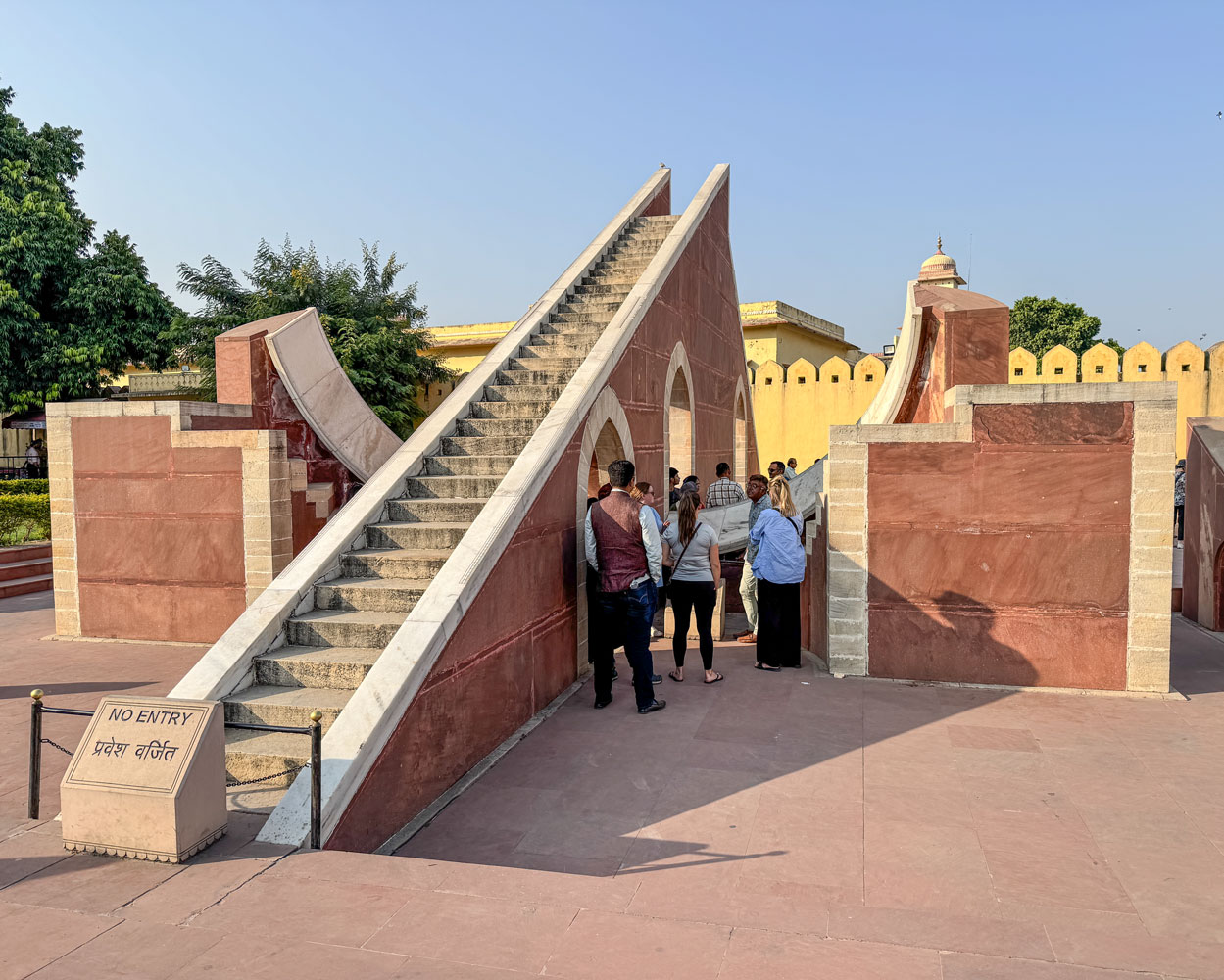
An extremely large sundial. Note the shadow on the right side. It was around 4pm.
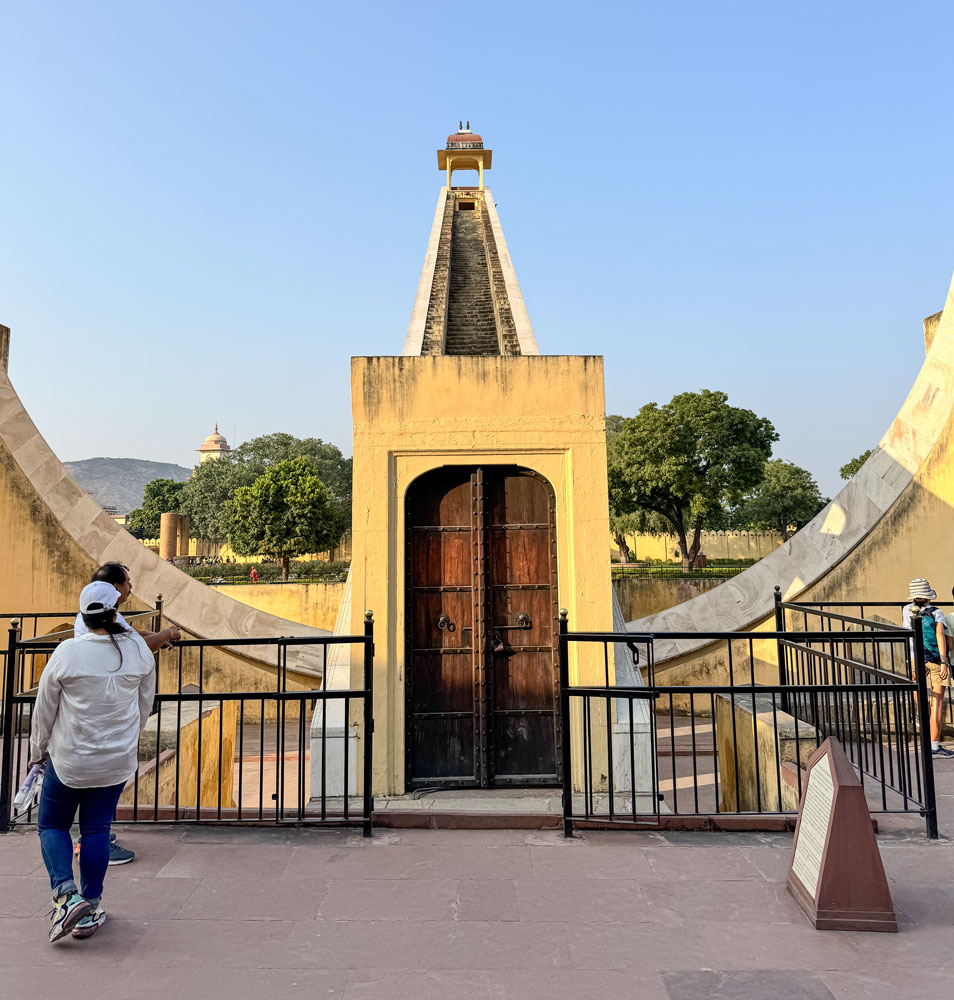
Given the diffusion of technology, I assume this observatory was rendered obsolete later in the 18th Century with the arrival of telescopes and pendulum clocks.
Next, we went to the City Palace Complex. I couldn't hear the tour guide so I don't have much text to offer here. You can read the link to learn more.
The entrance to the Palace.
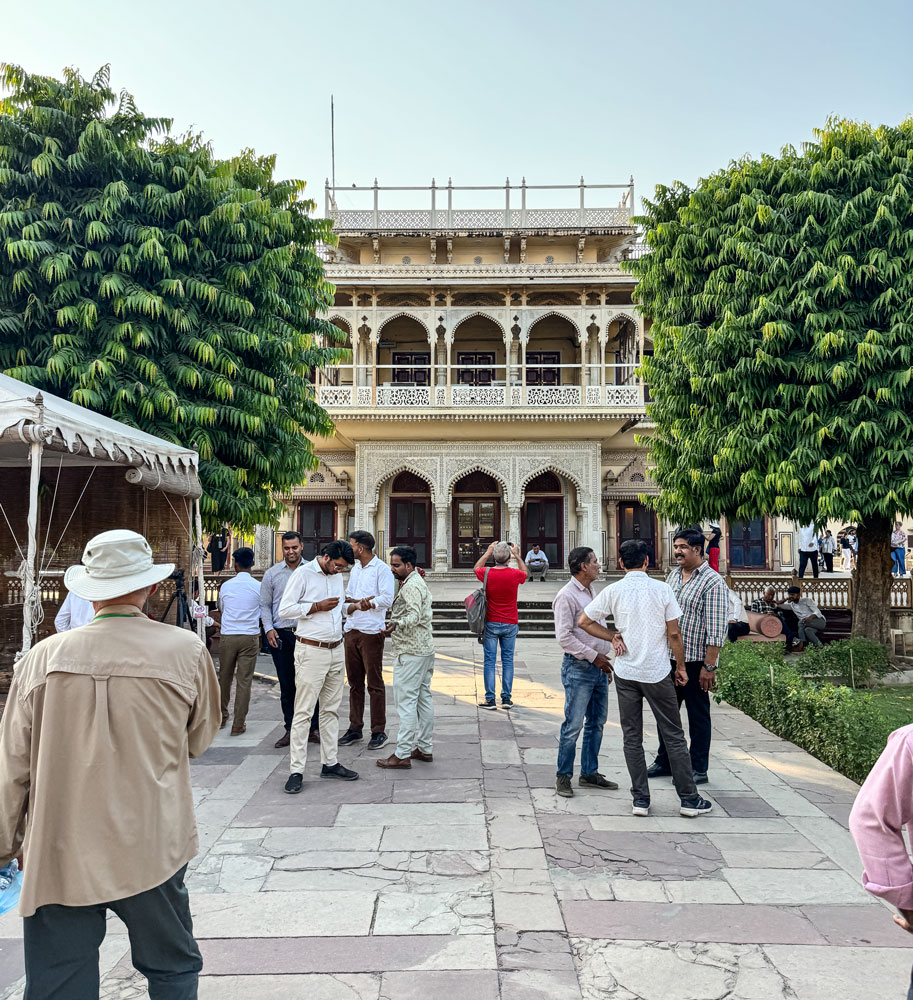
One of the gates. You can tell by the length of the shadows that it's getting late in the day.
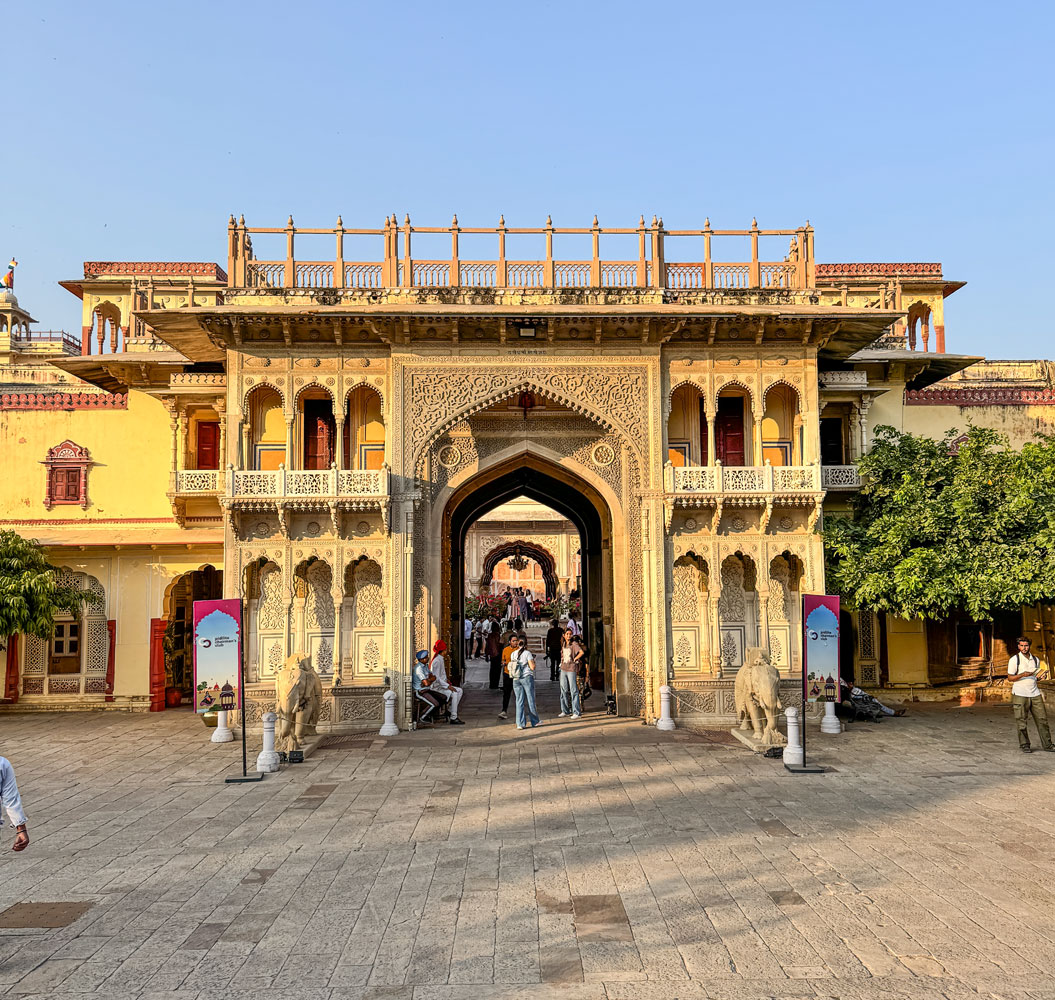
This is the Diwan-i-Khas, the Hall of Private Audiences, and houses the largest solid silver object in the world (that is, not plated). It was created as a water vessel. A duplicate was also made, but is currently on loan to the UK.
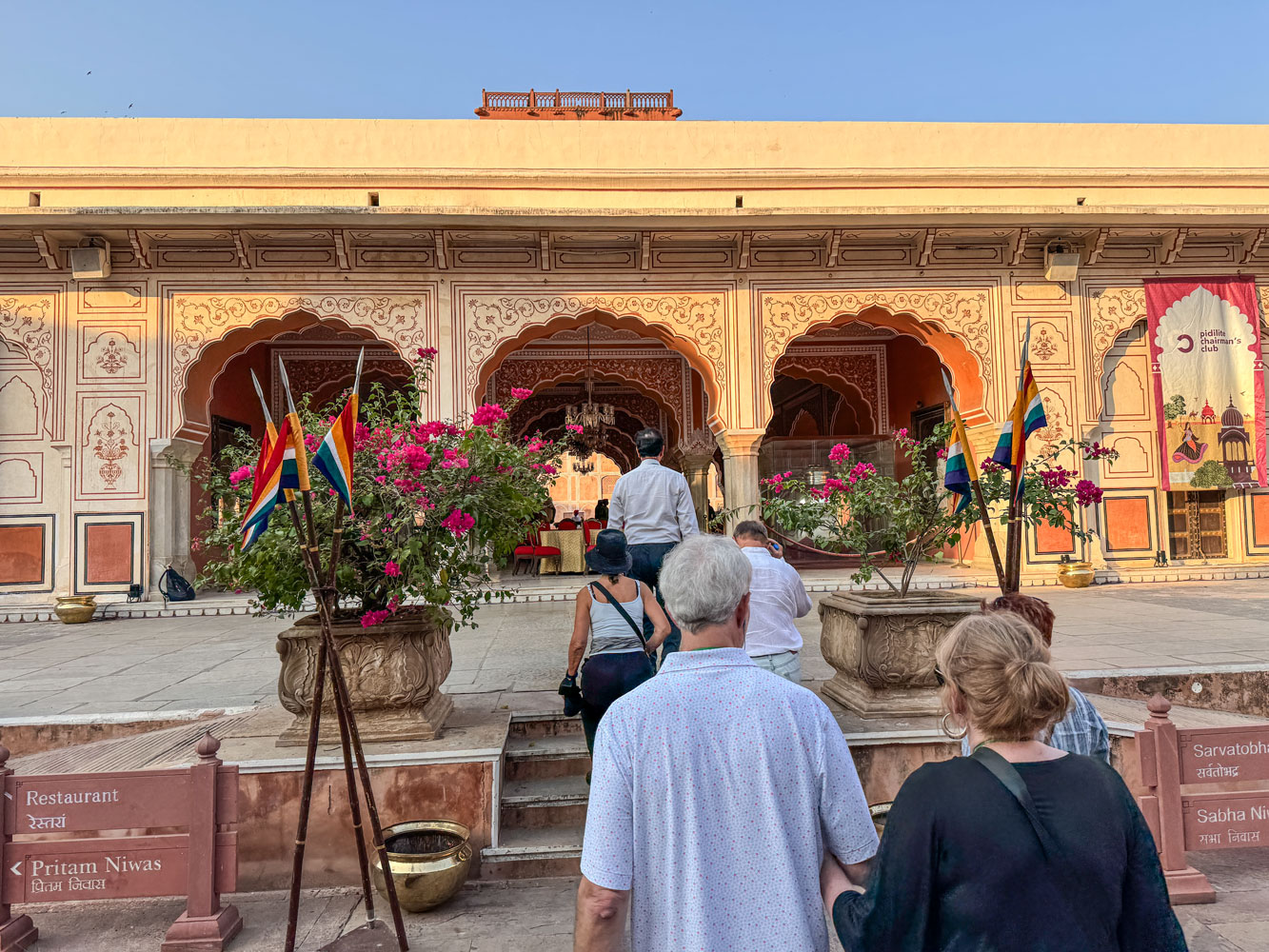
A poor picture of it. Its really too shiny to photograph well under normal conditions.
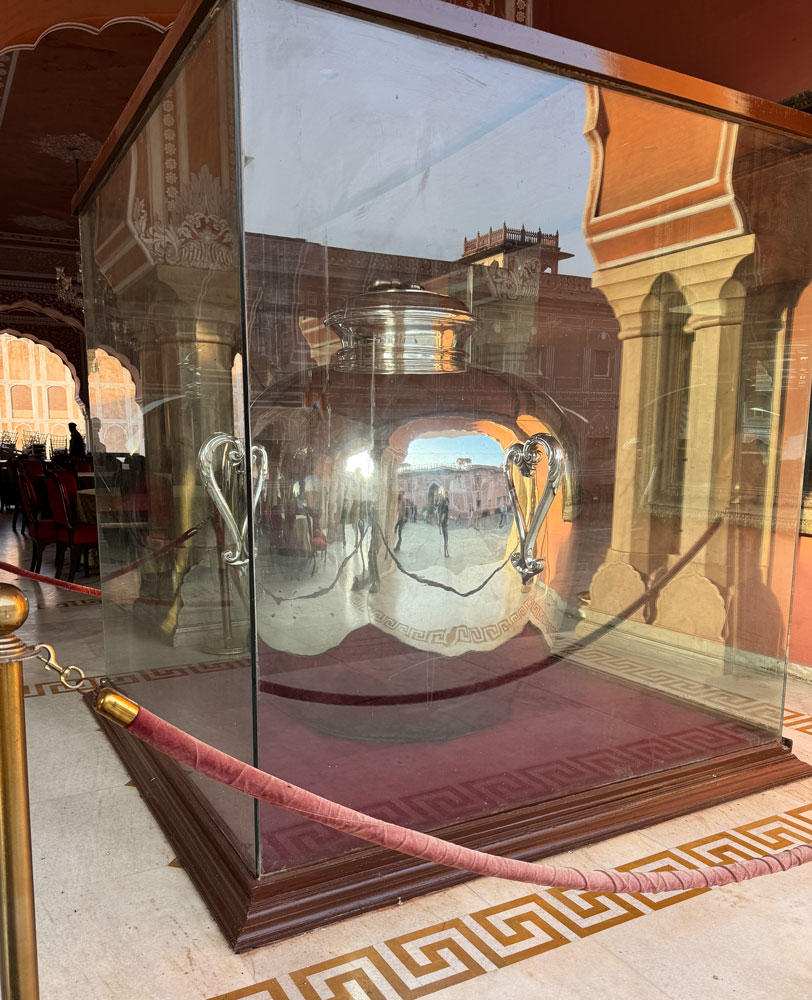
I couldn't find the name of this building and courtyard.
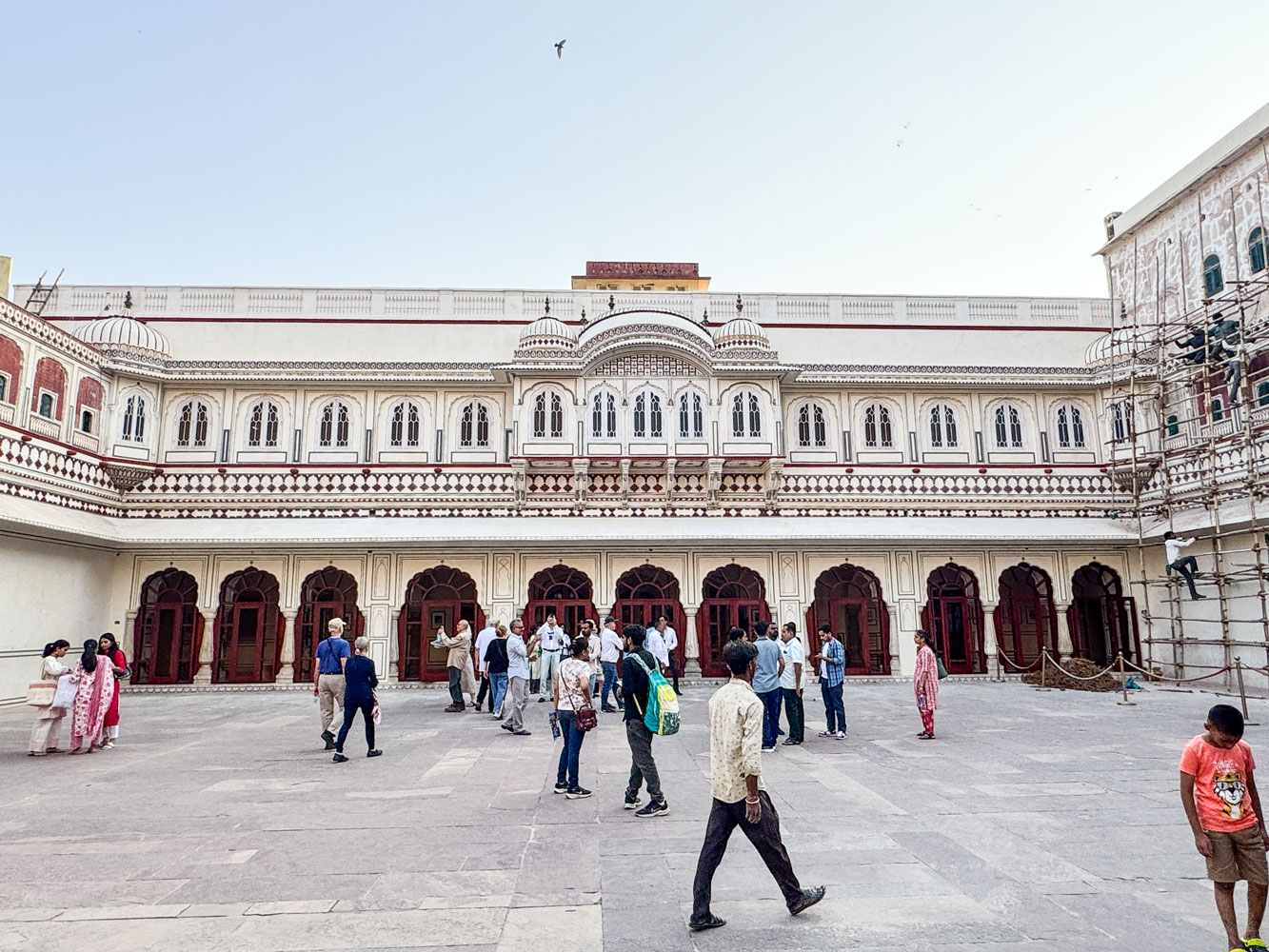
Note the scaffolding on the right side of the above picture. Those are bamboo poles tied together with rope. This isn't the only place I saw this kind of scaffolding.
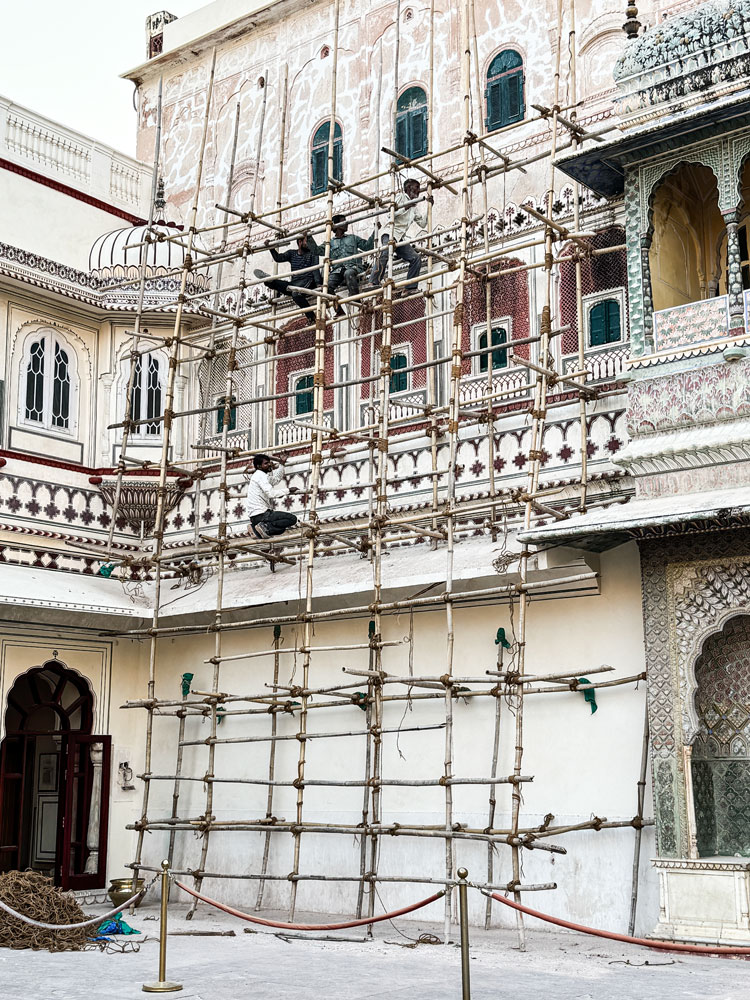
An entry door of this building.
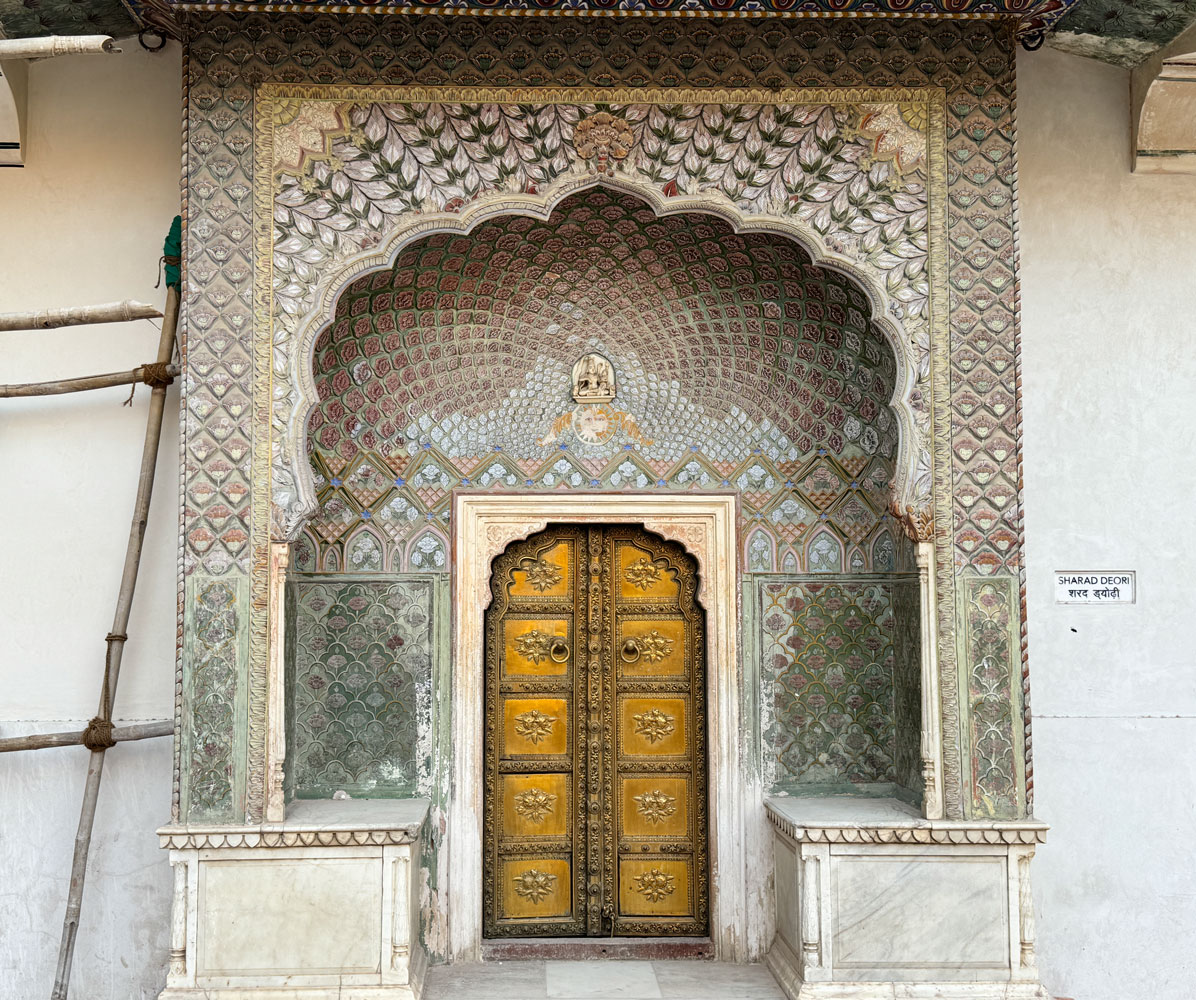
Leaving the main part of the Palace we went to the handicrafts museum
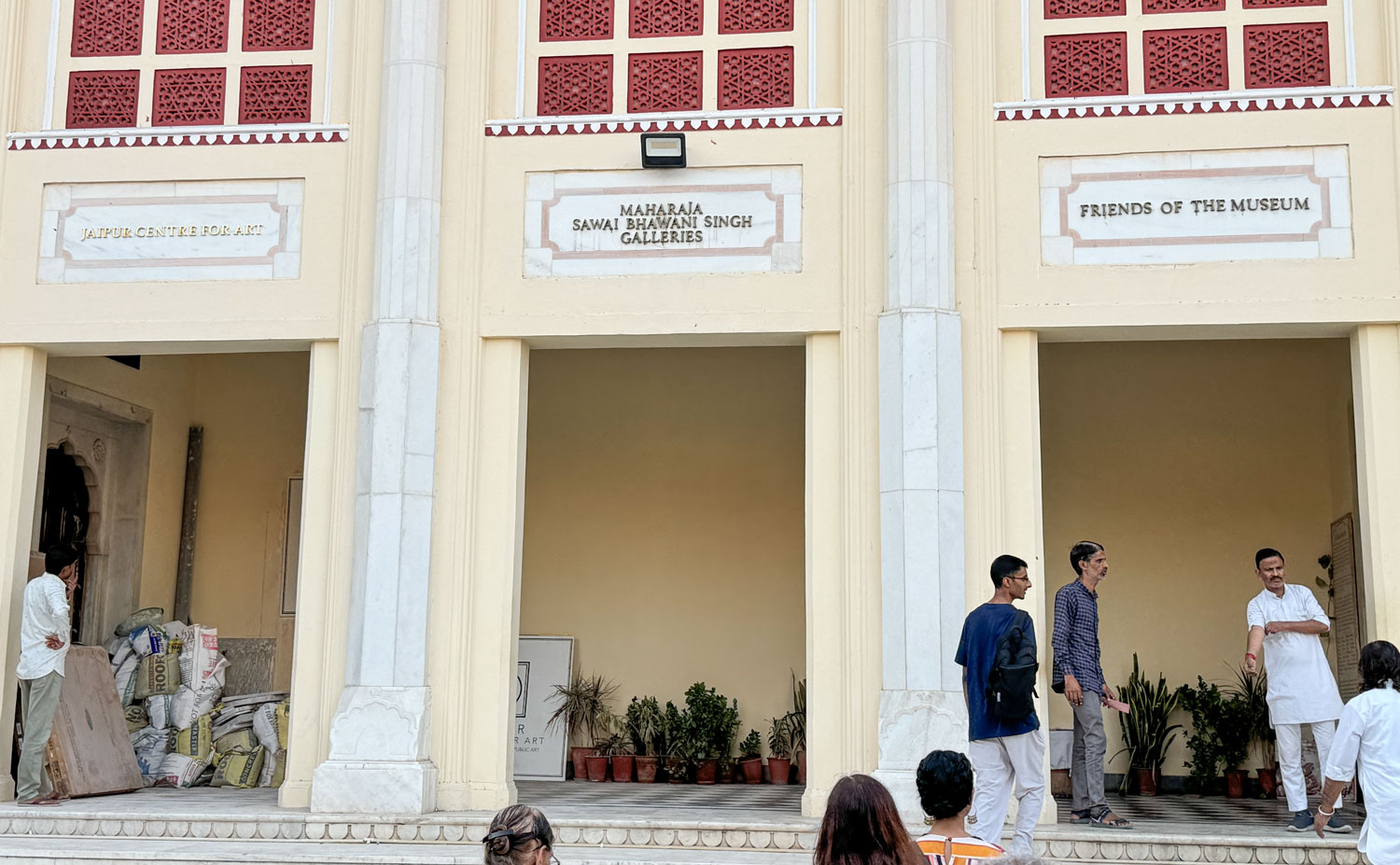
Judy talked with one of the artists, and while talking, he drew a small line drawing of an elephant, which he signed and gave her as a gift. He used a pen that had the point of a single squirrel hair. His speciality was miniature drawings. The elephant symbolizes one of the Hindu gods, Lord Ganesha.
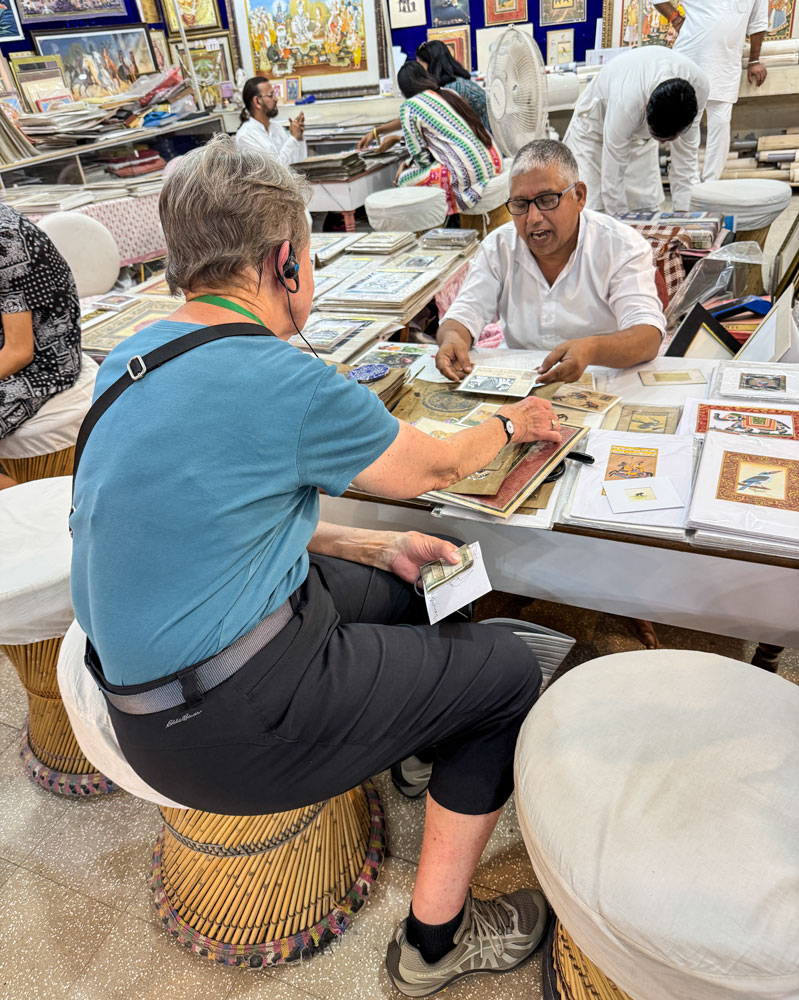
Then we left the Palace and climbed aboard some Auto Rickshaws for a ride through the crazy Jaipur traffic. We shared a rickshaw with Steve and Martha.
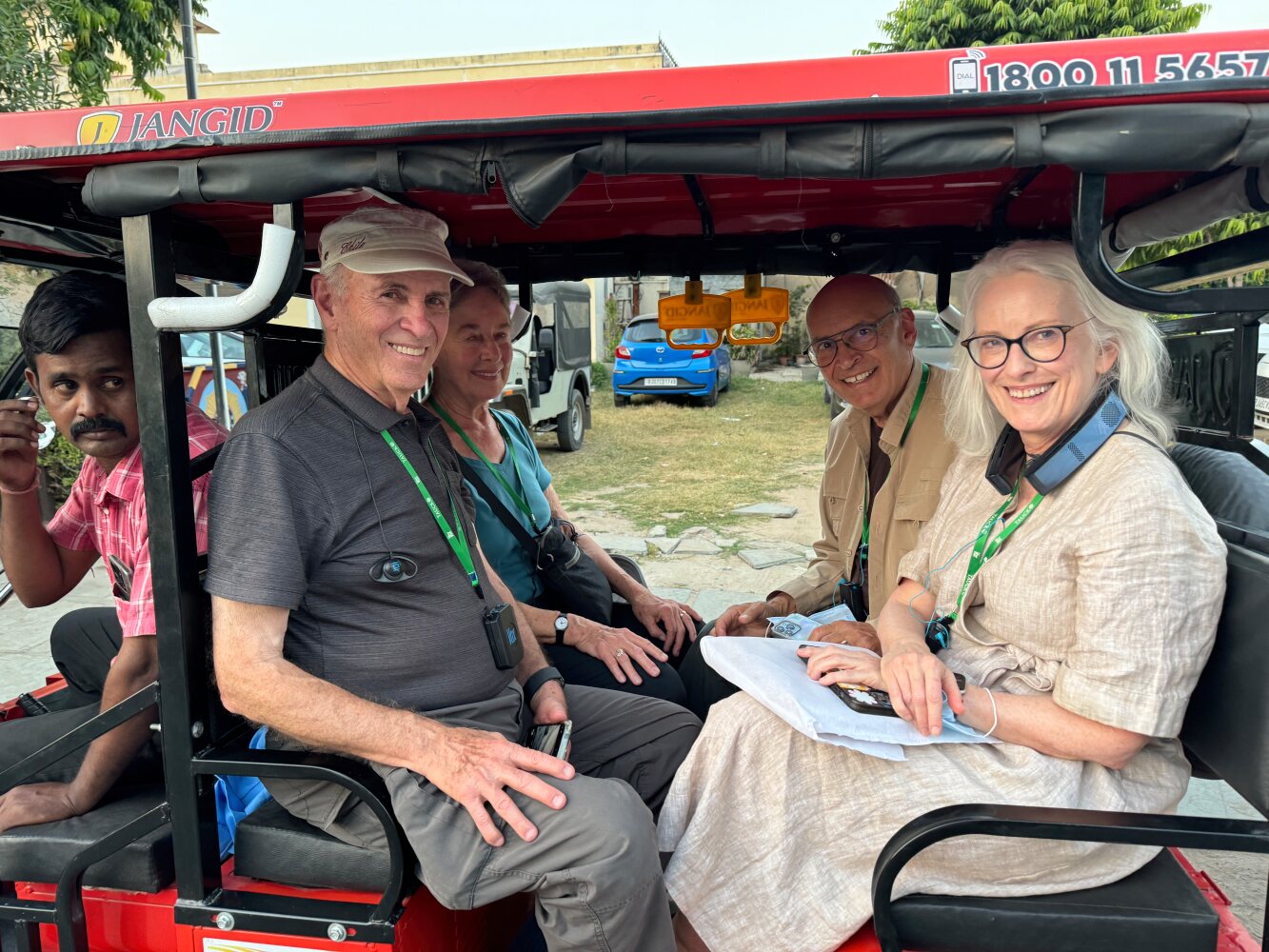
Eventually, the rickshaws stopped where the Tauck bus was waiting for us, and we boarded for the ride to the Rambagh Palace. This palace was the residence of the Maharaja of Jaipur, but has been converted into a luxury hotel.
When we arrived, the hotel staff had prepared an elaborate welcome for us. First was a man in a horse costume whirling and dancing, backed by a band of four musicians.
[Update: The man with the horse costume is performing the Kachchhi Ghodi dance. In India the horse symbolizes power, nobility, loyalty, respect and fertility.]
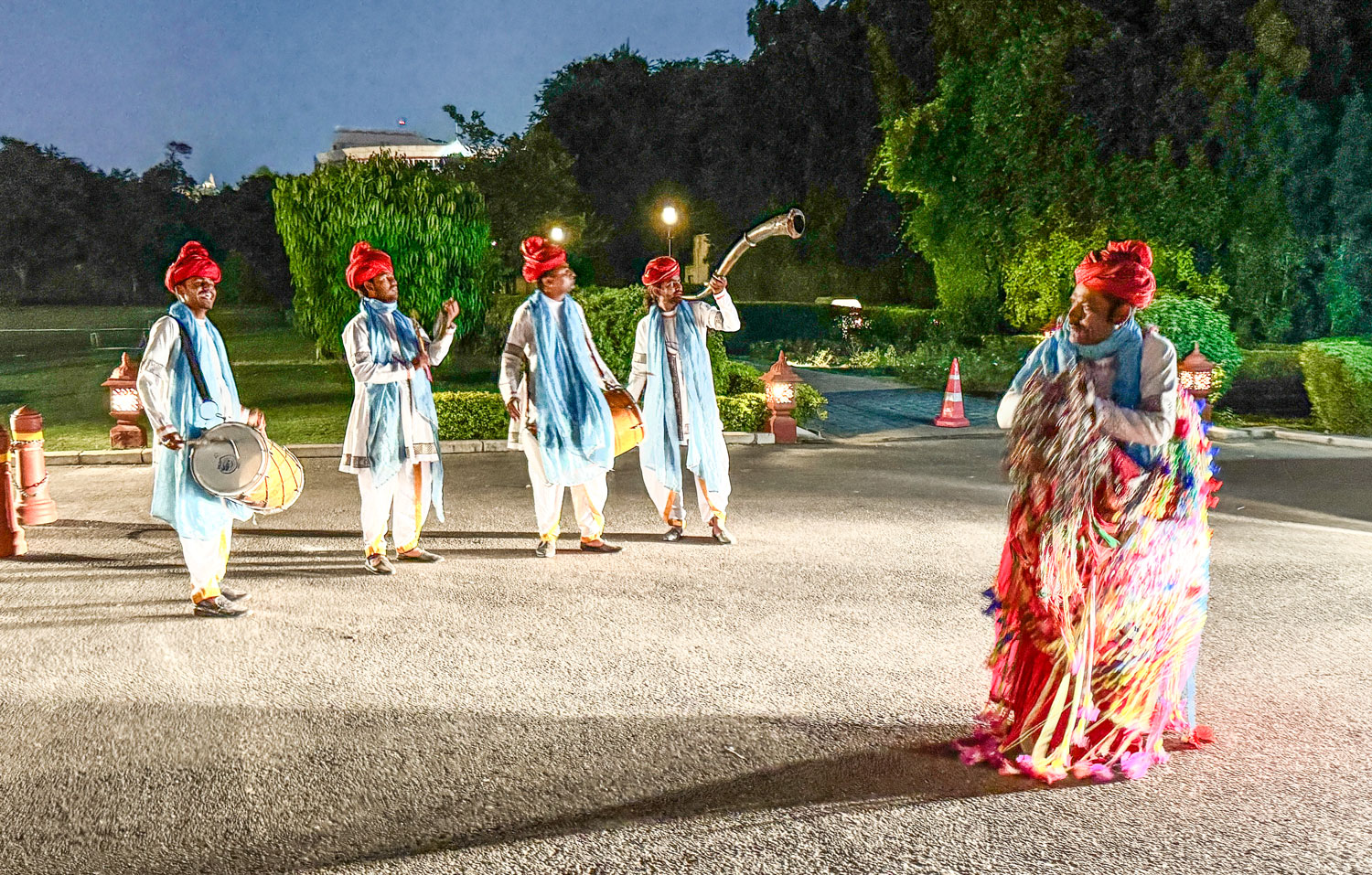
A better view of the dancer.
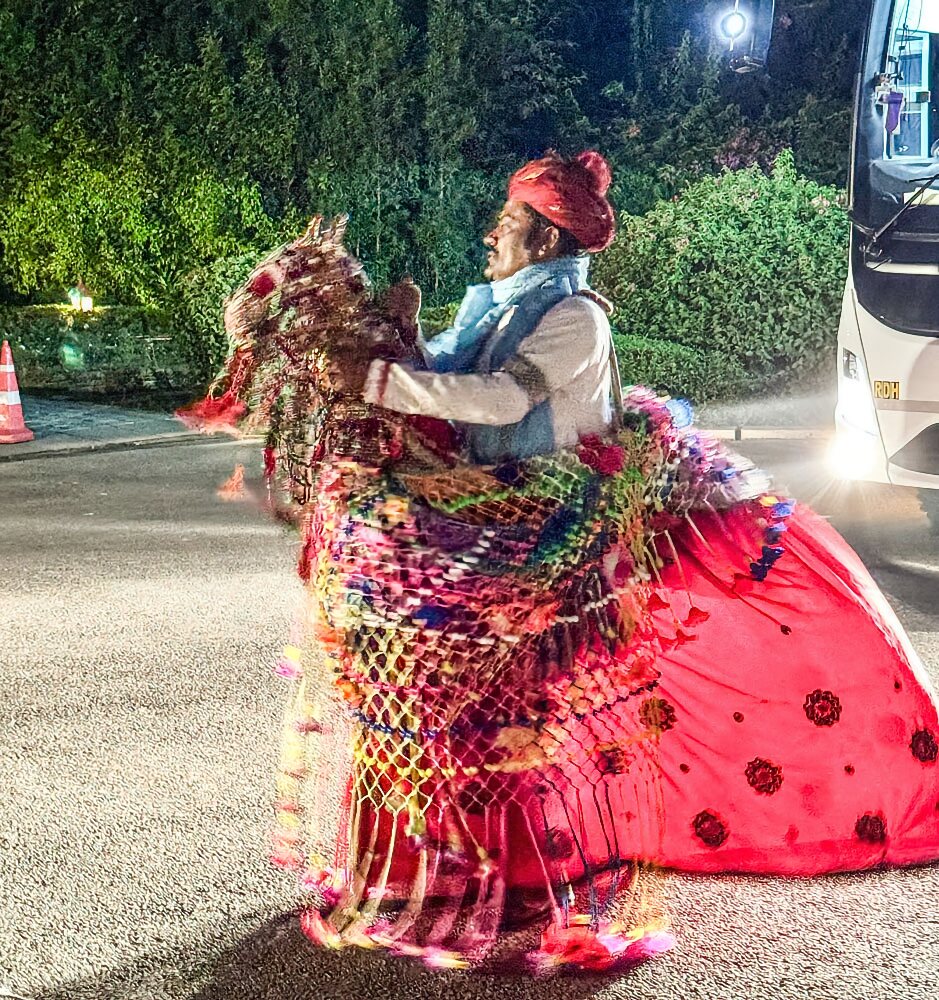
And the band.
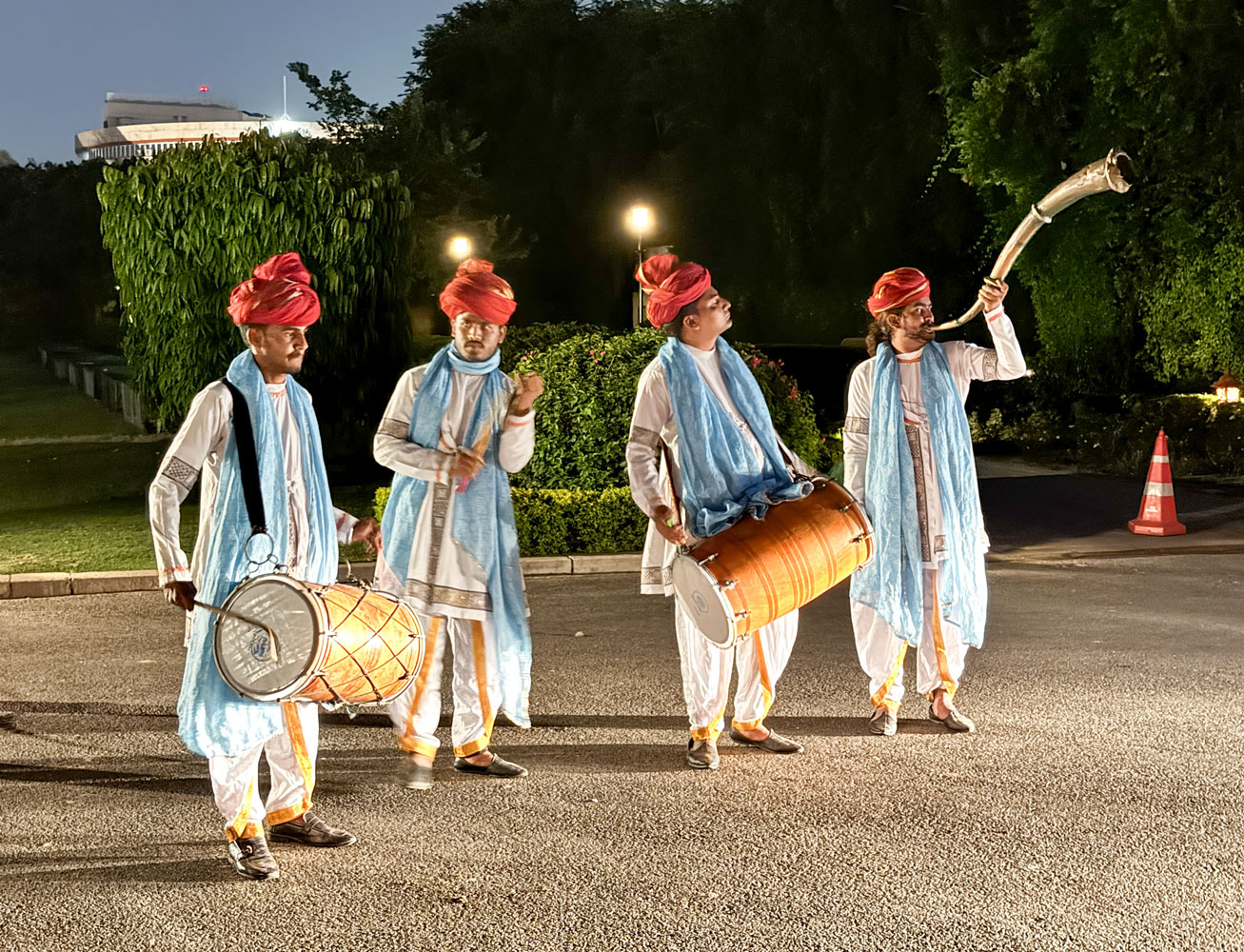
The dancer and band began moving down the road where there was a parade of people and animals - four horses, four camels and two elephants. What a welcome!
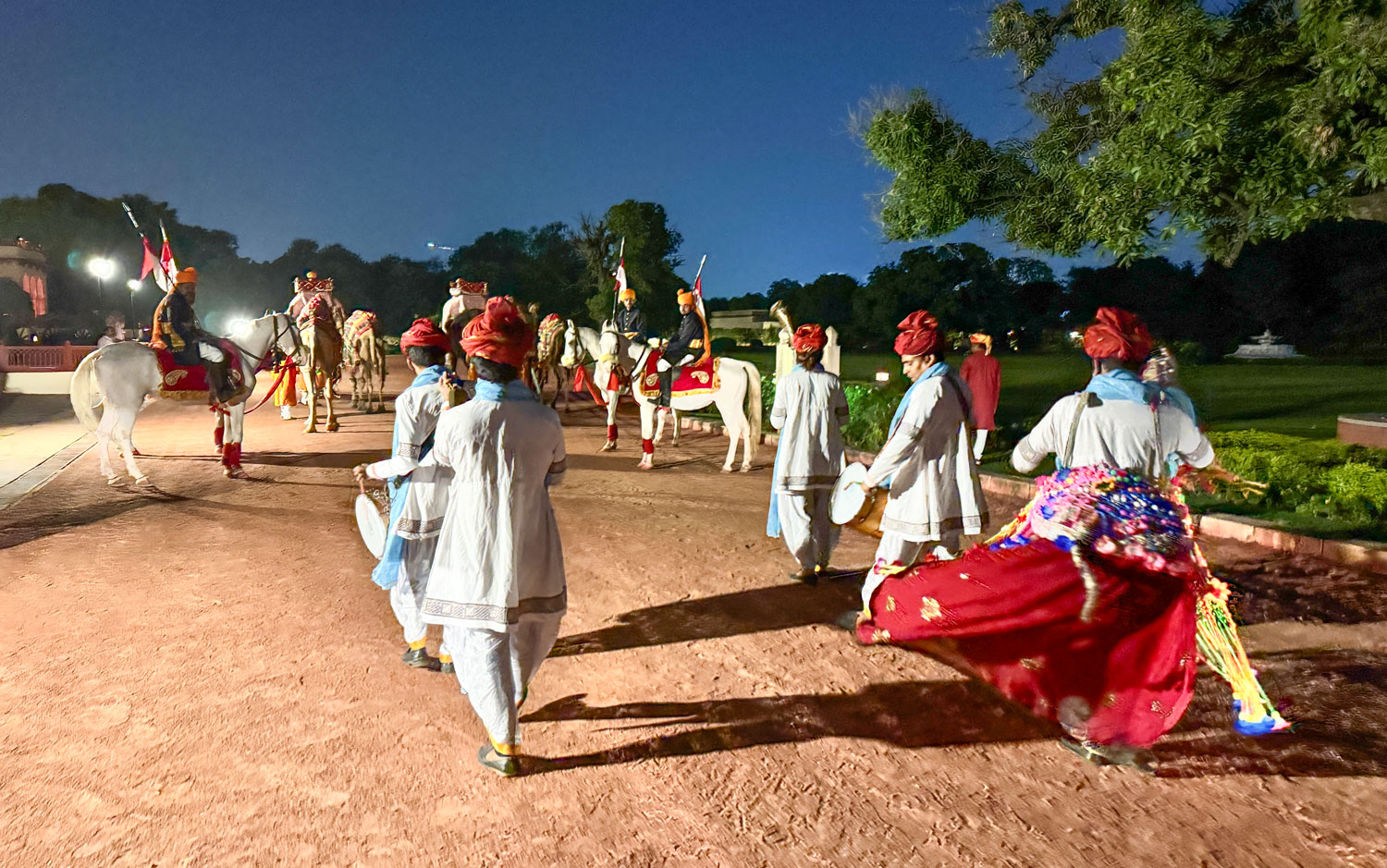
The dancer and band marched past the horses and followed the other animals in a parade.
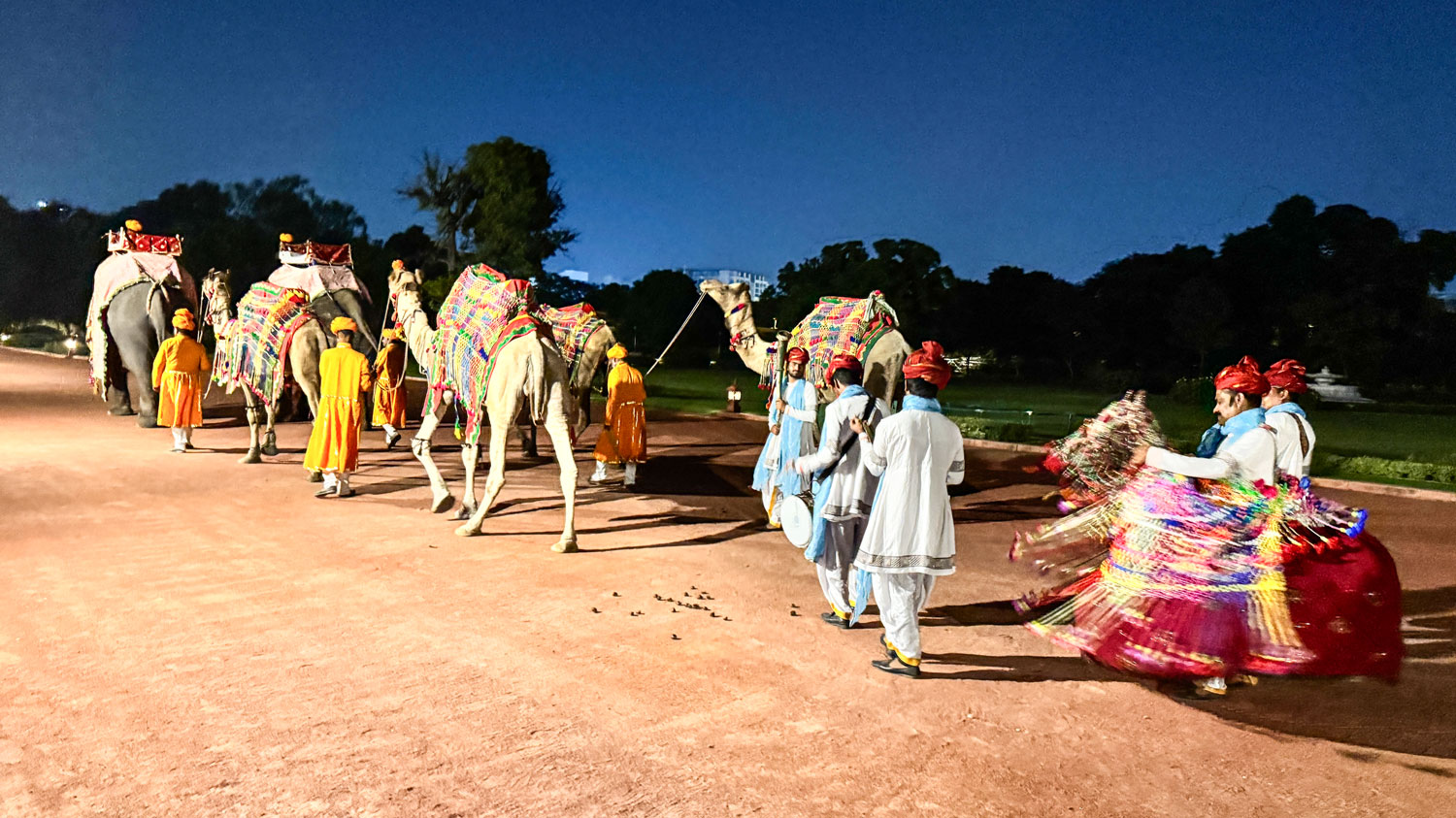
The horsemen brought up the rear.
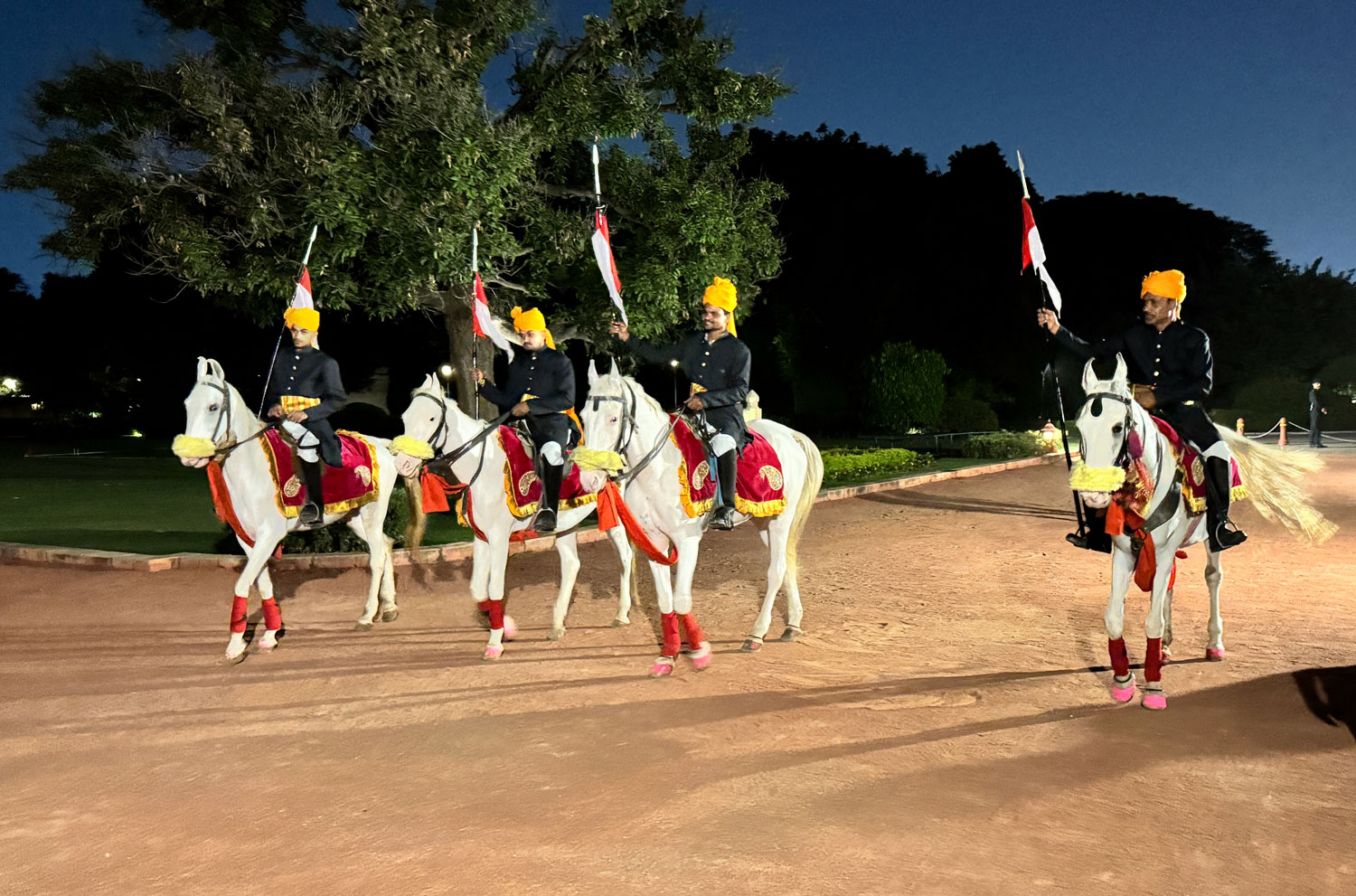
I ran ahead to get a picture of the elephants.
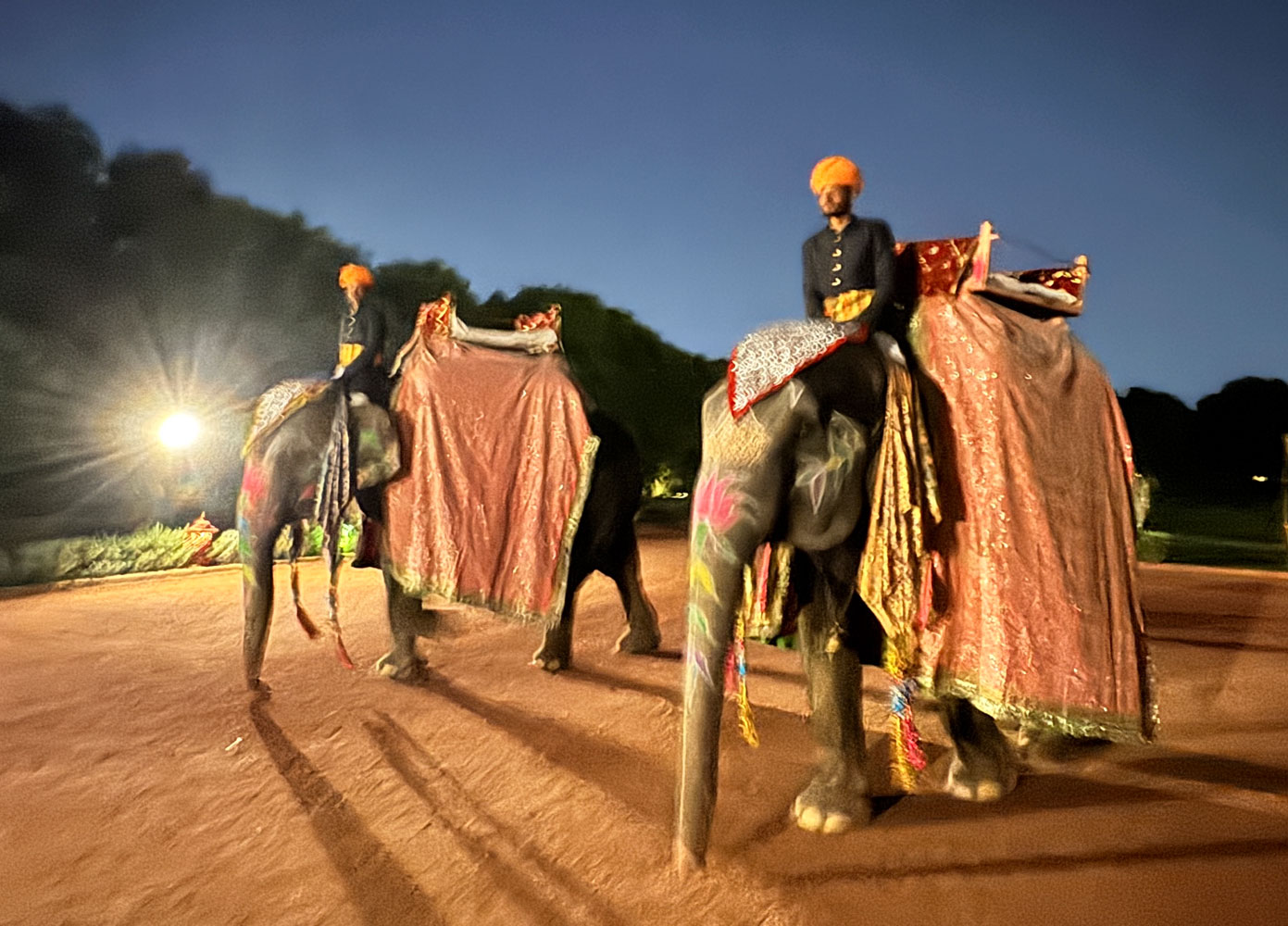
A better picture of one of the elephants.
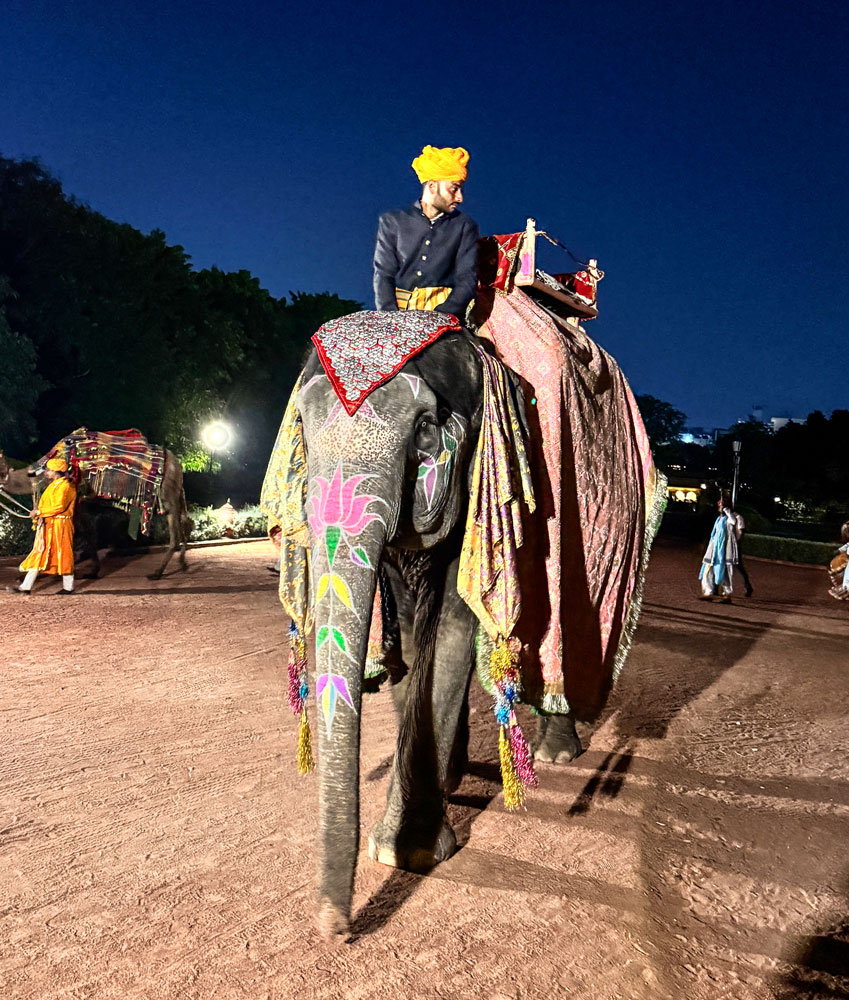
Judy giving a little love to one of the elephants.
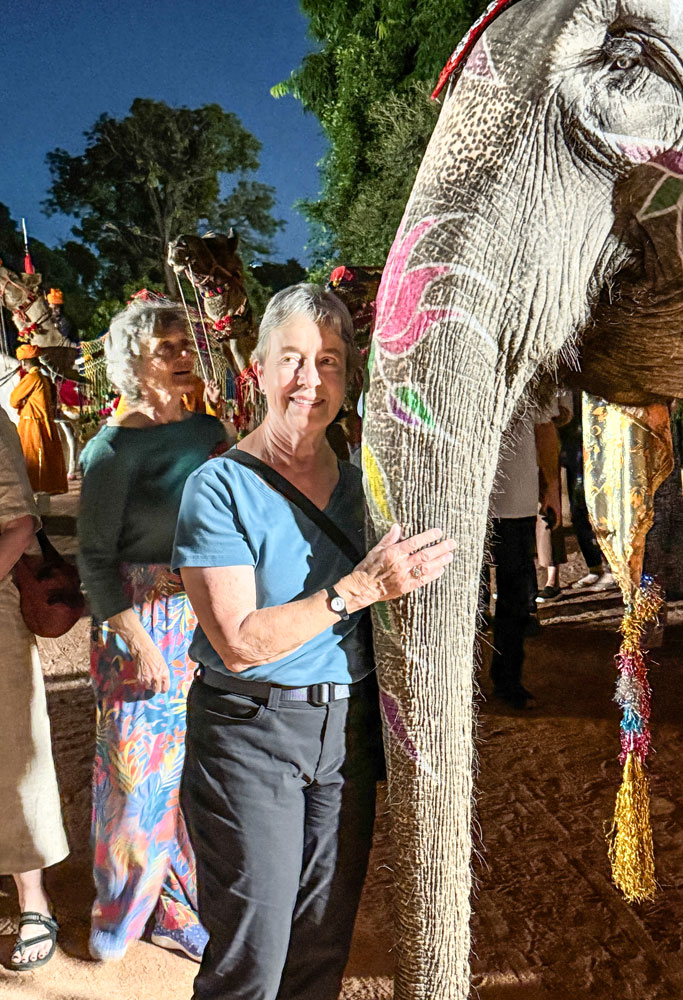
Judy receiving a bindi.

As we walked to the steps to the patio where dinner is to be held, there were two musicians playing.
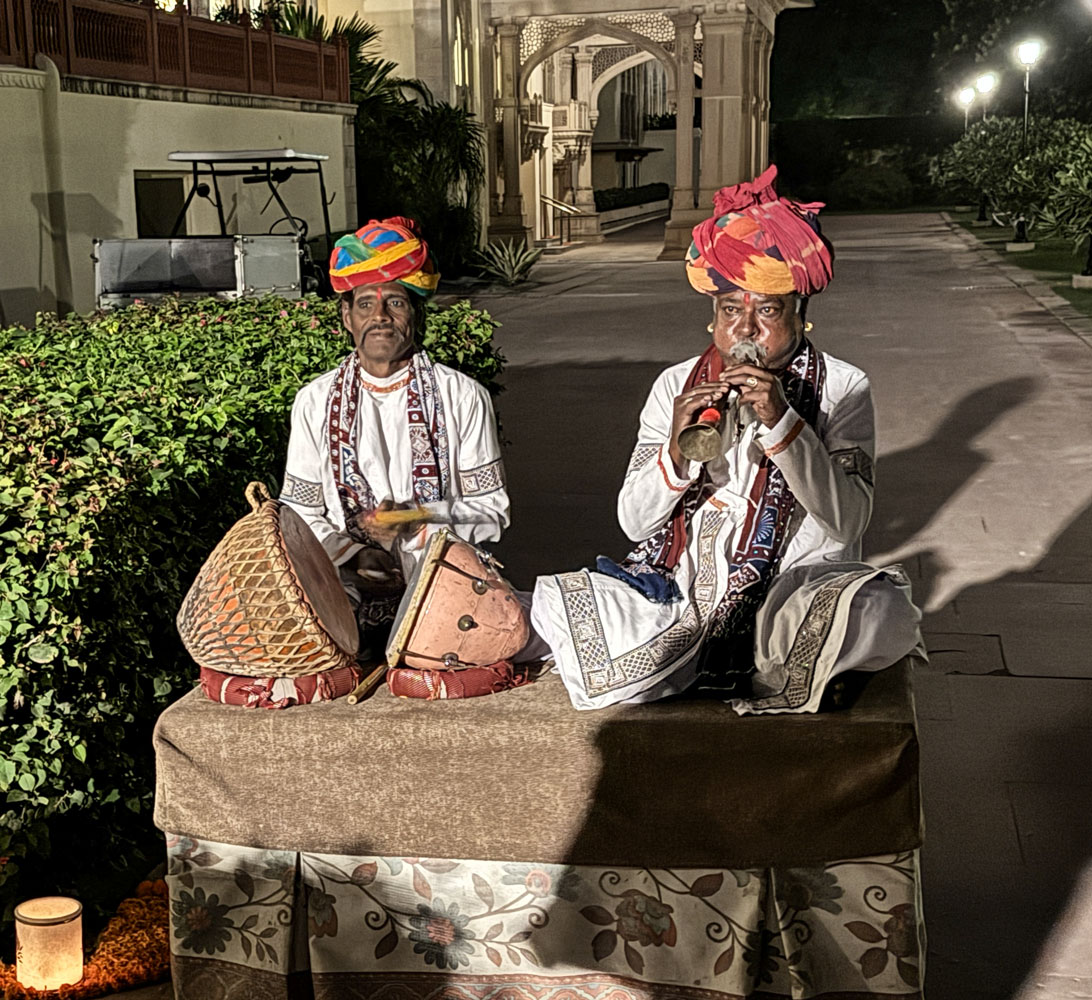
Here's the setup for dinner.
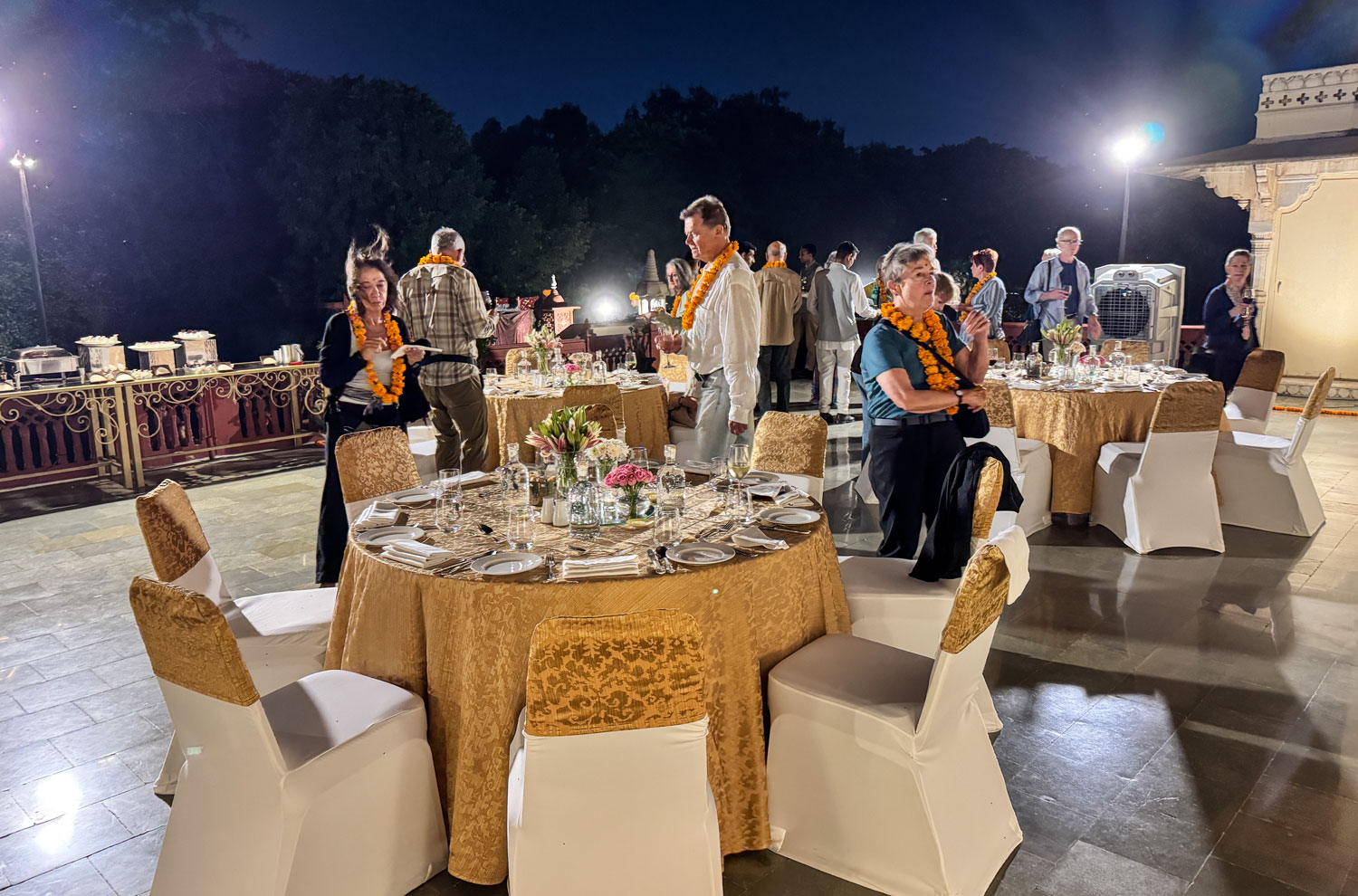
As we were settling in, there were some musicians playing. Before dinner there will be a dance performance by two dancers. You can see the dancers in this picture.
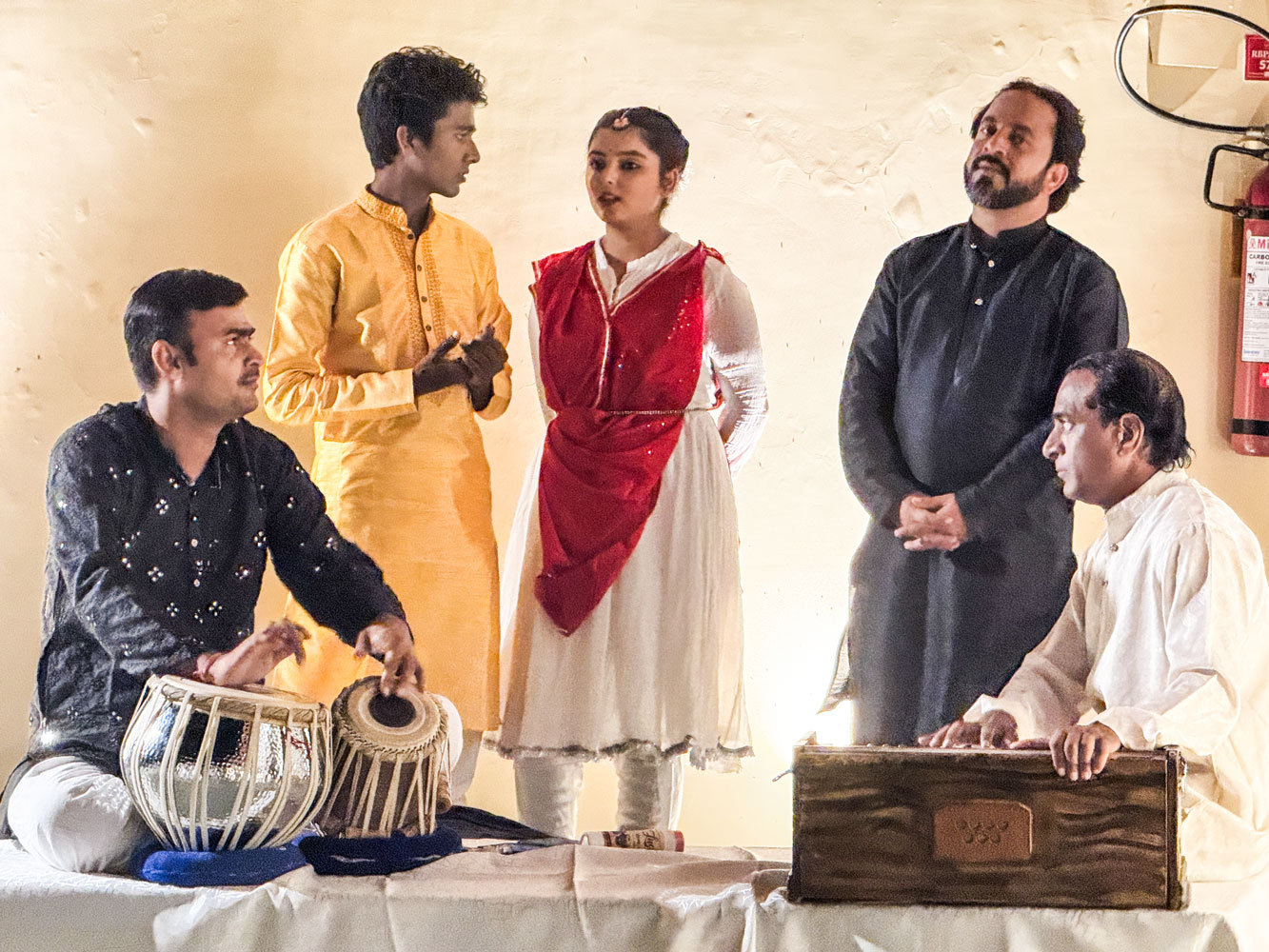
They began their dance.

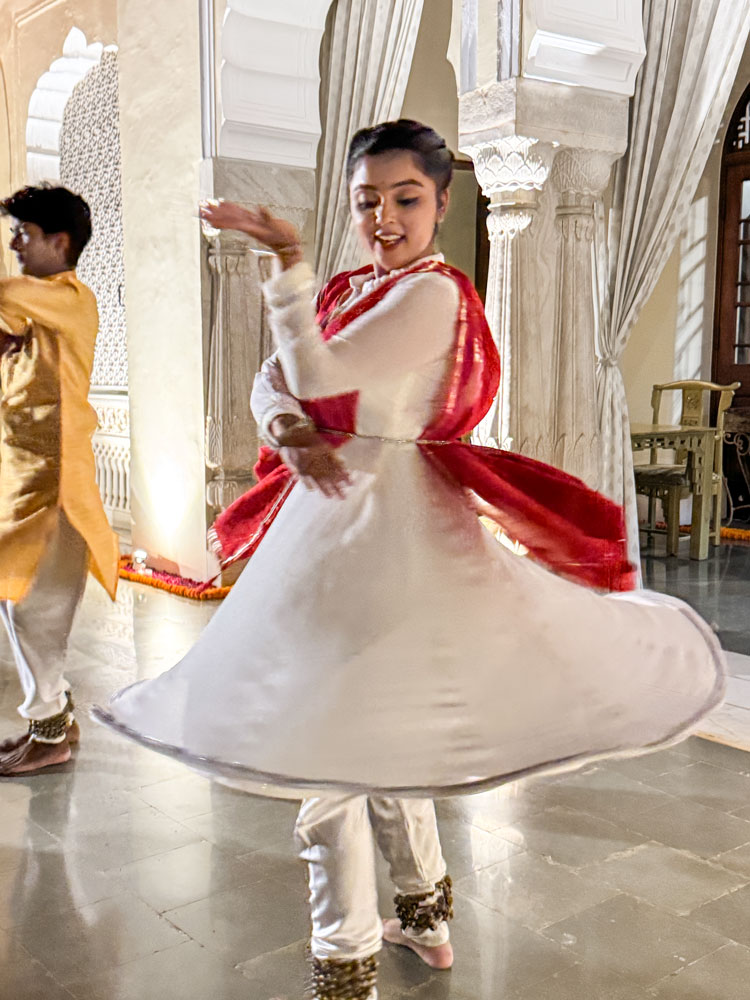
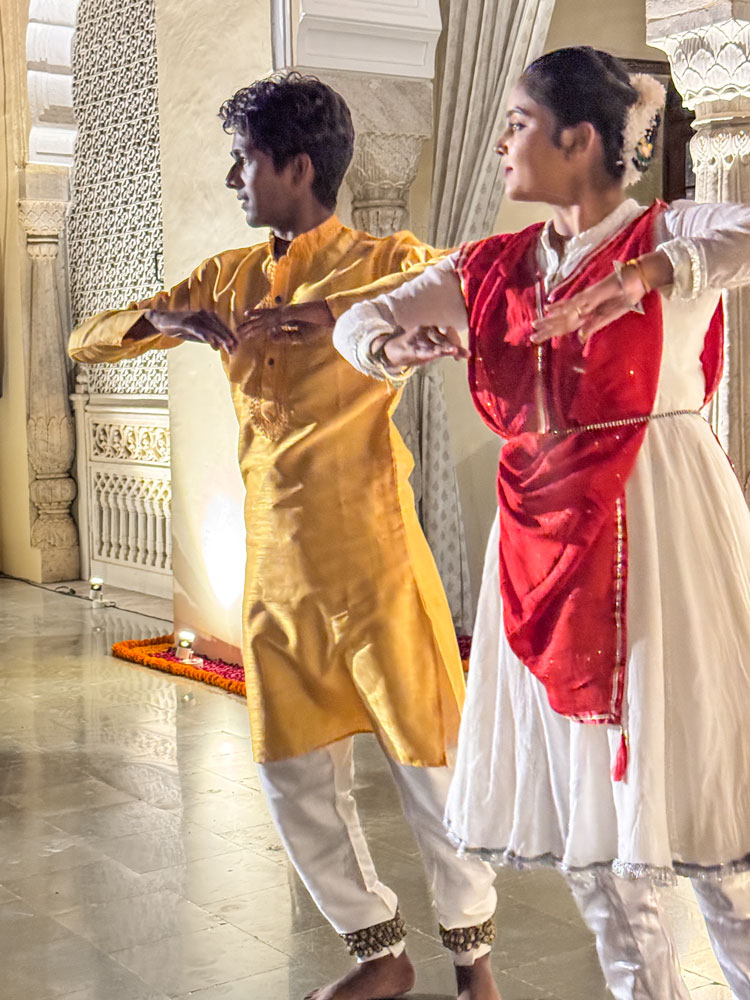
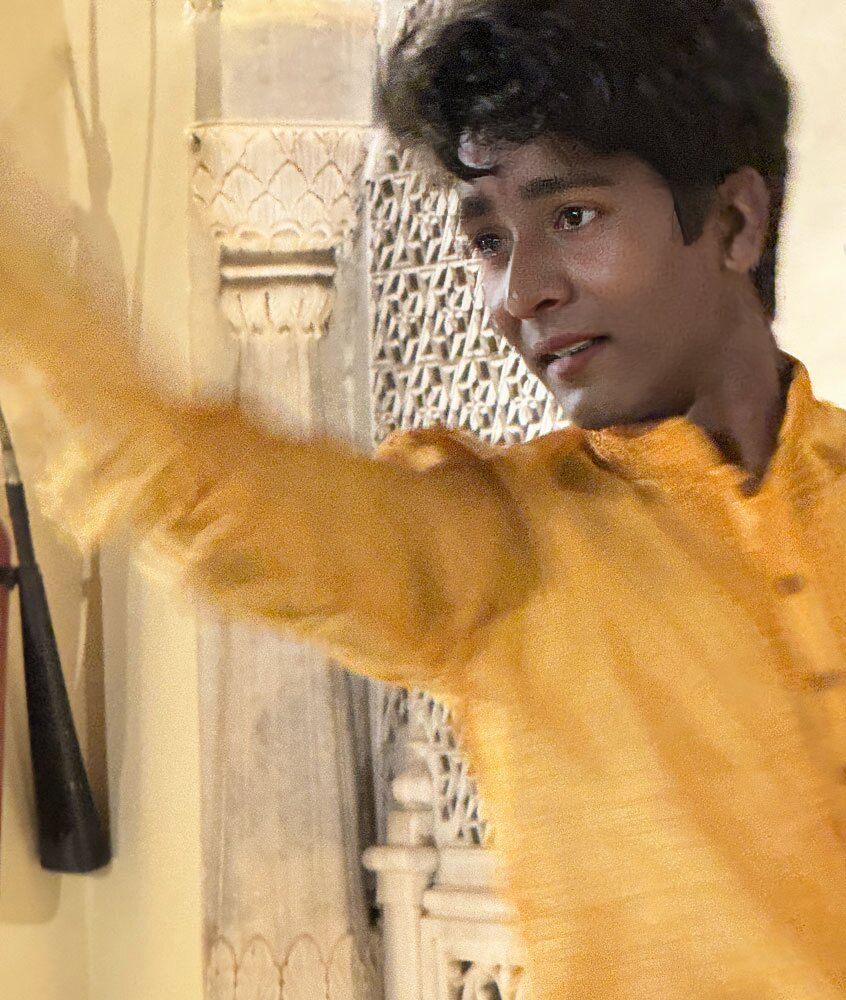
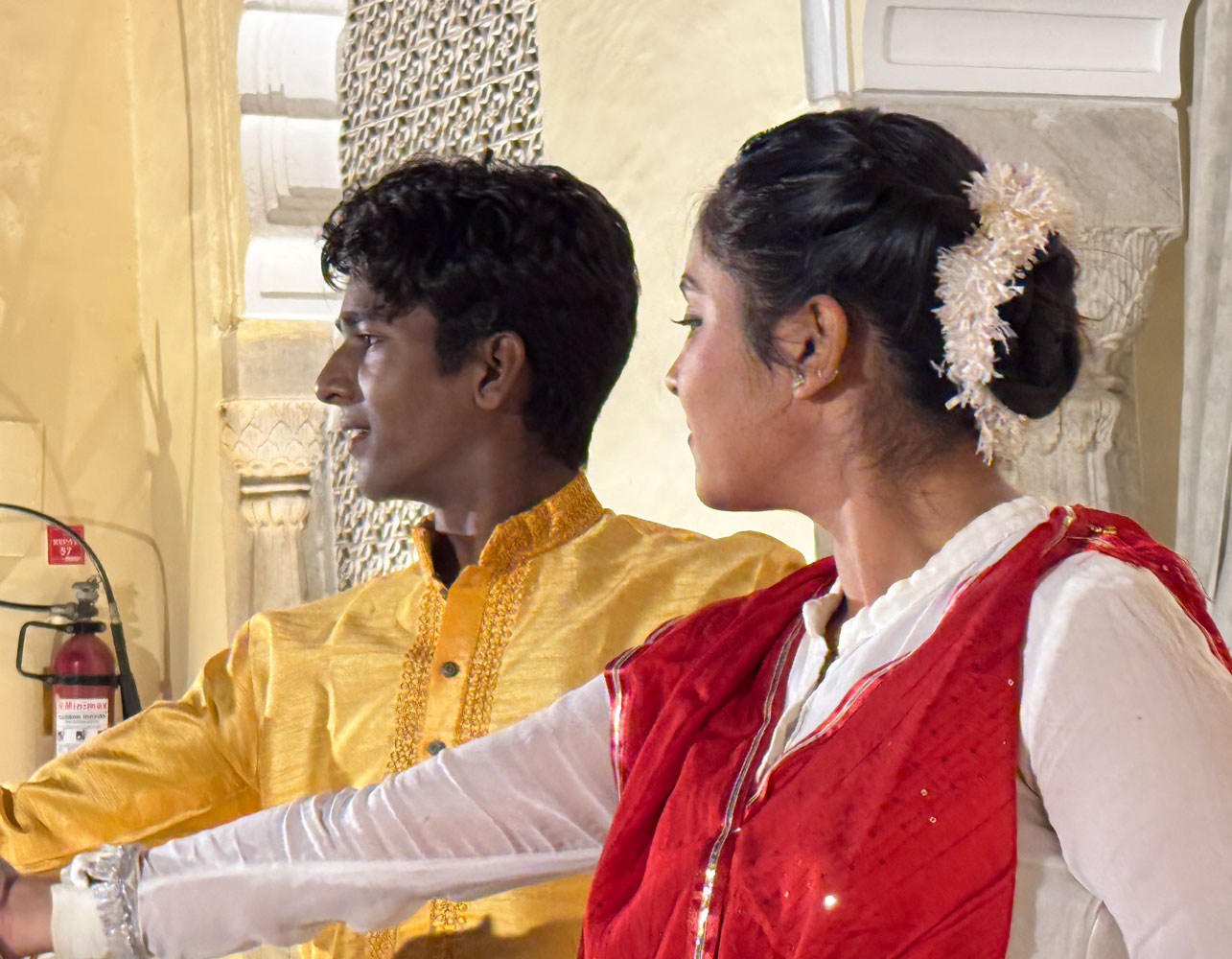
They performed several dances, and held our interest. Overall, the male dancer was a better dancer and better looking:-)
When they finished their performance, we began dinner, which was a very good buffet.
After dinner, Judy and I walked around the hotel and I took a few pictures.
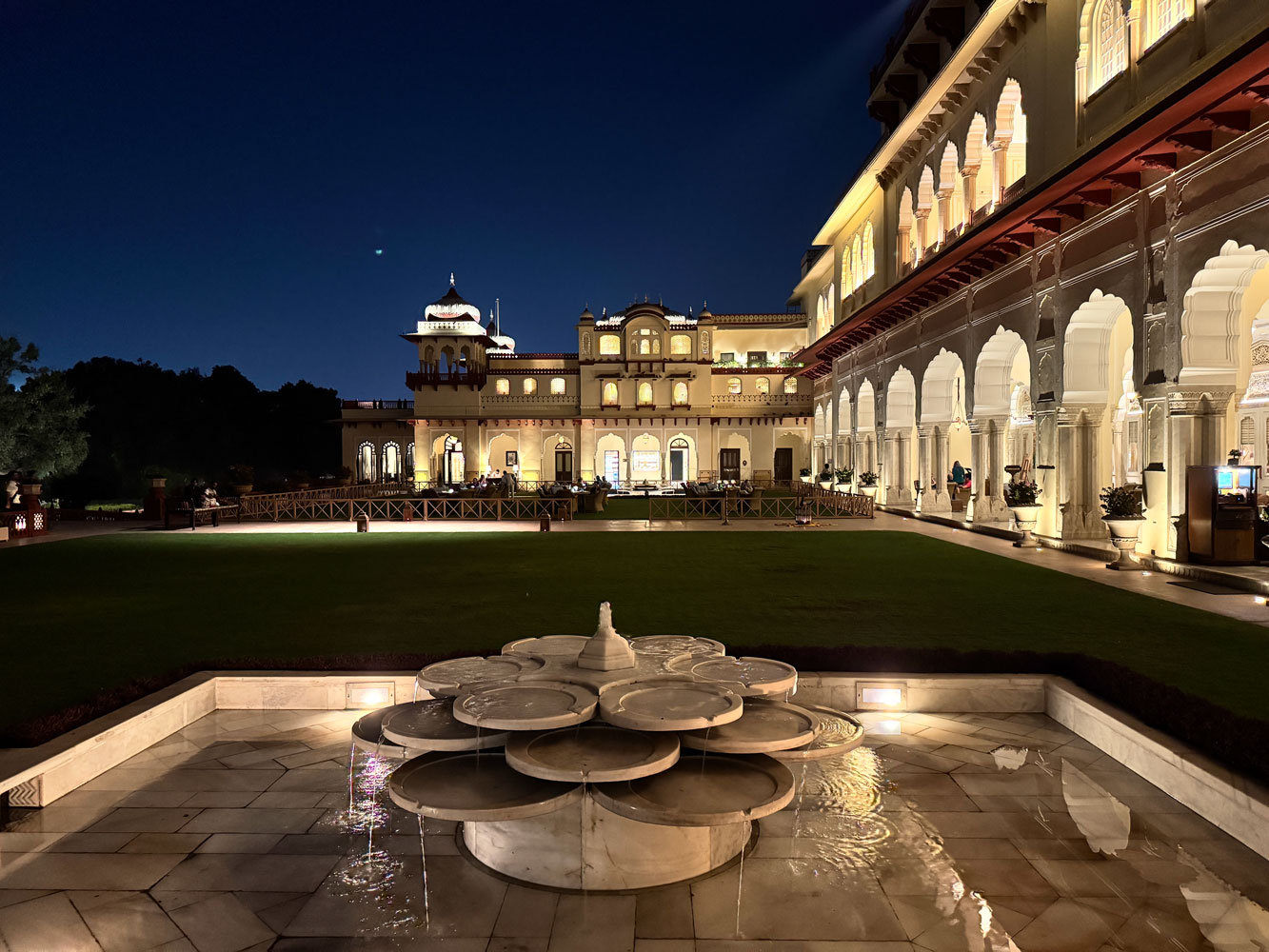

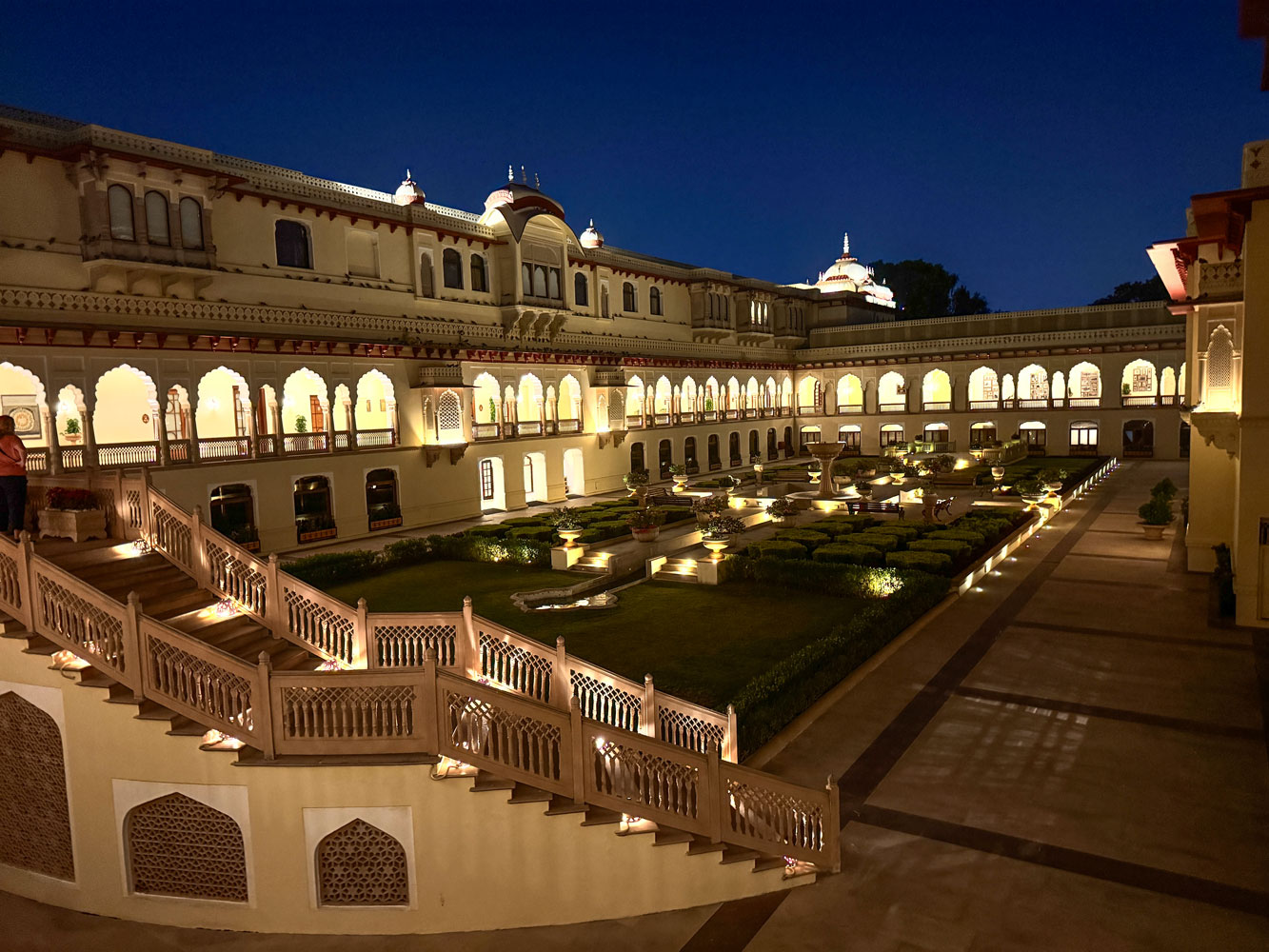
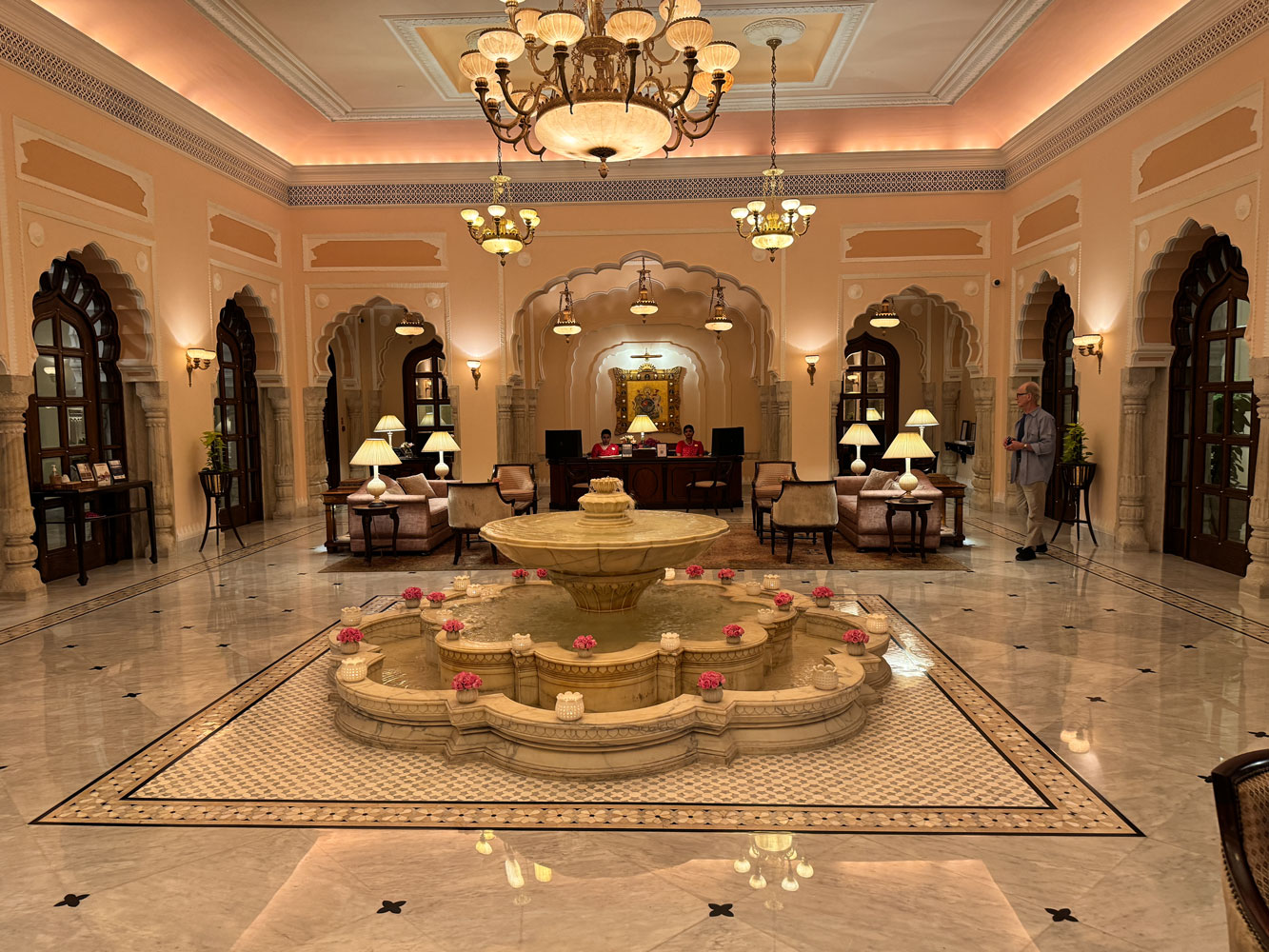
That was the end of our busy day. We took the bus back to our hotel and Judy and I went to bed immediately. We have a fairly early day tomorrow, with a tour of Jaipur.